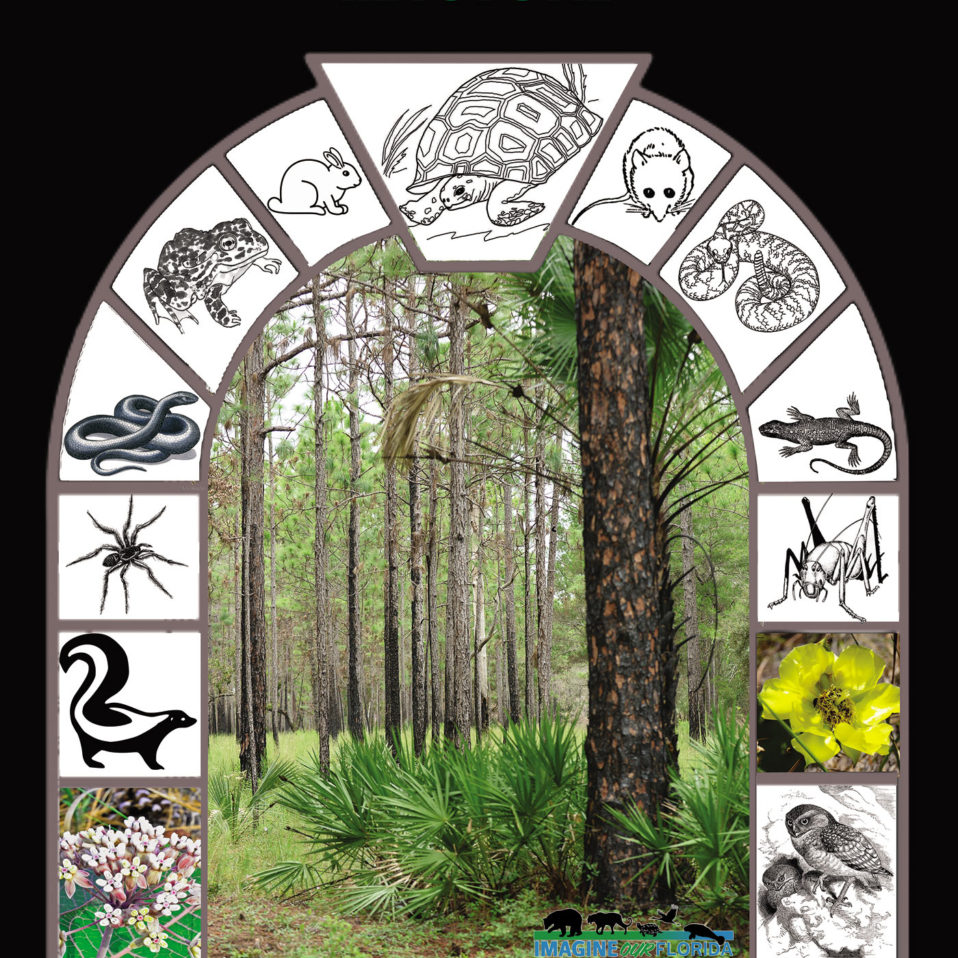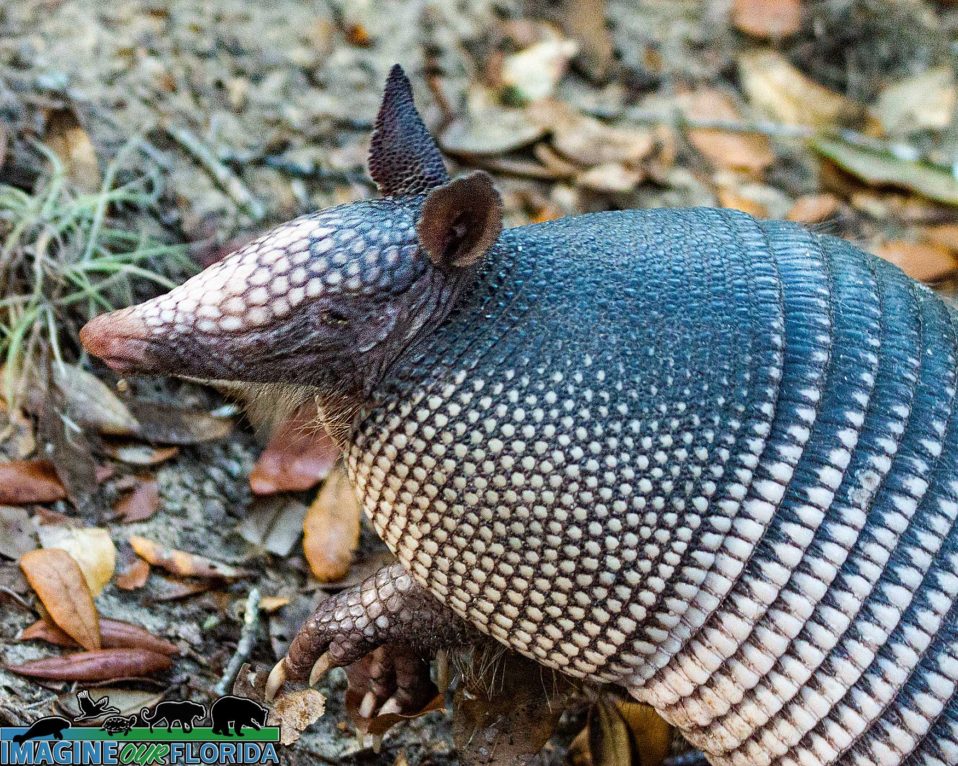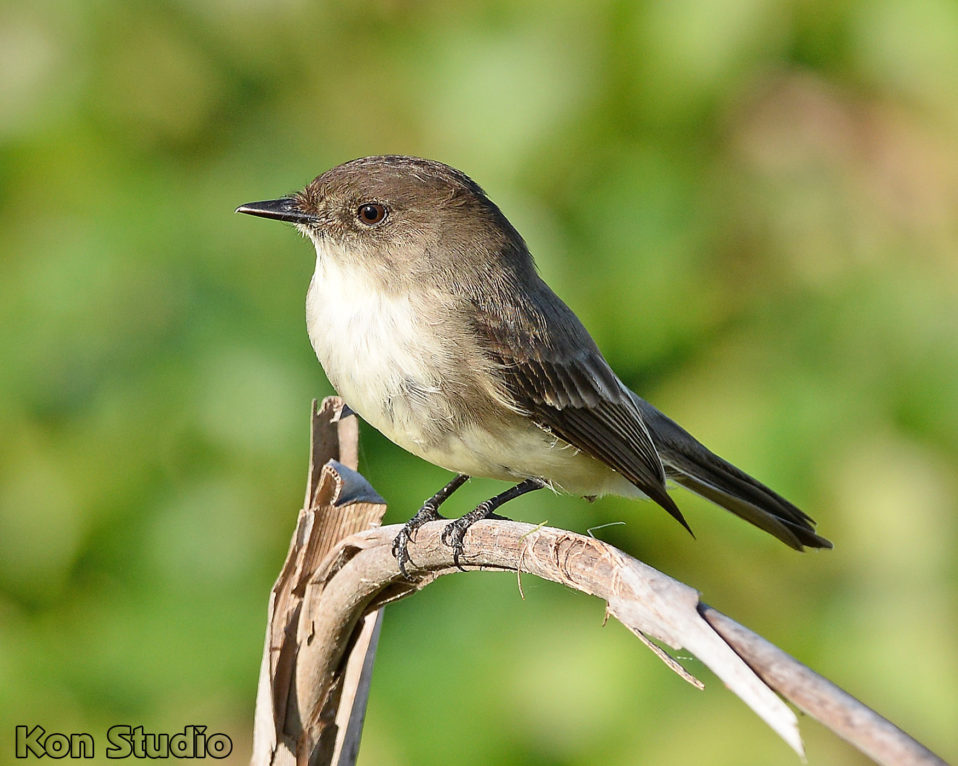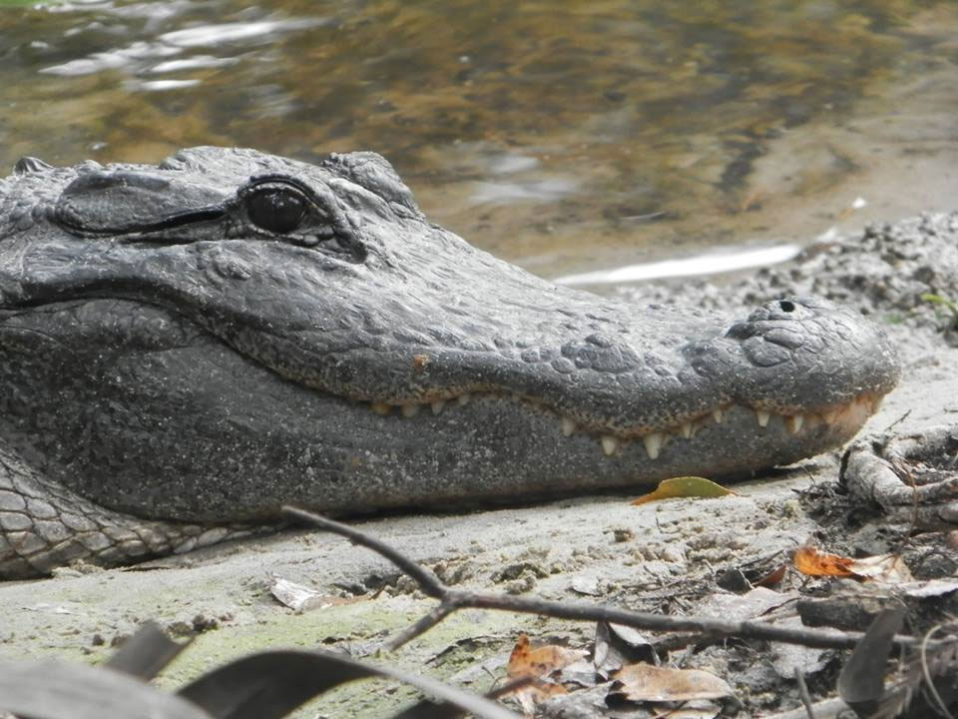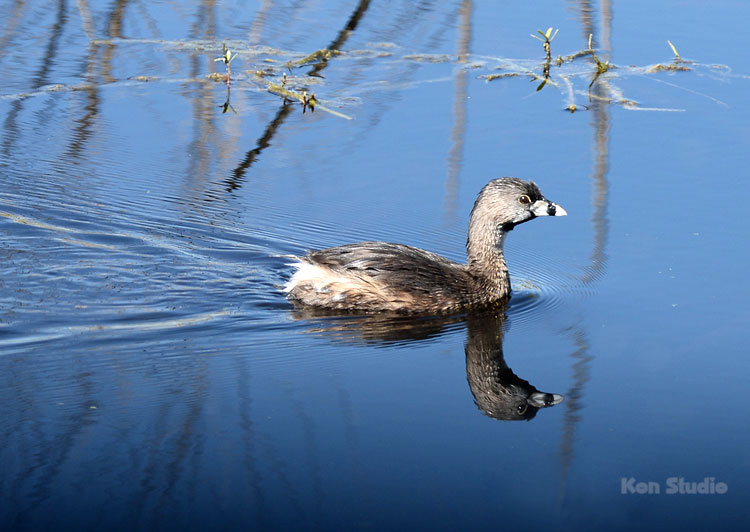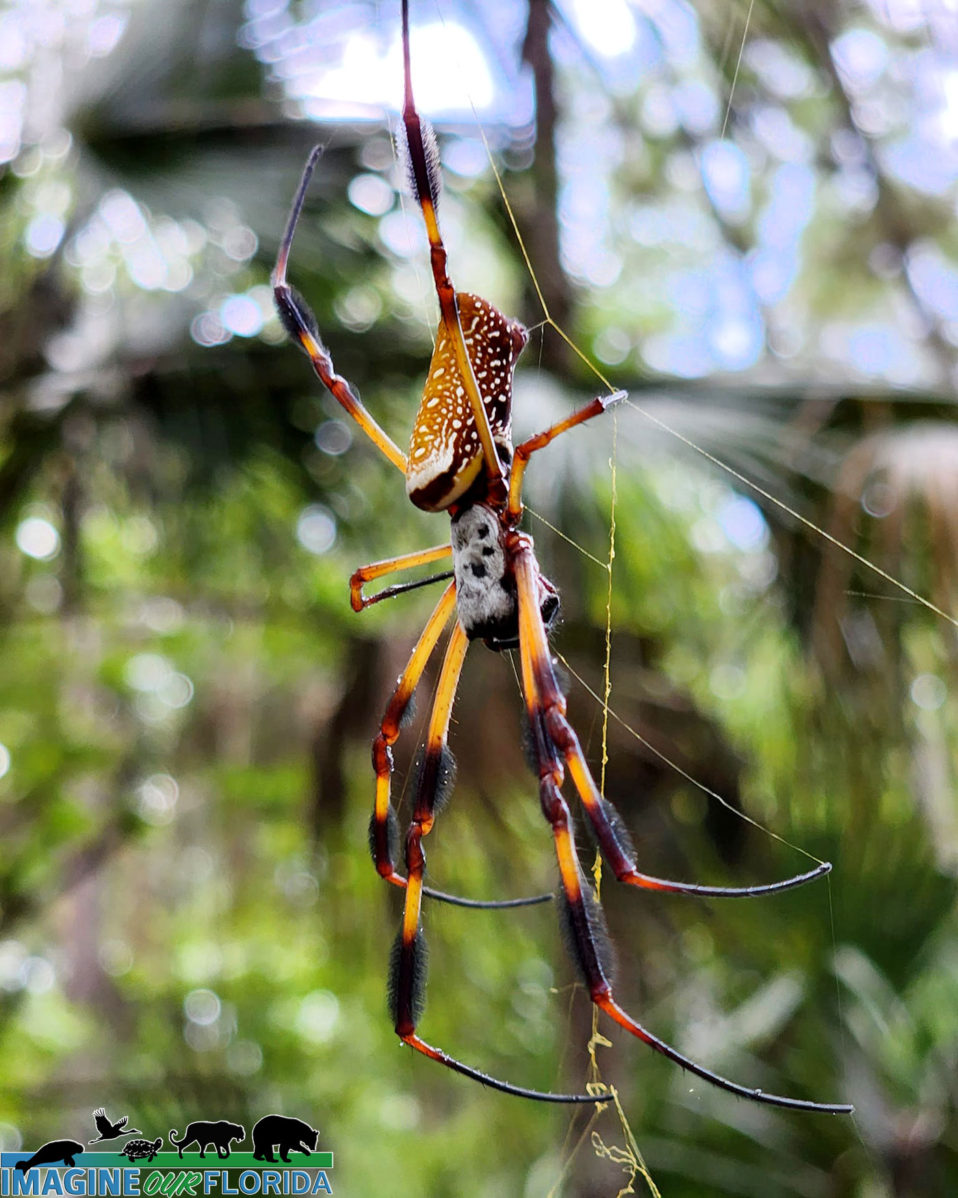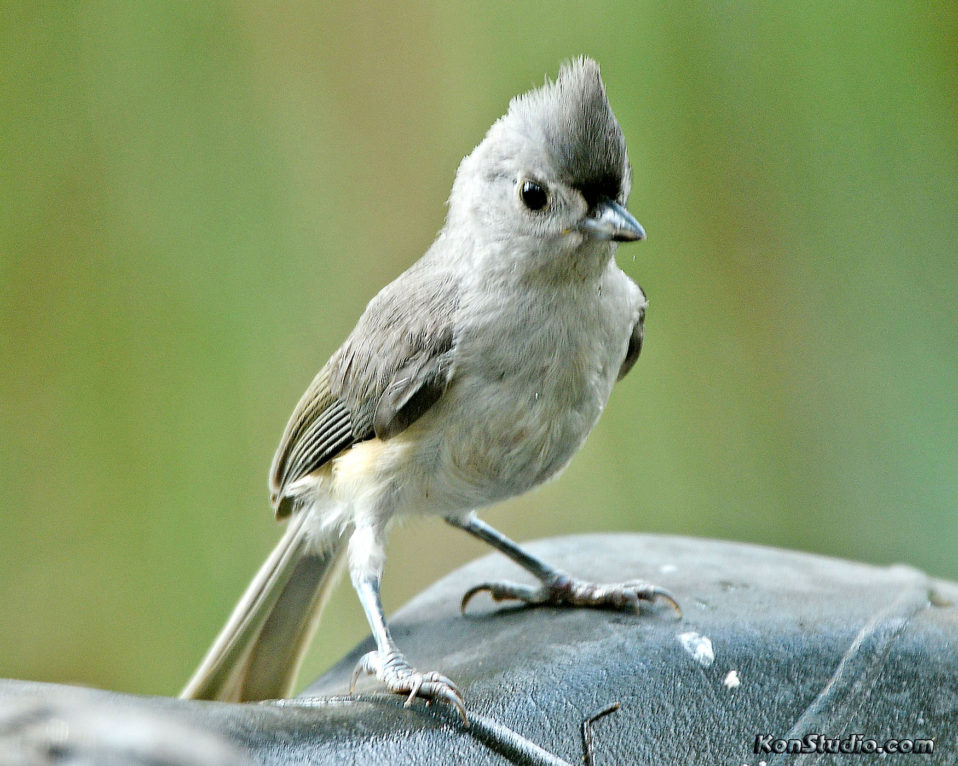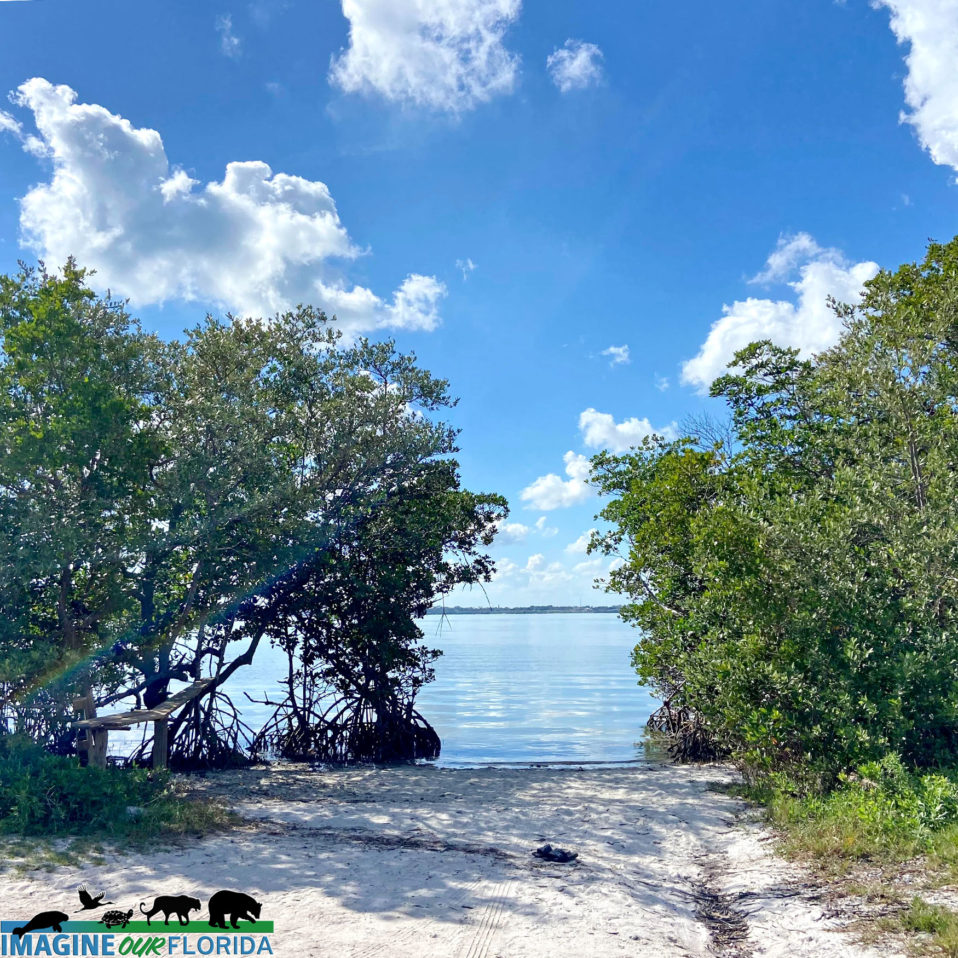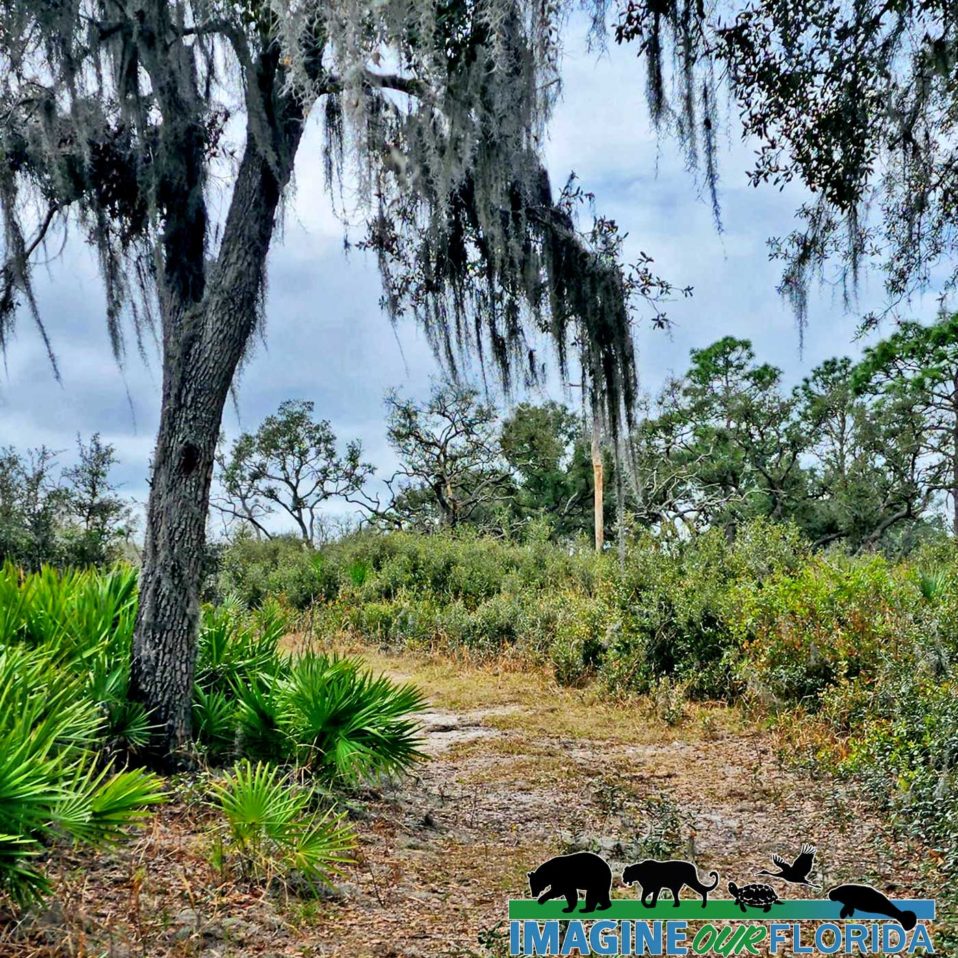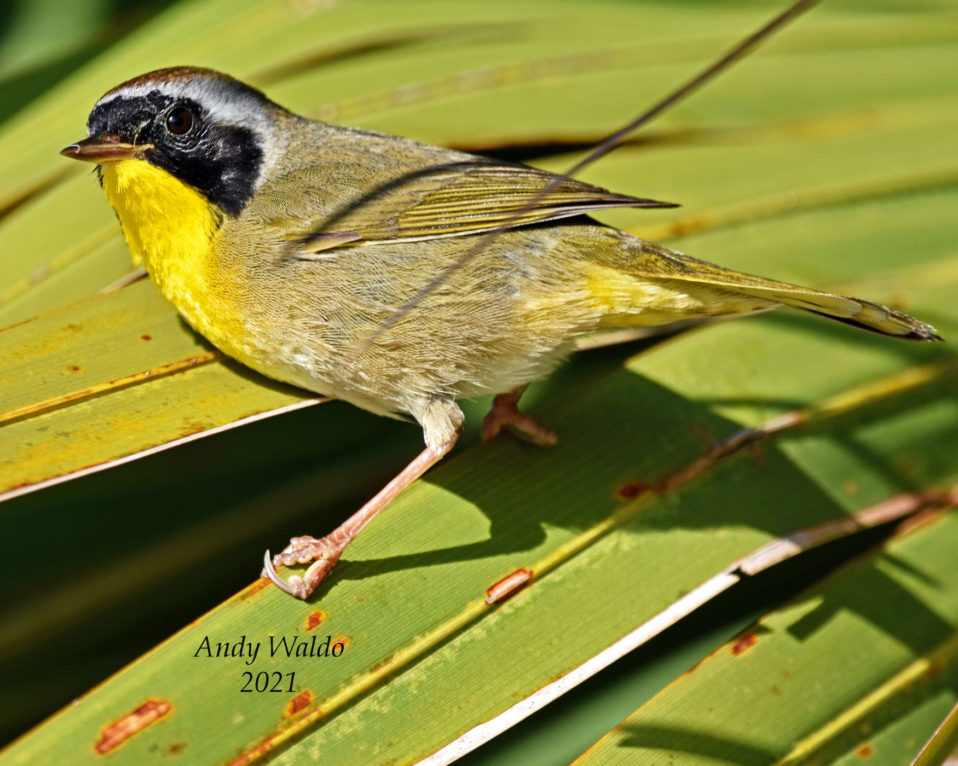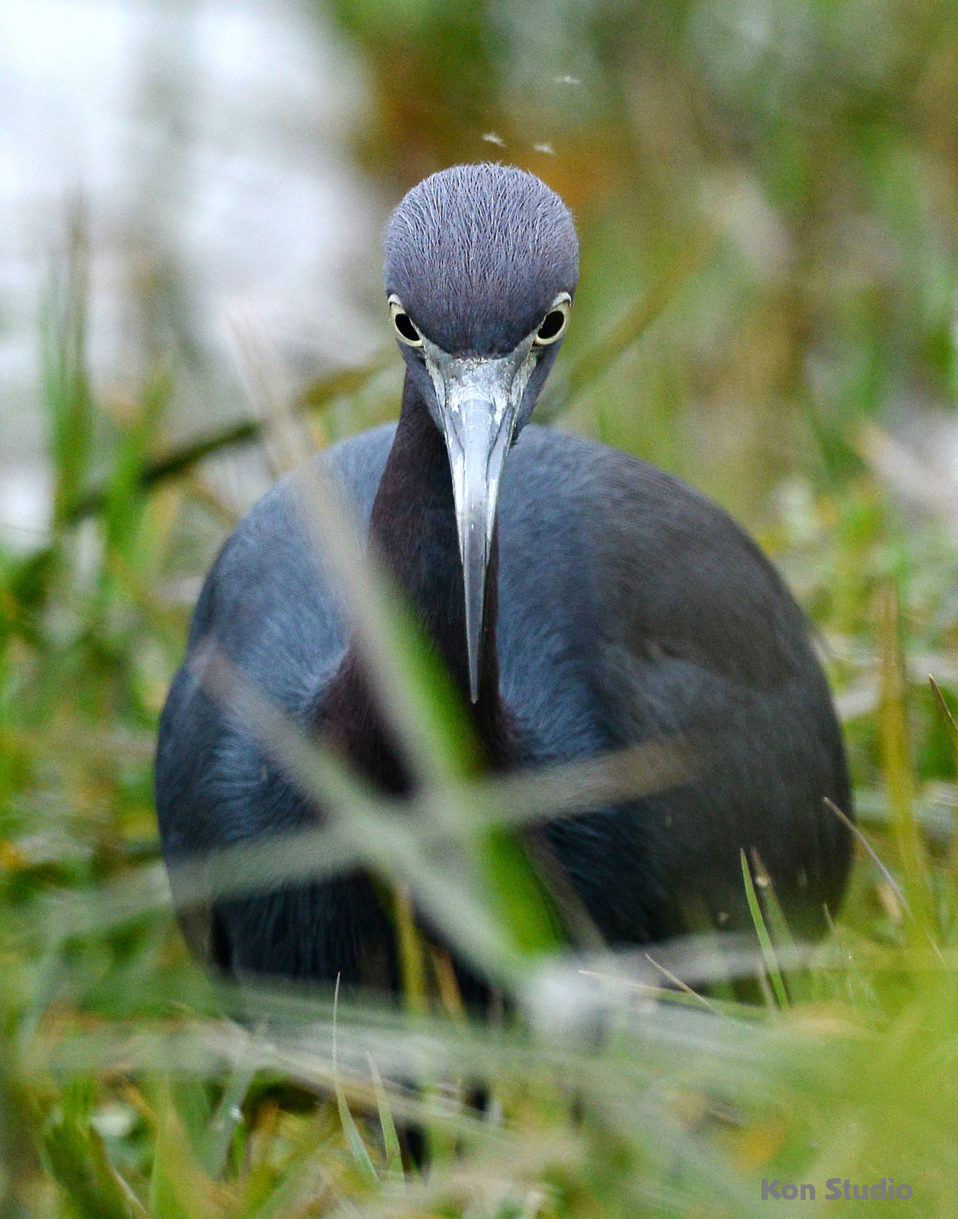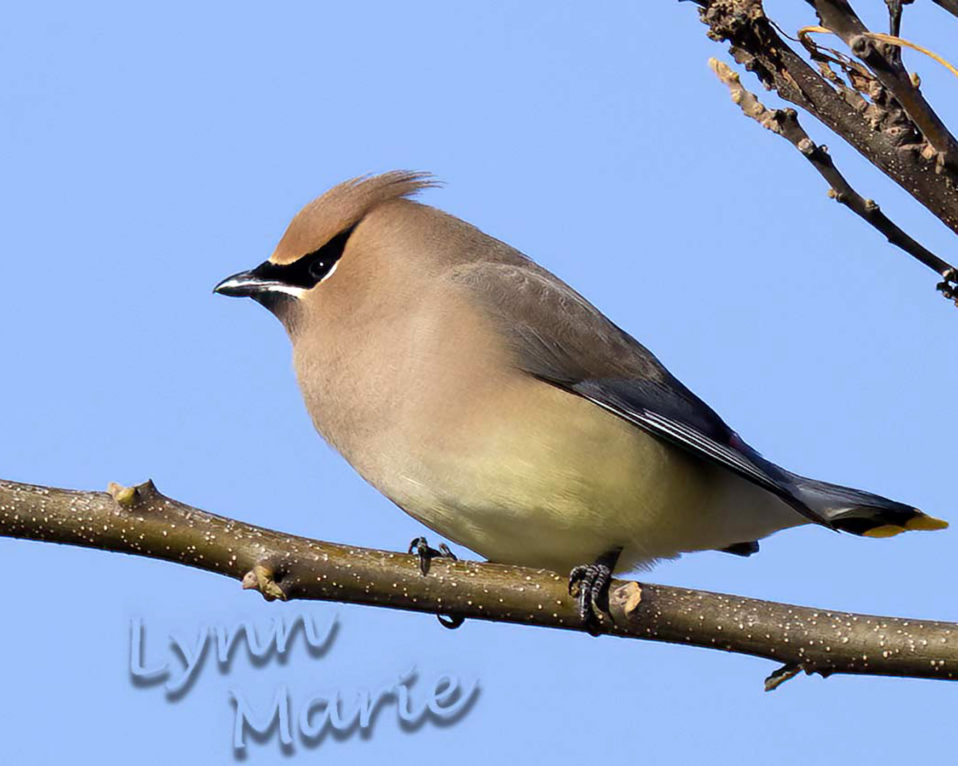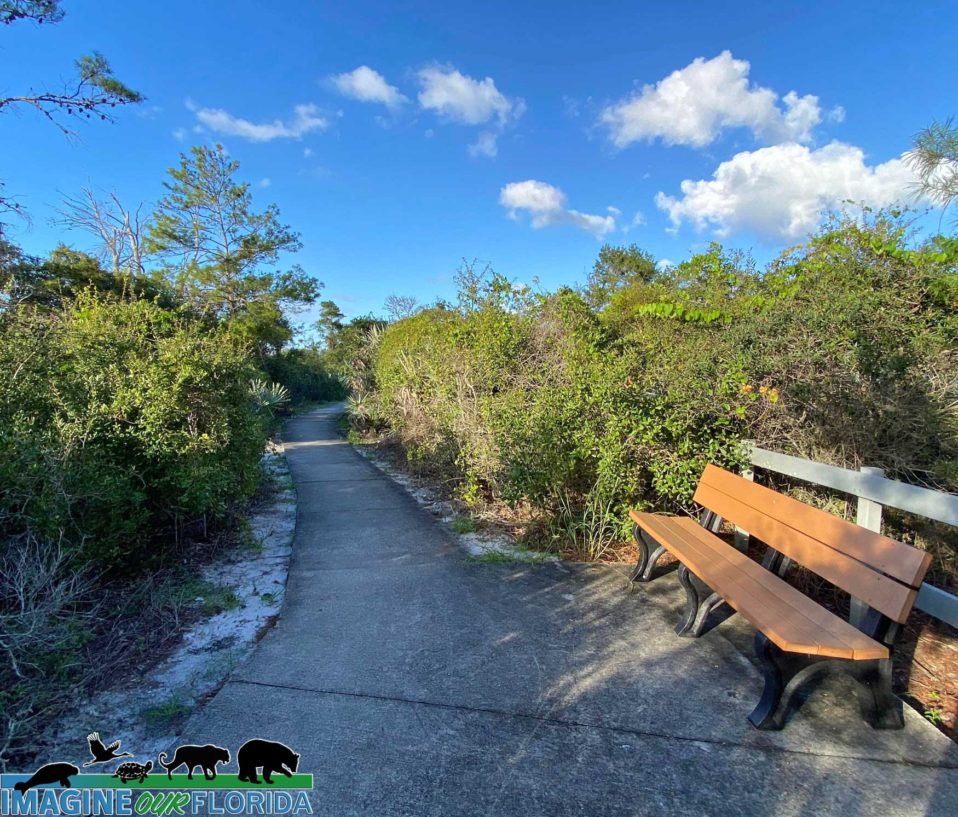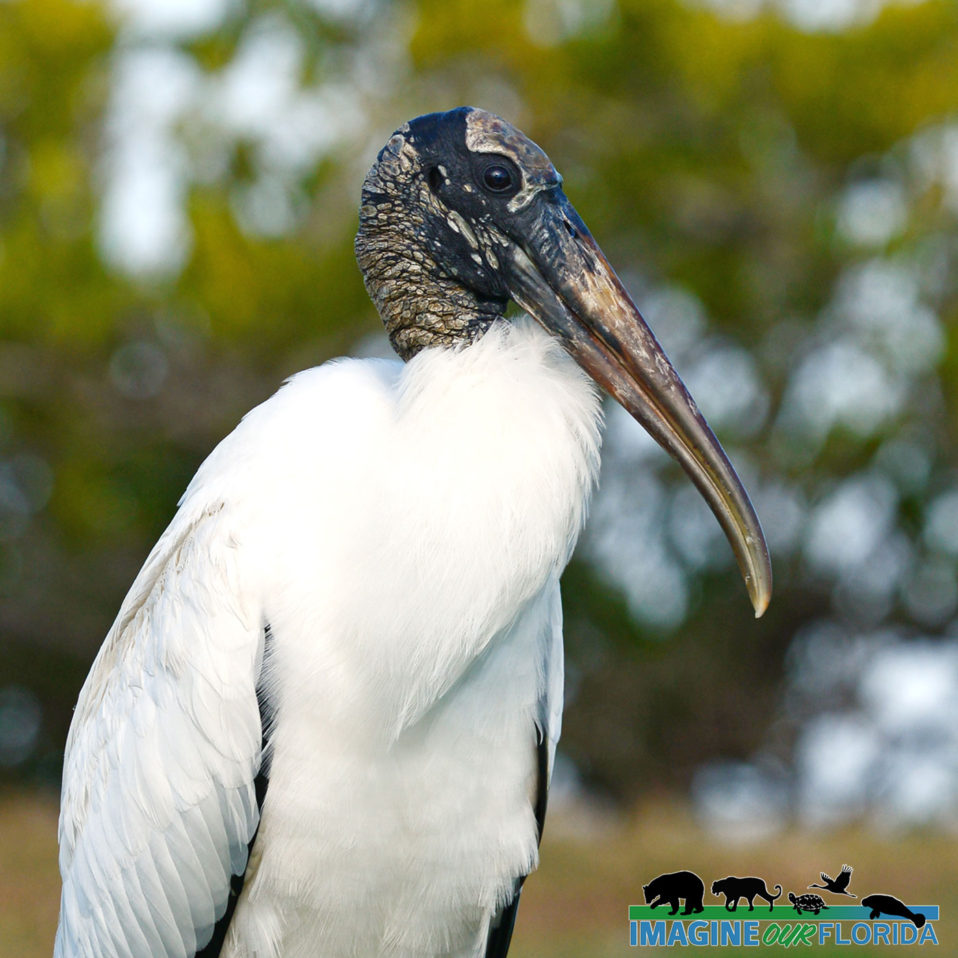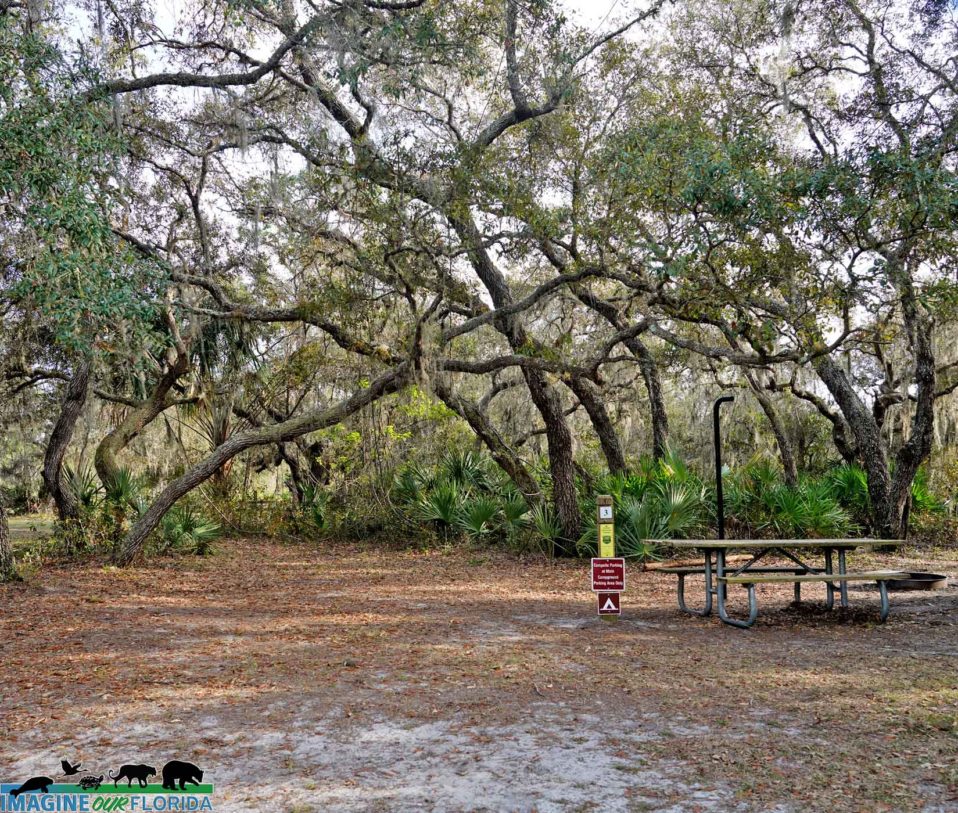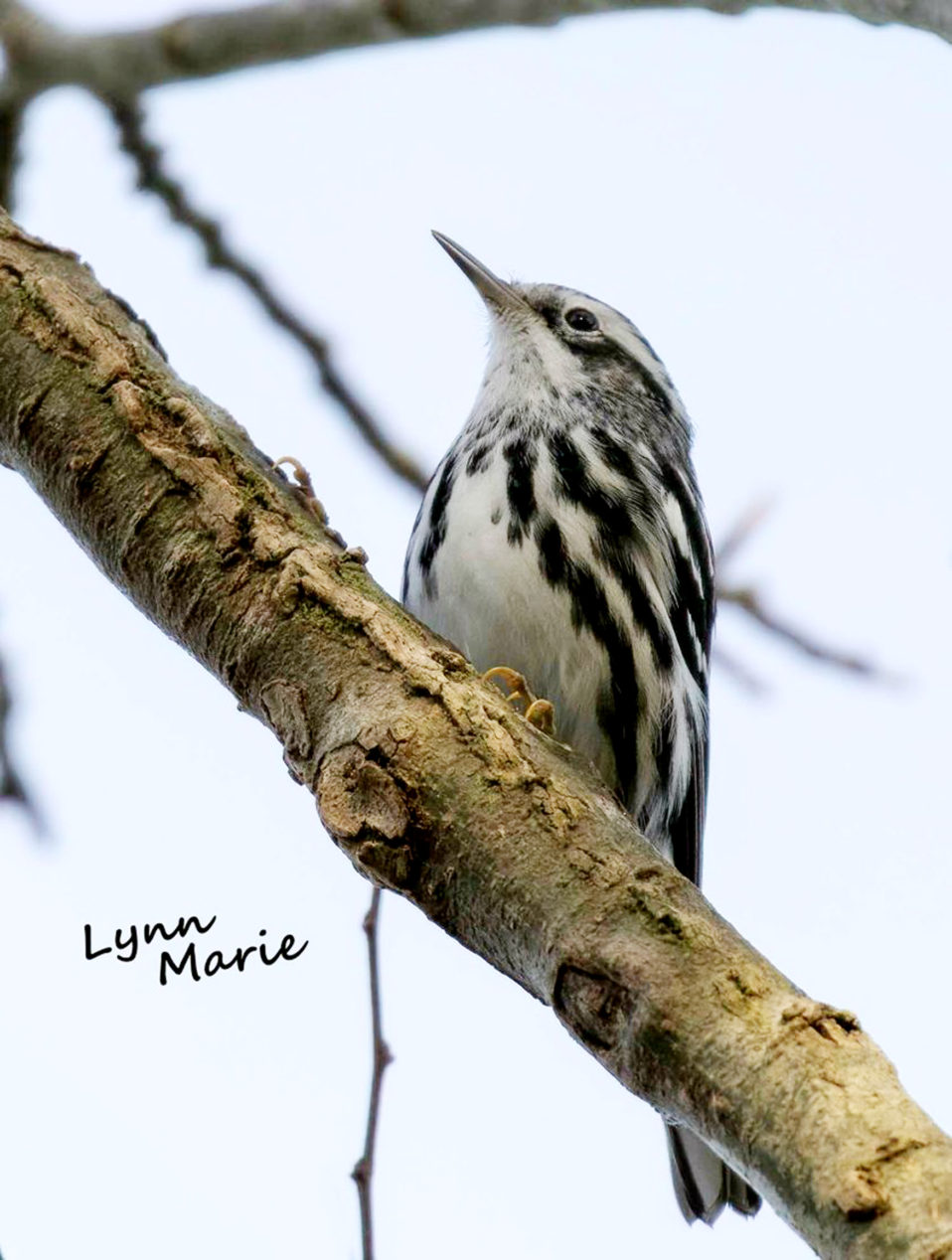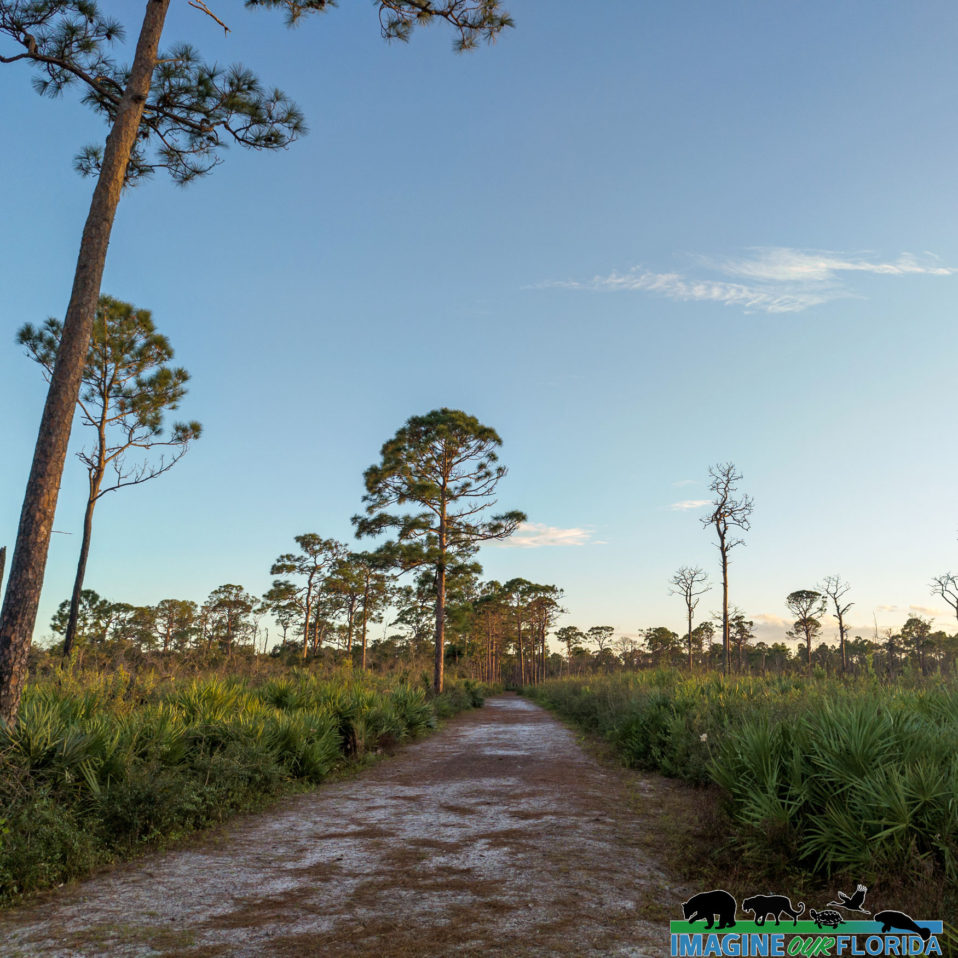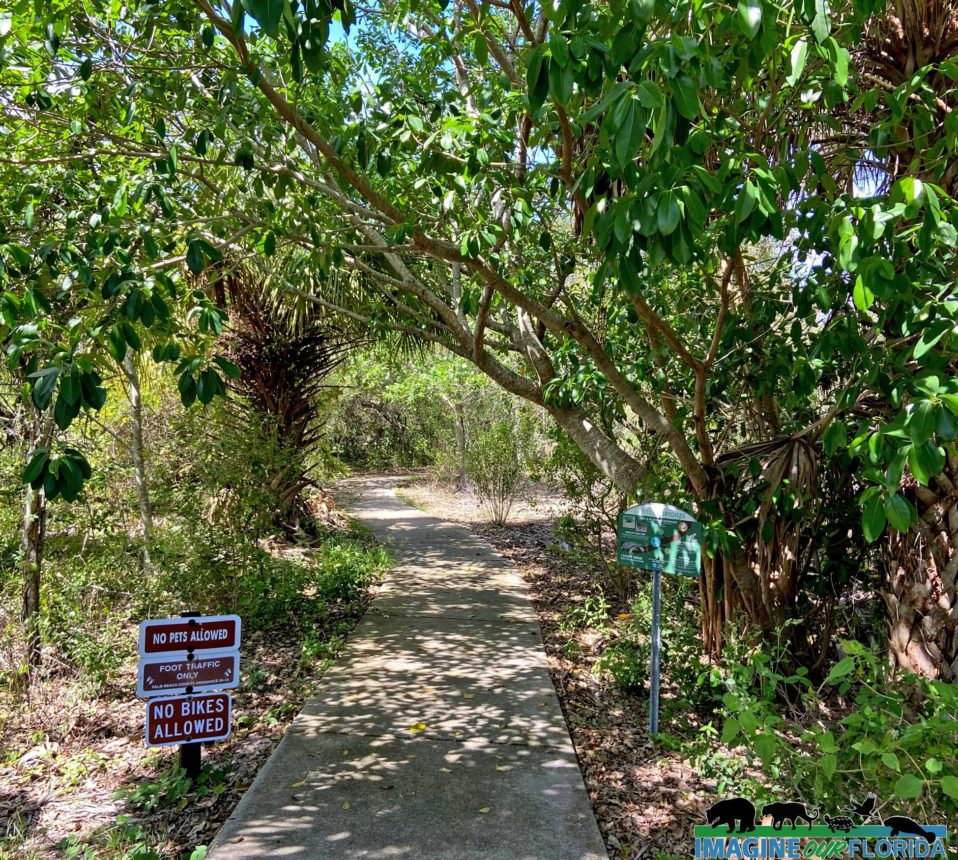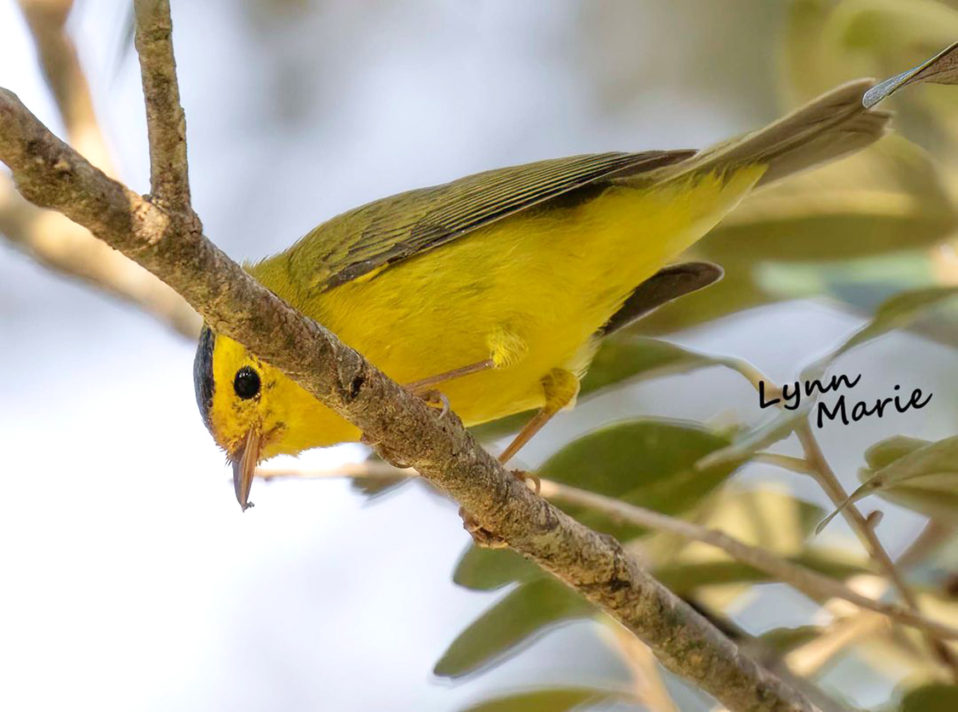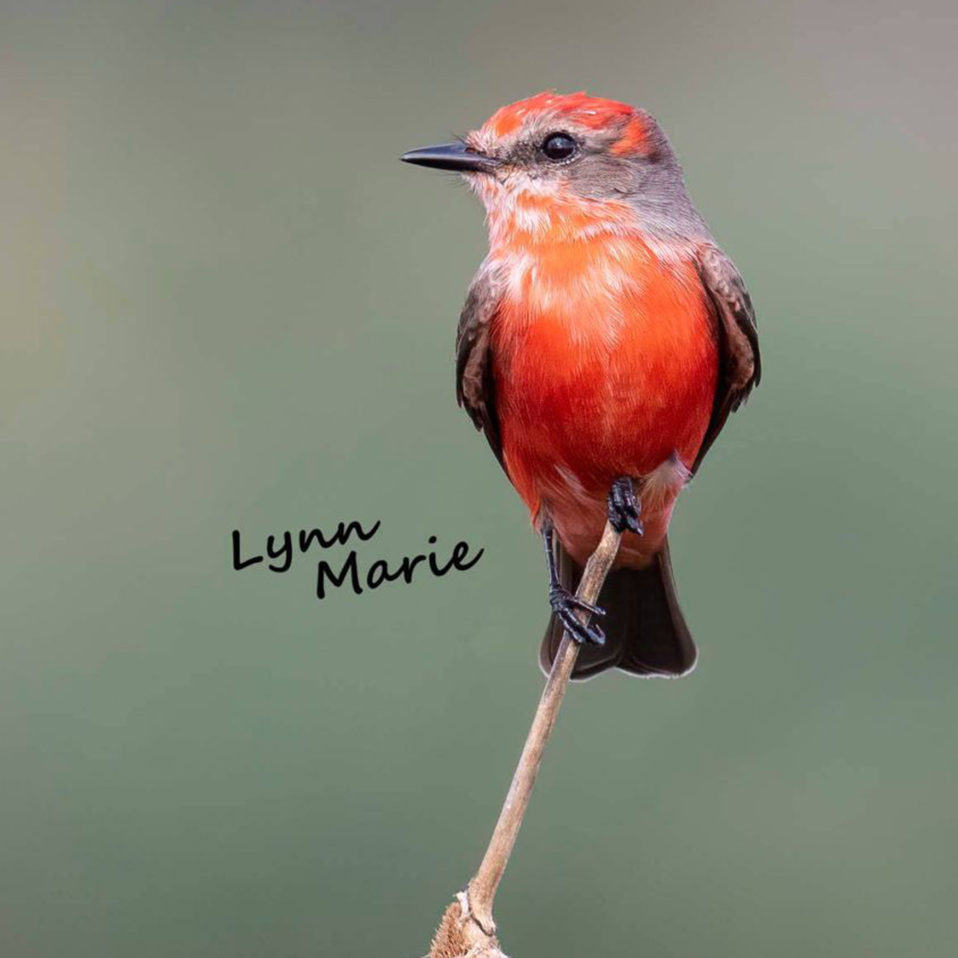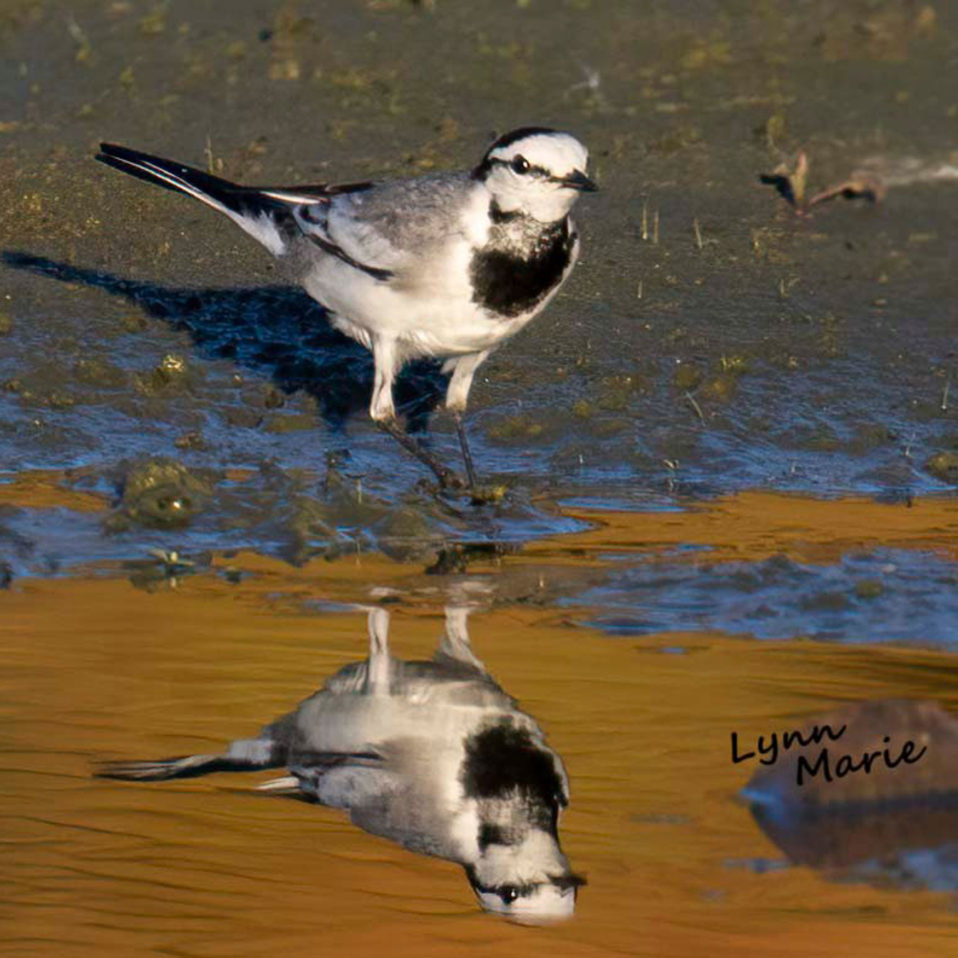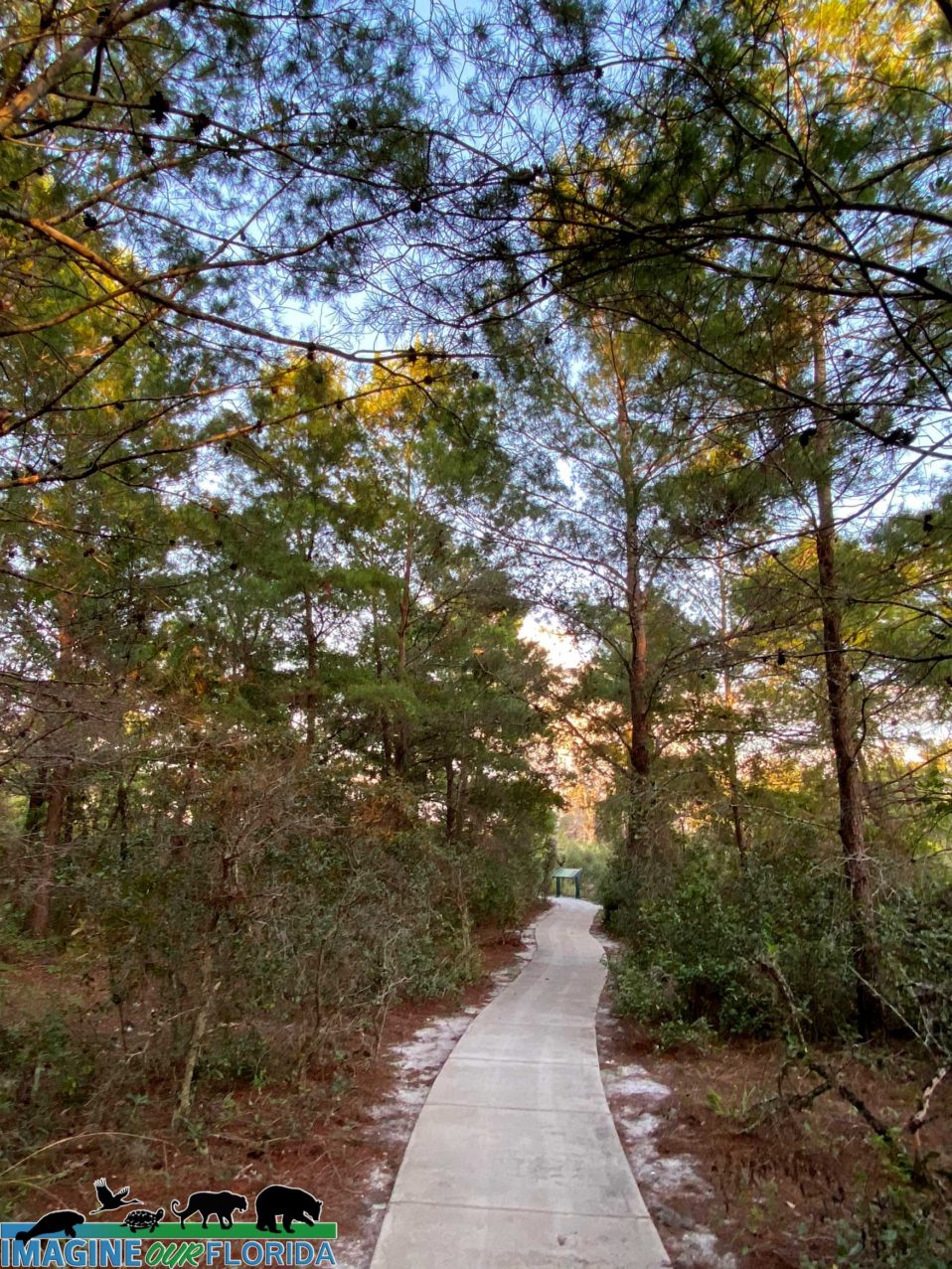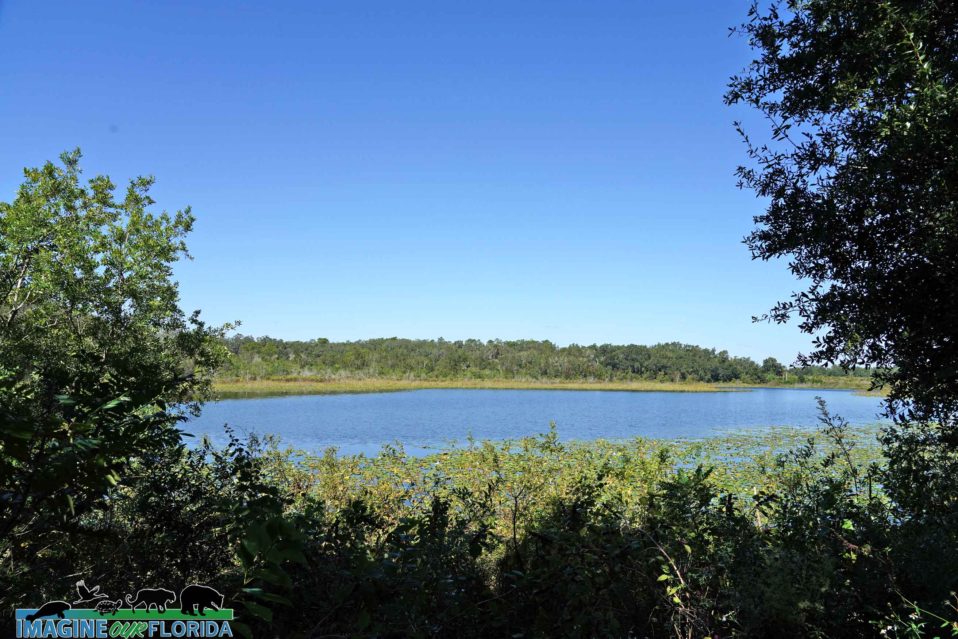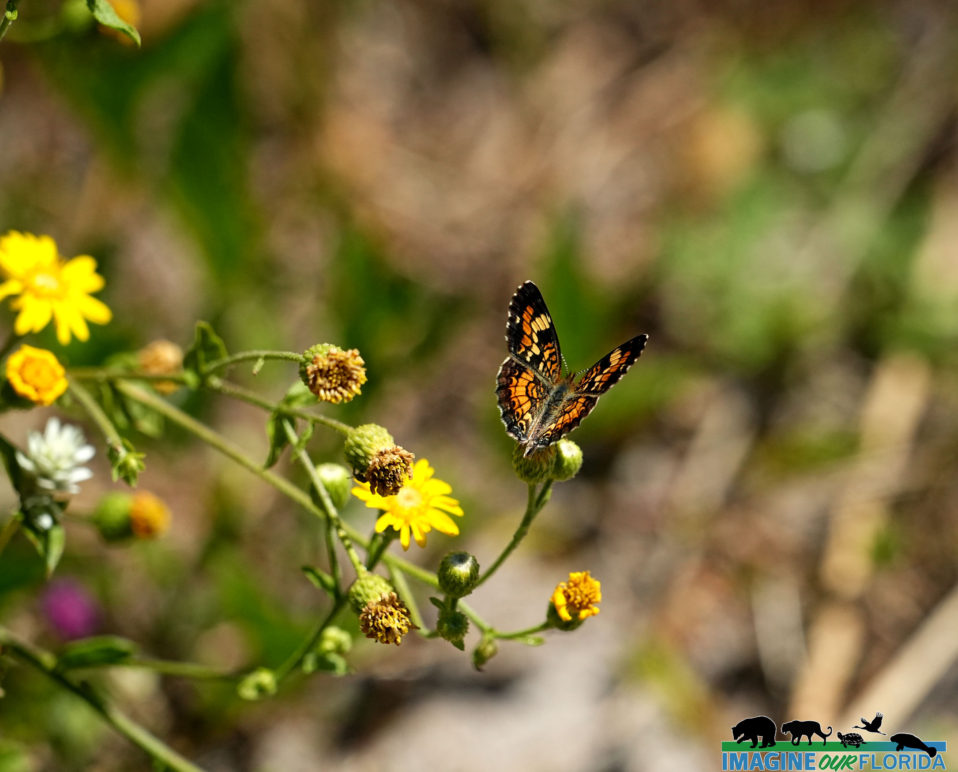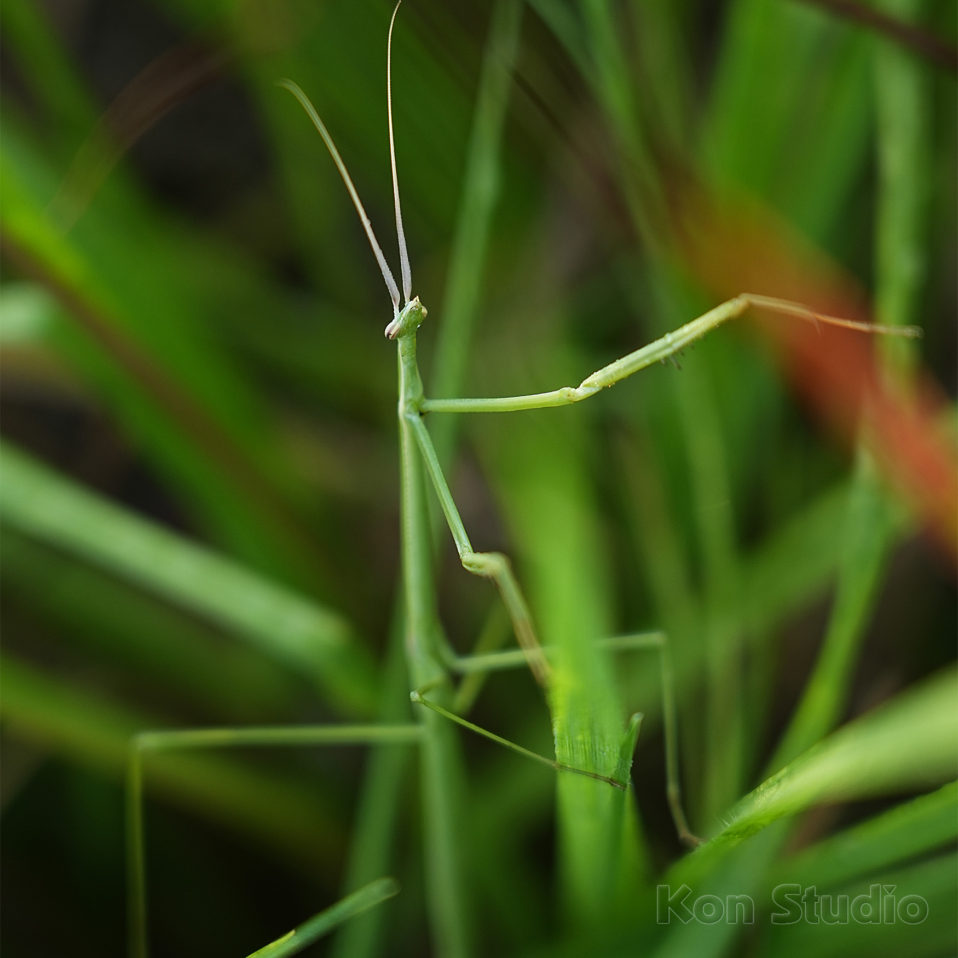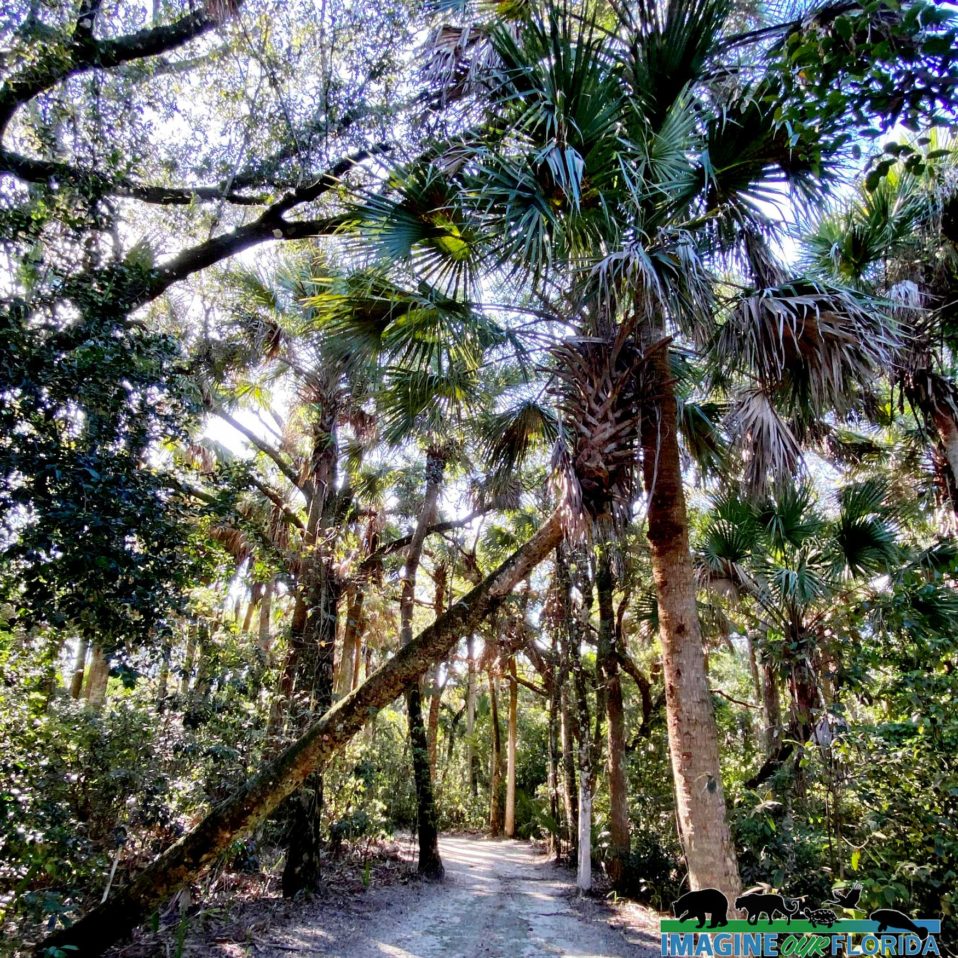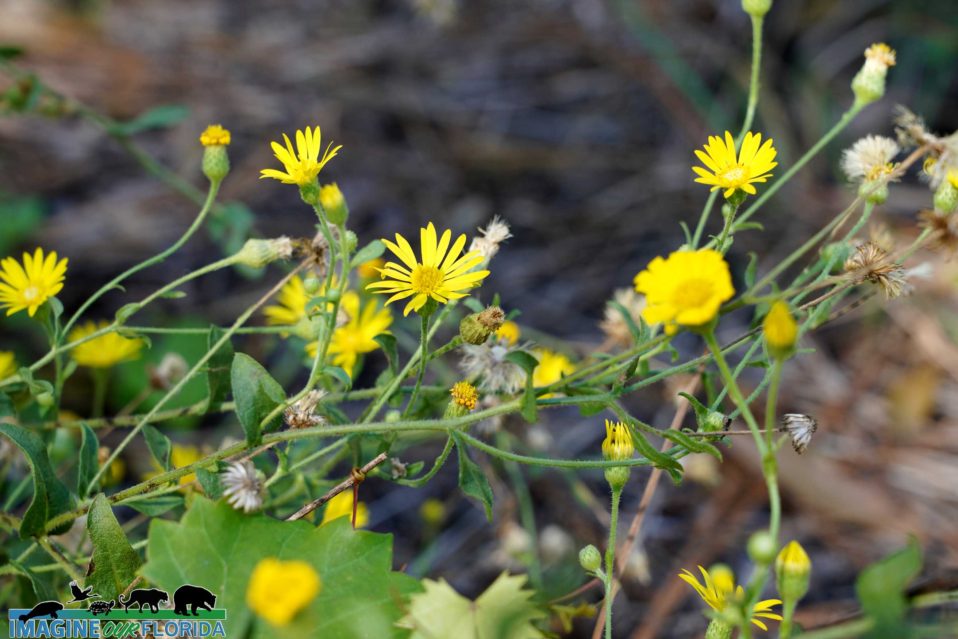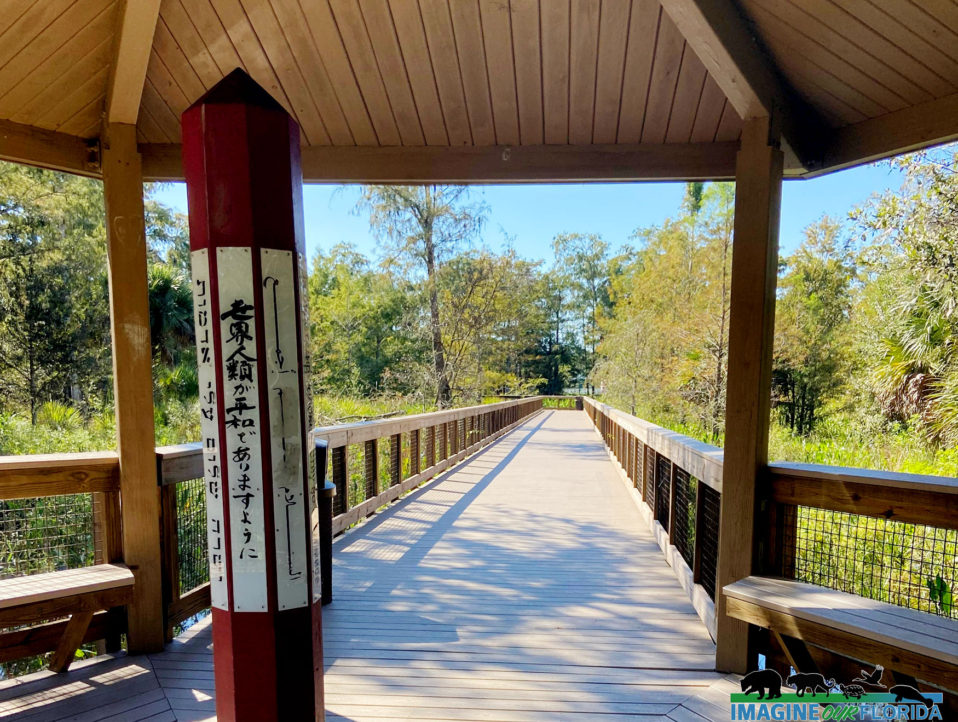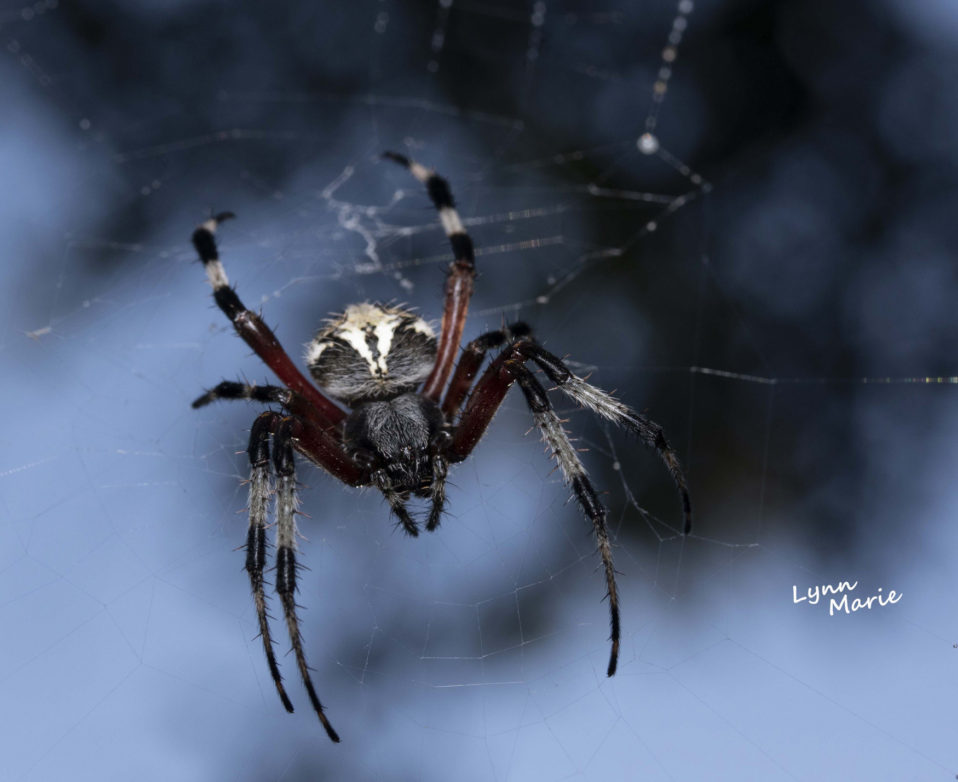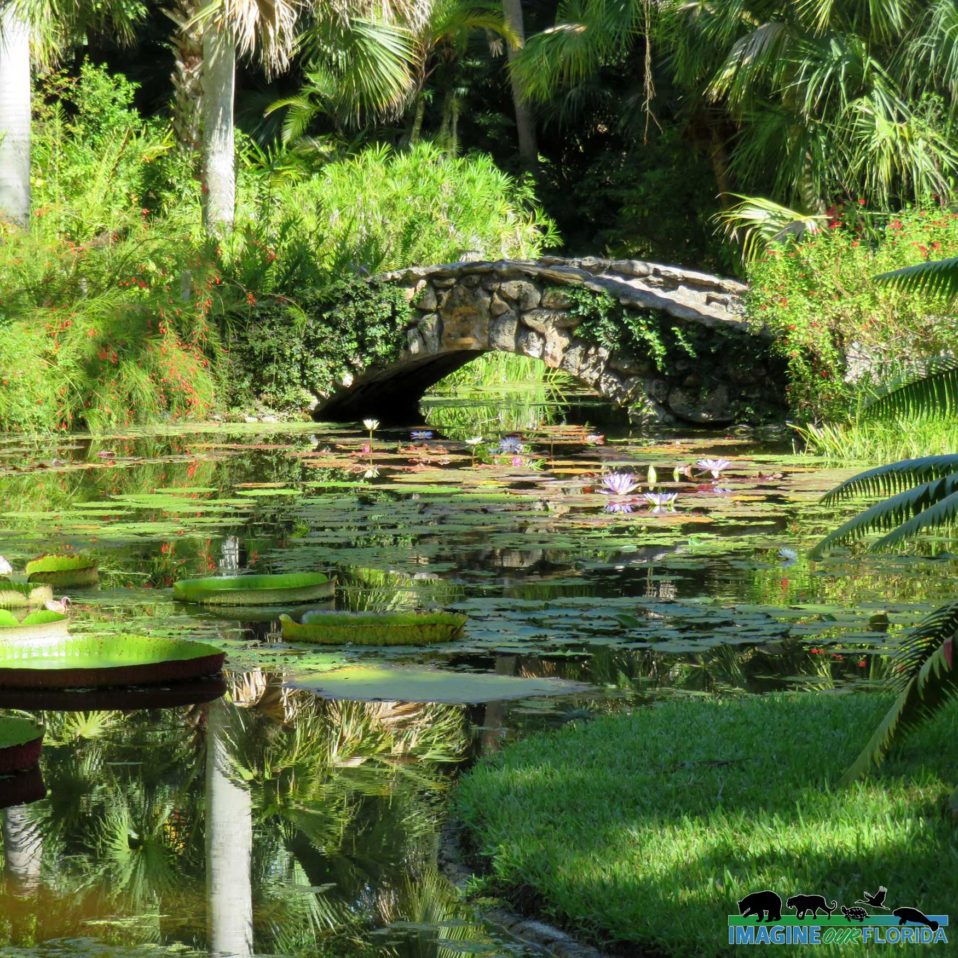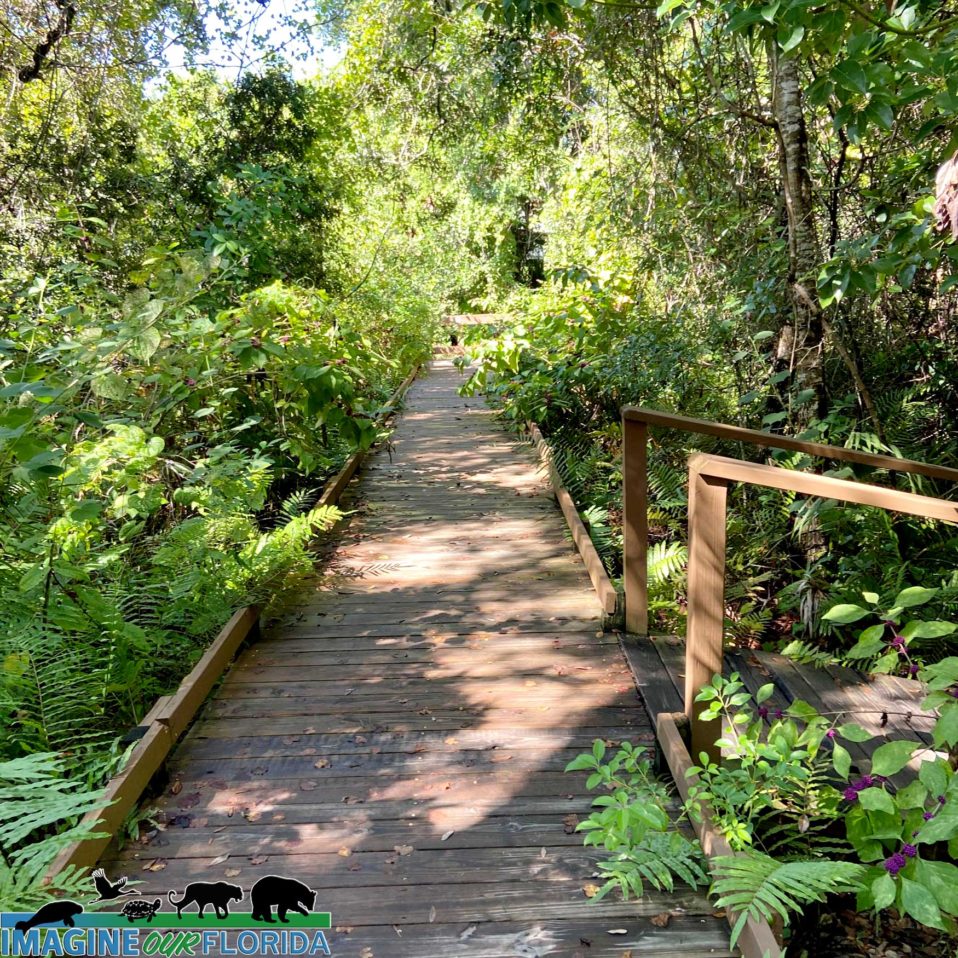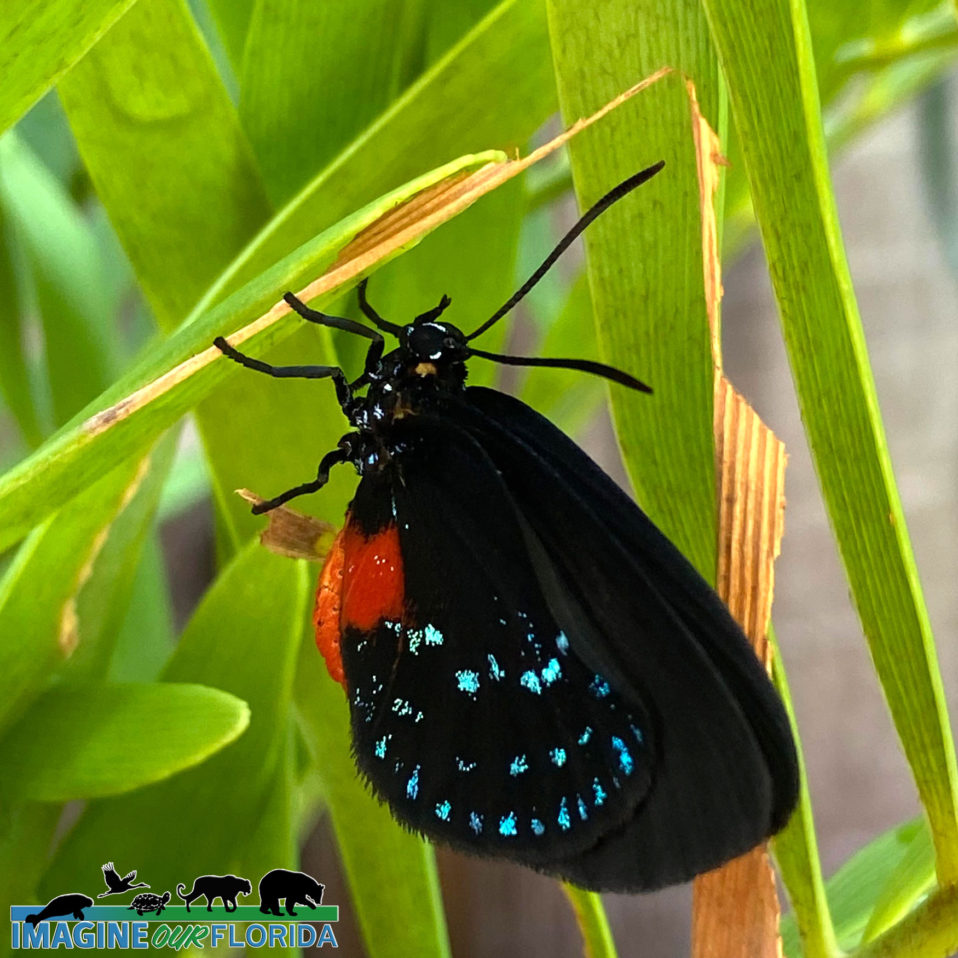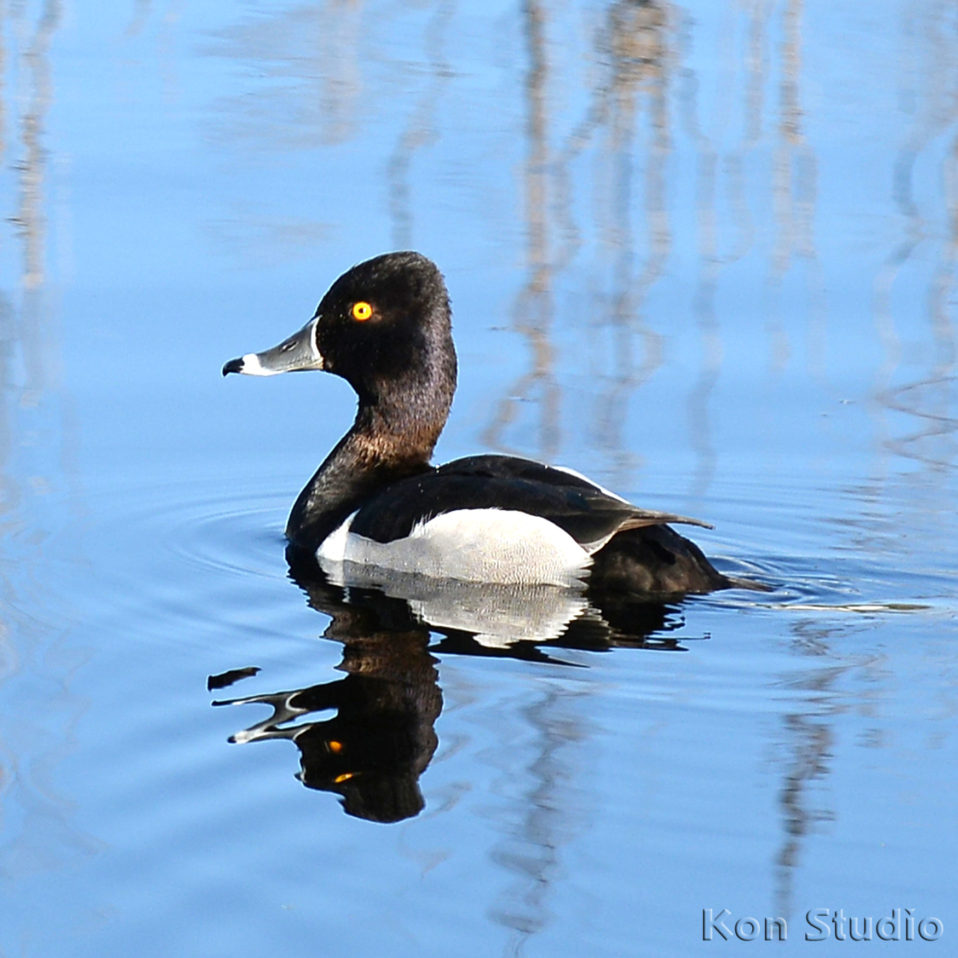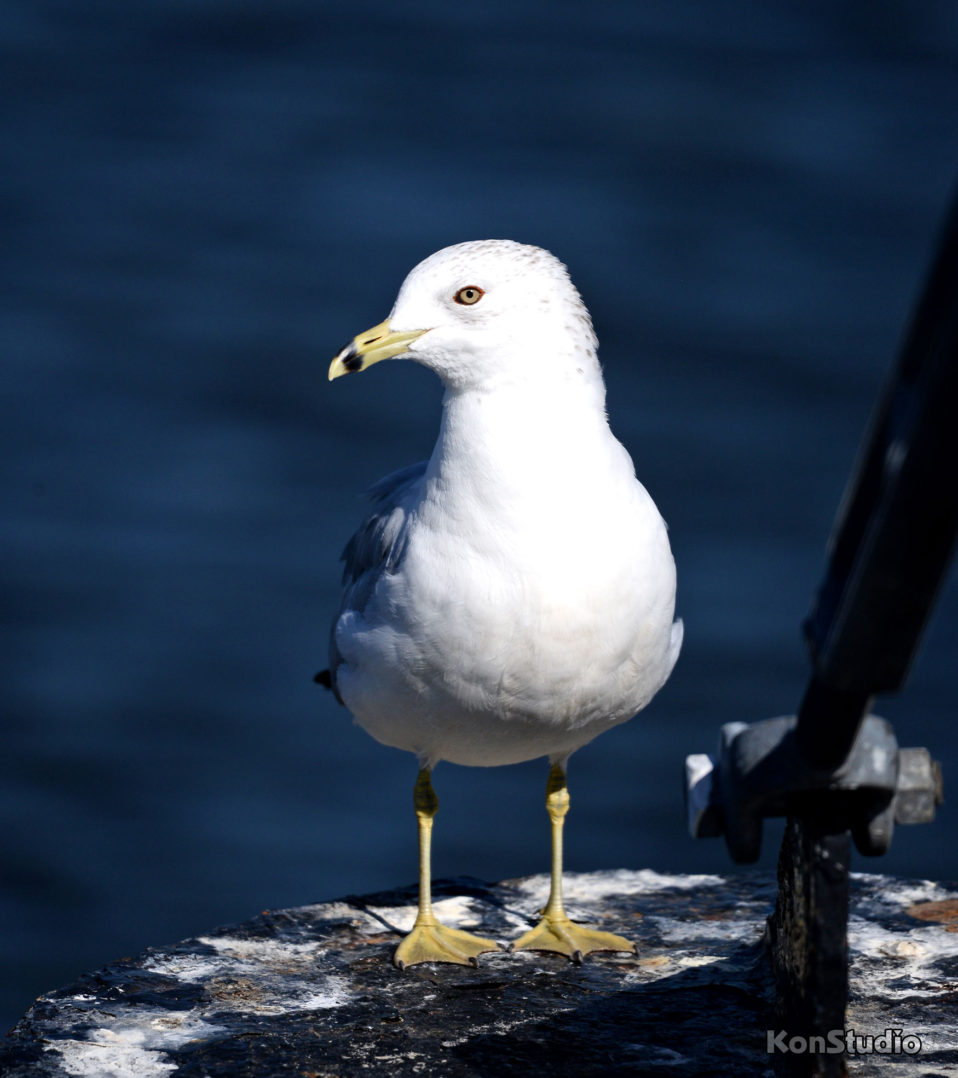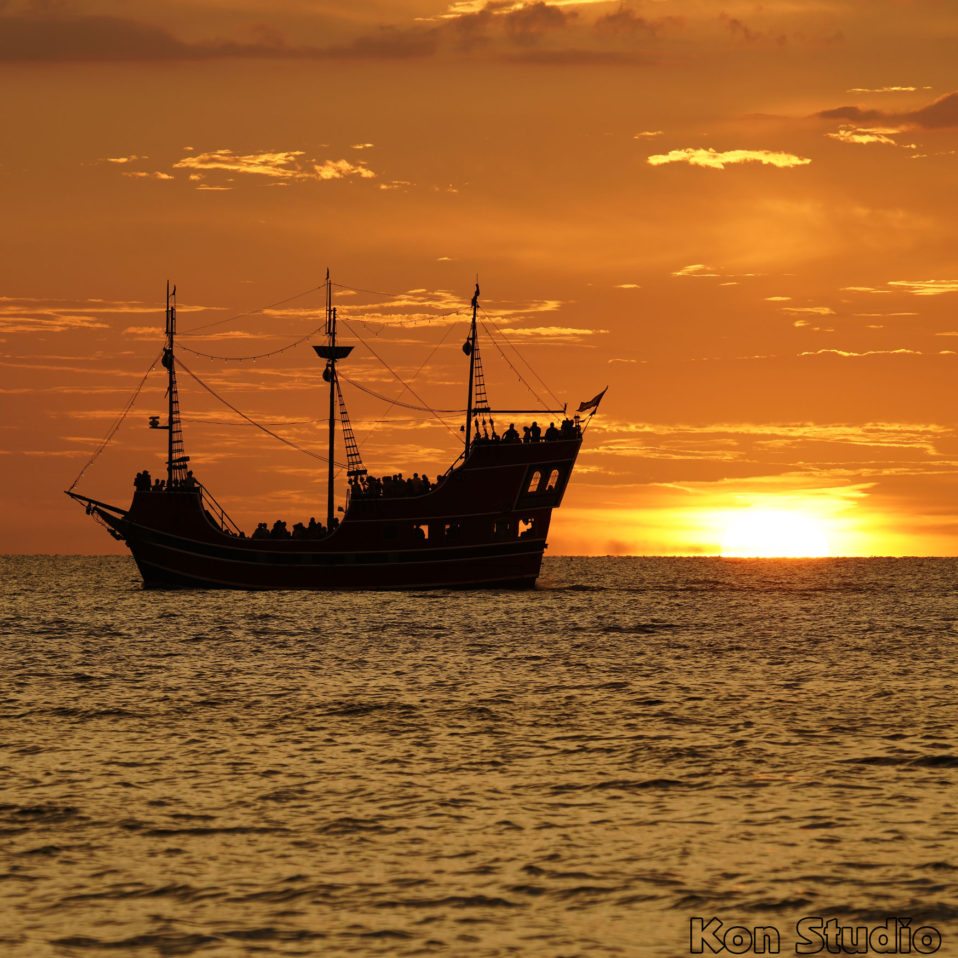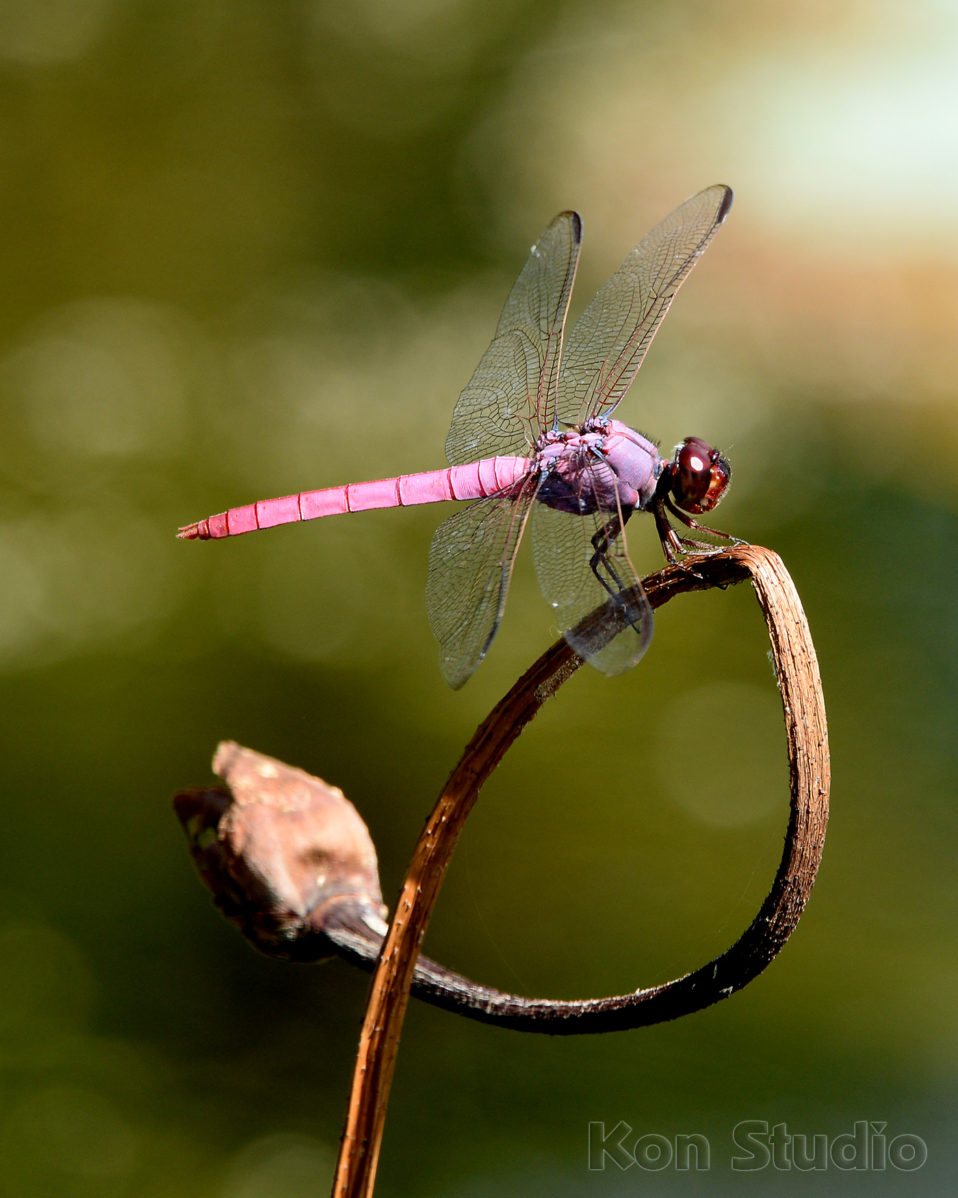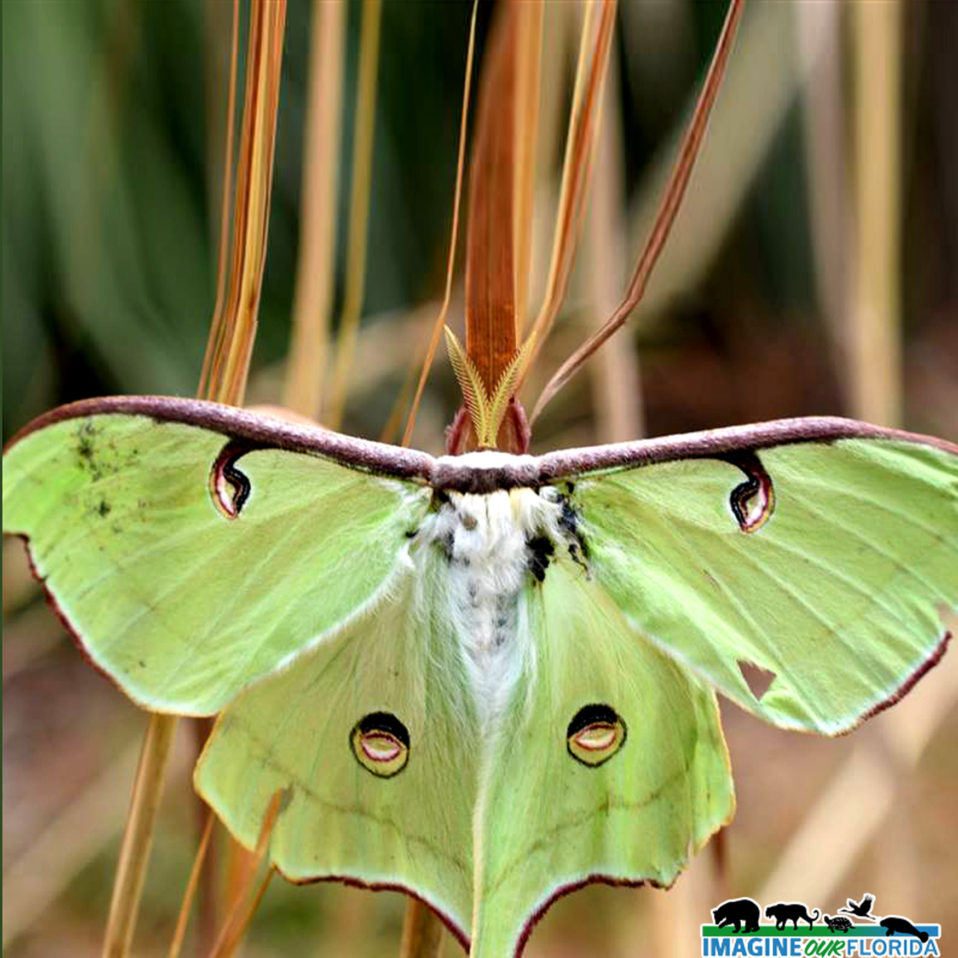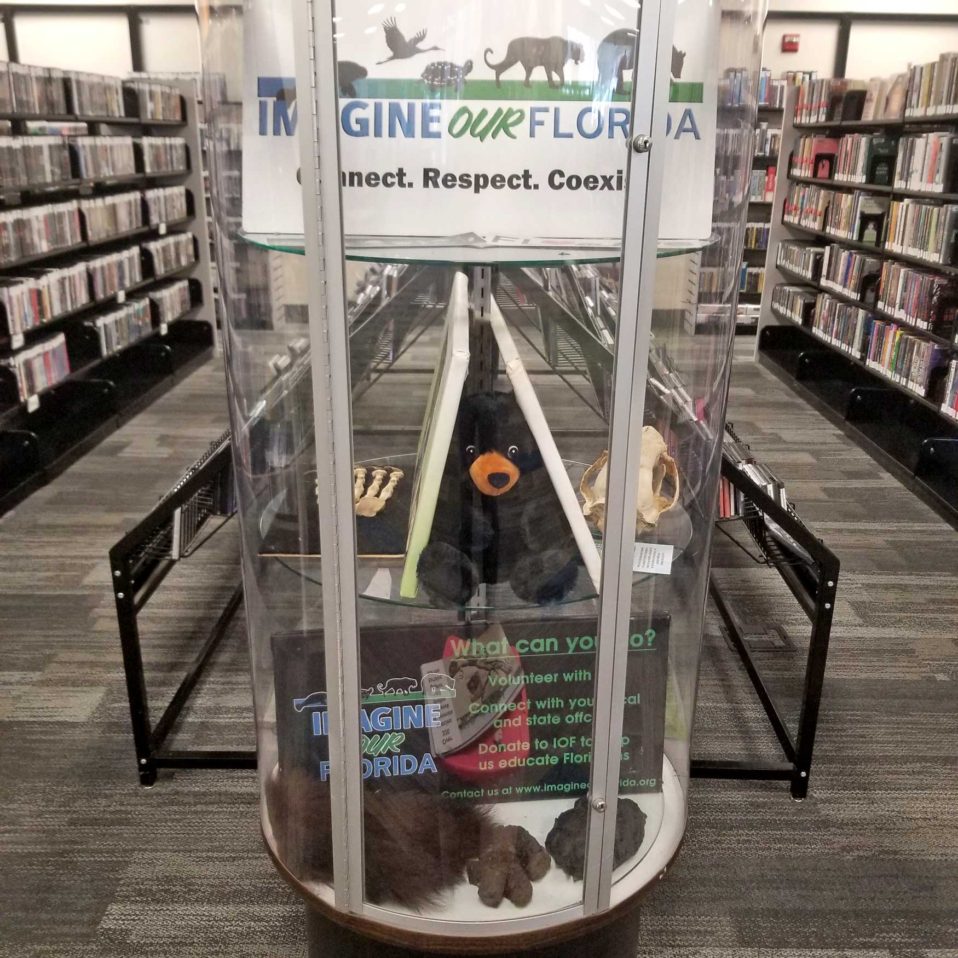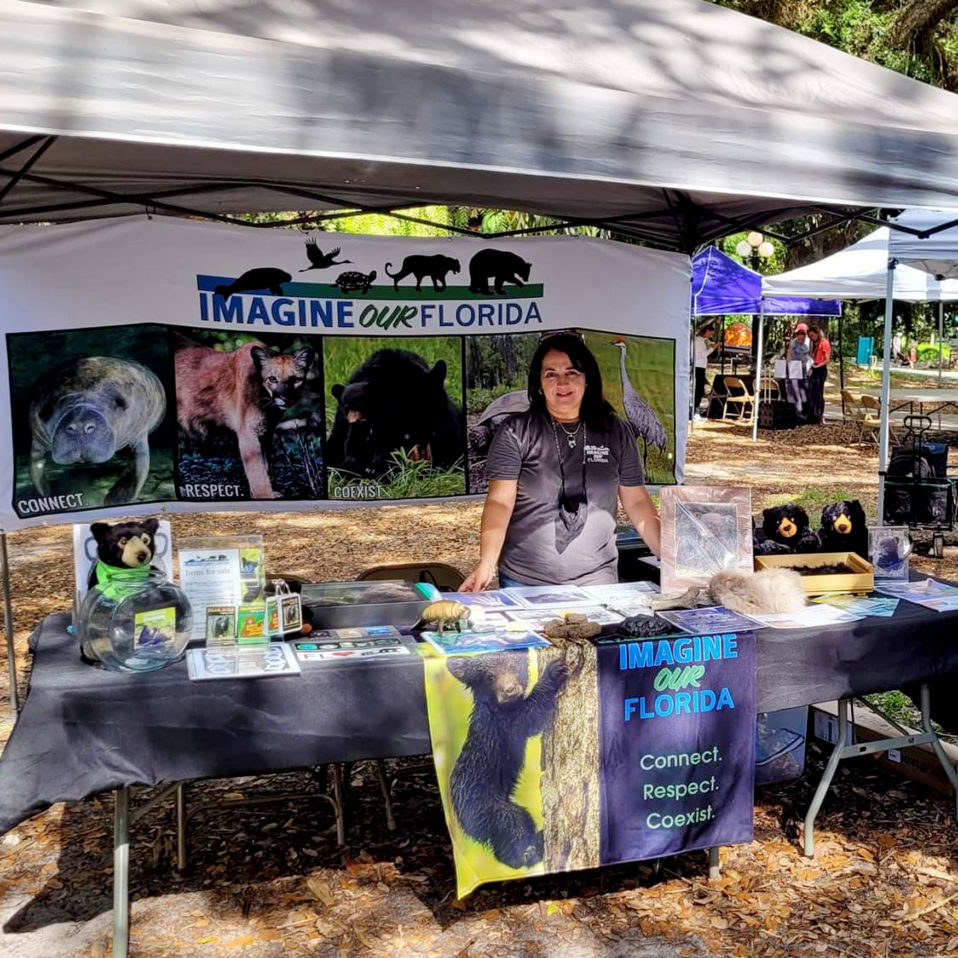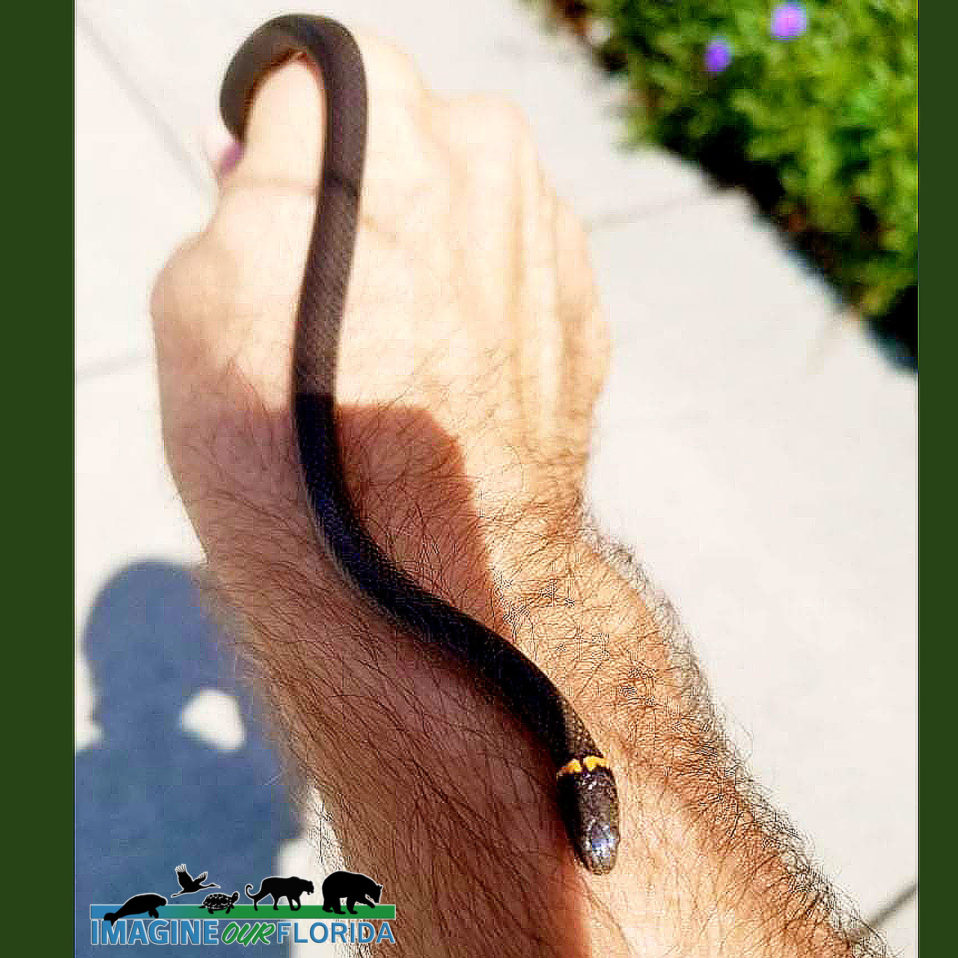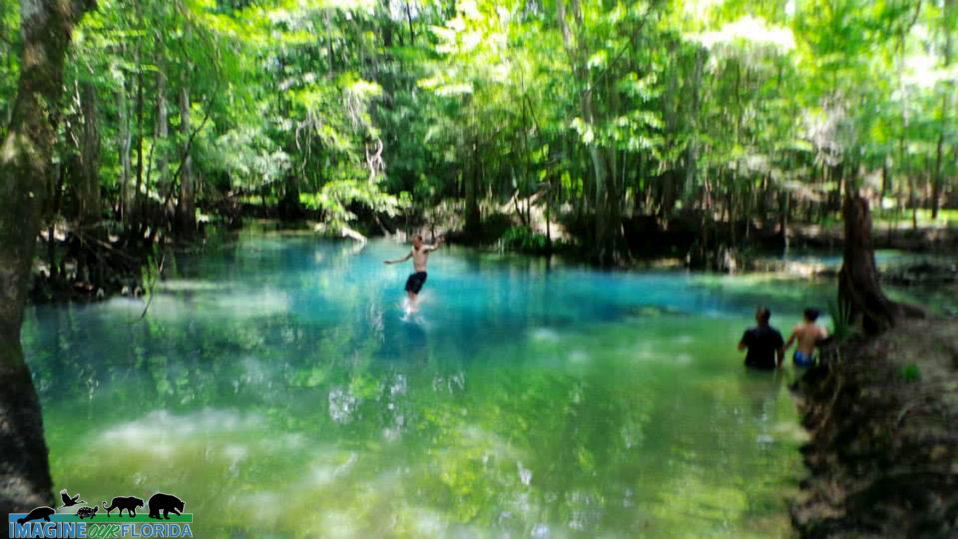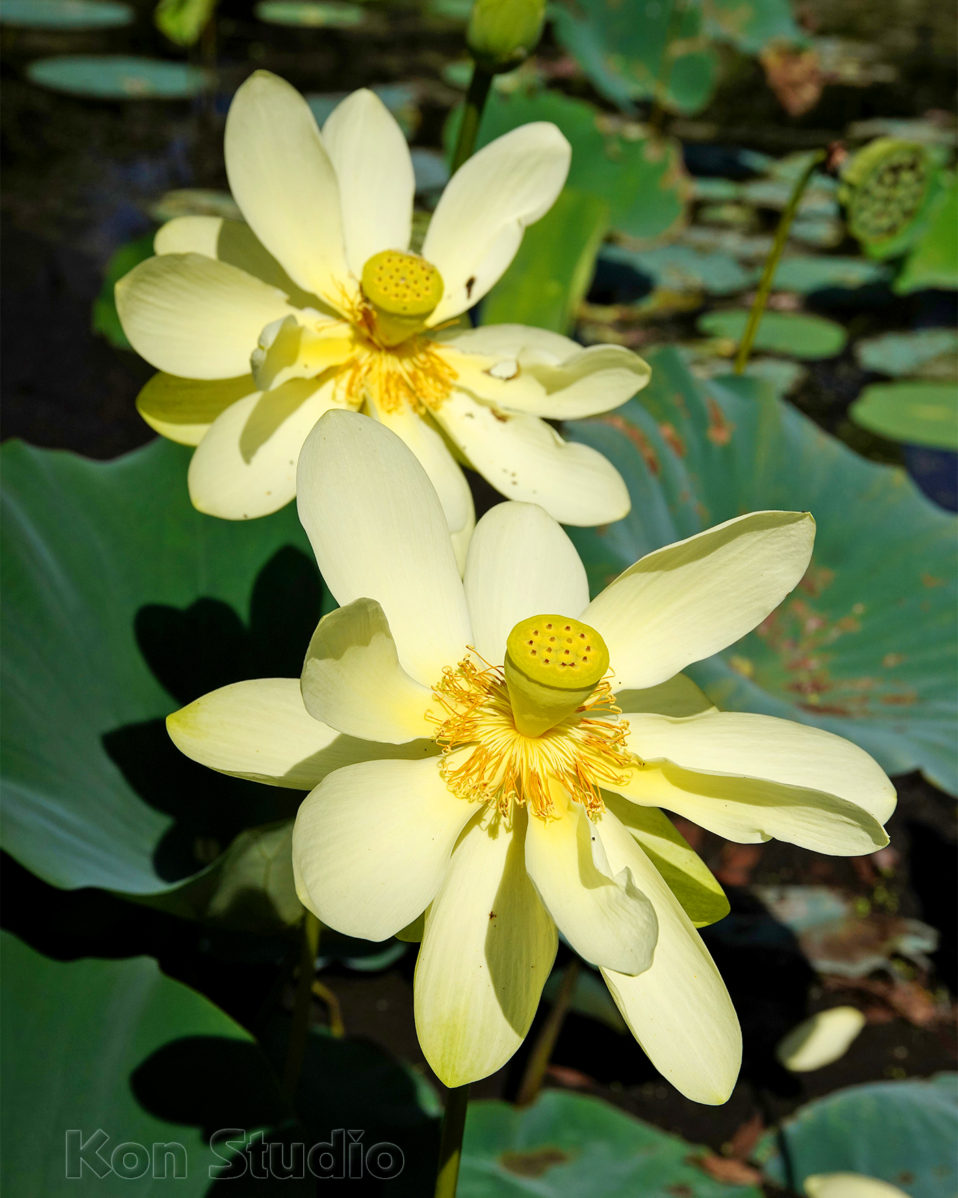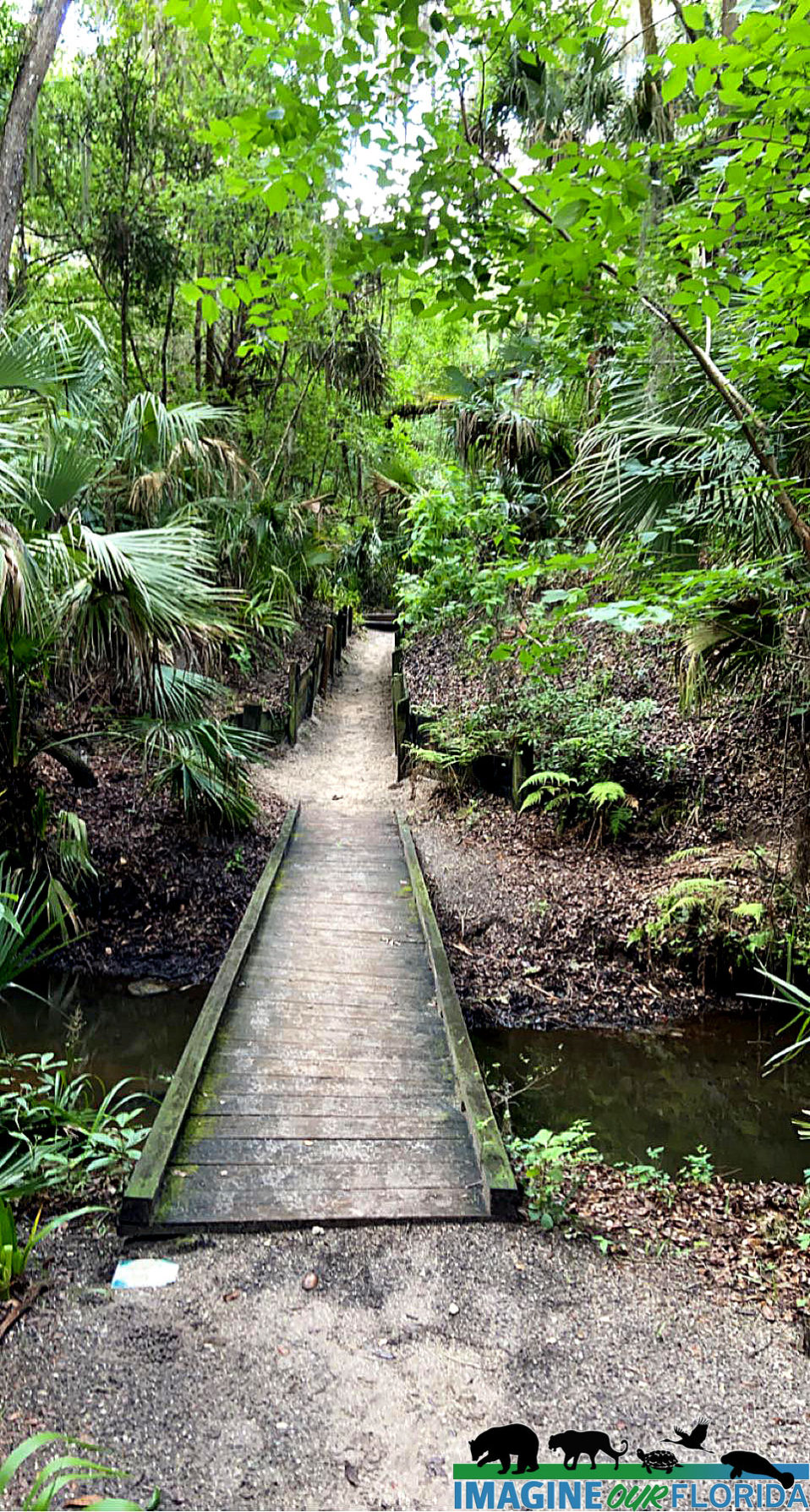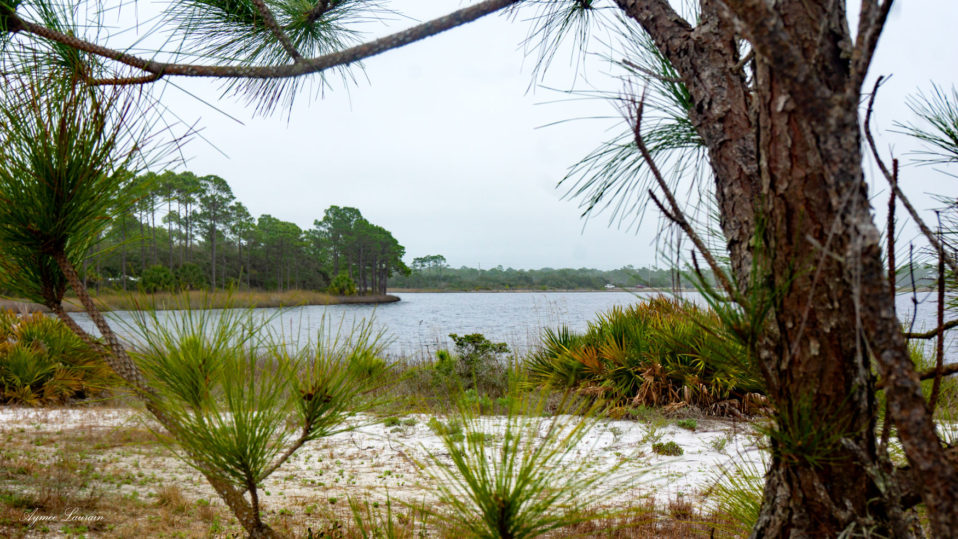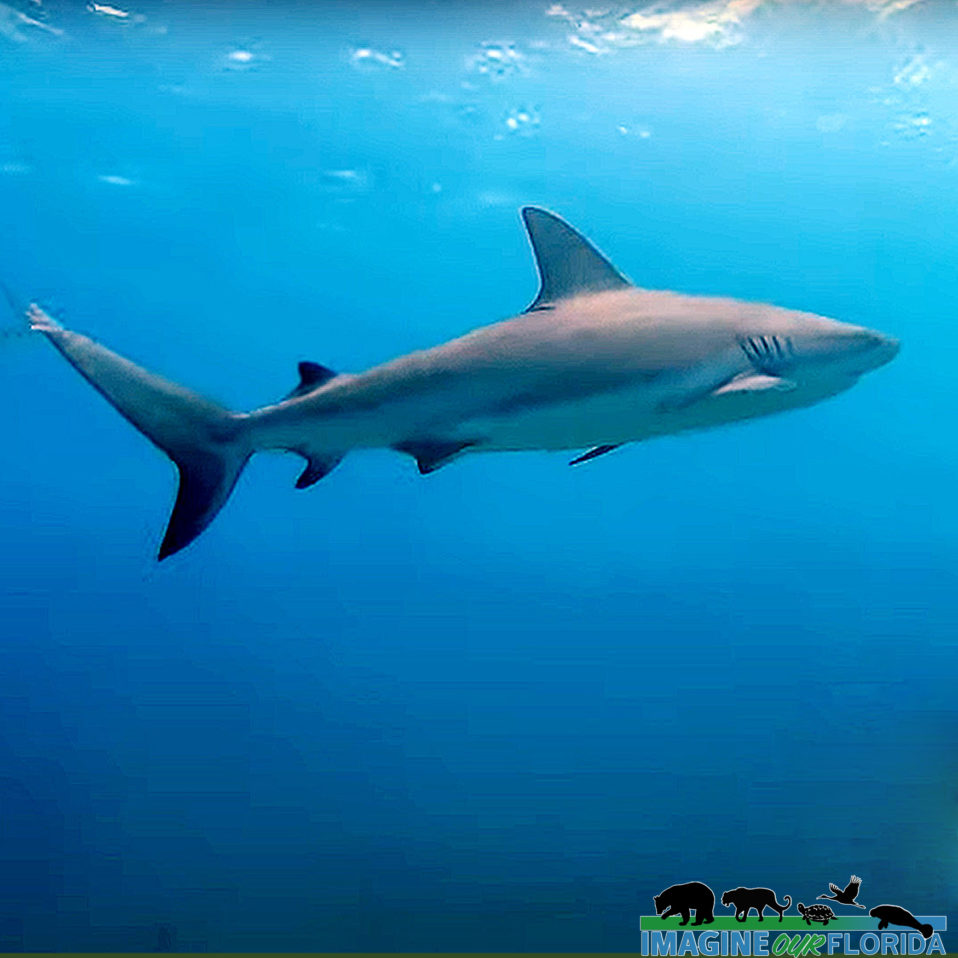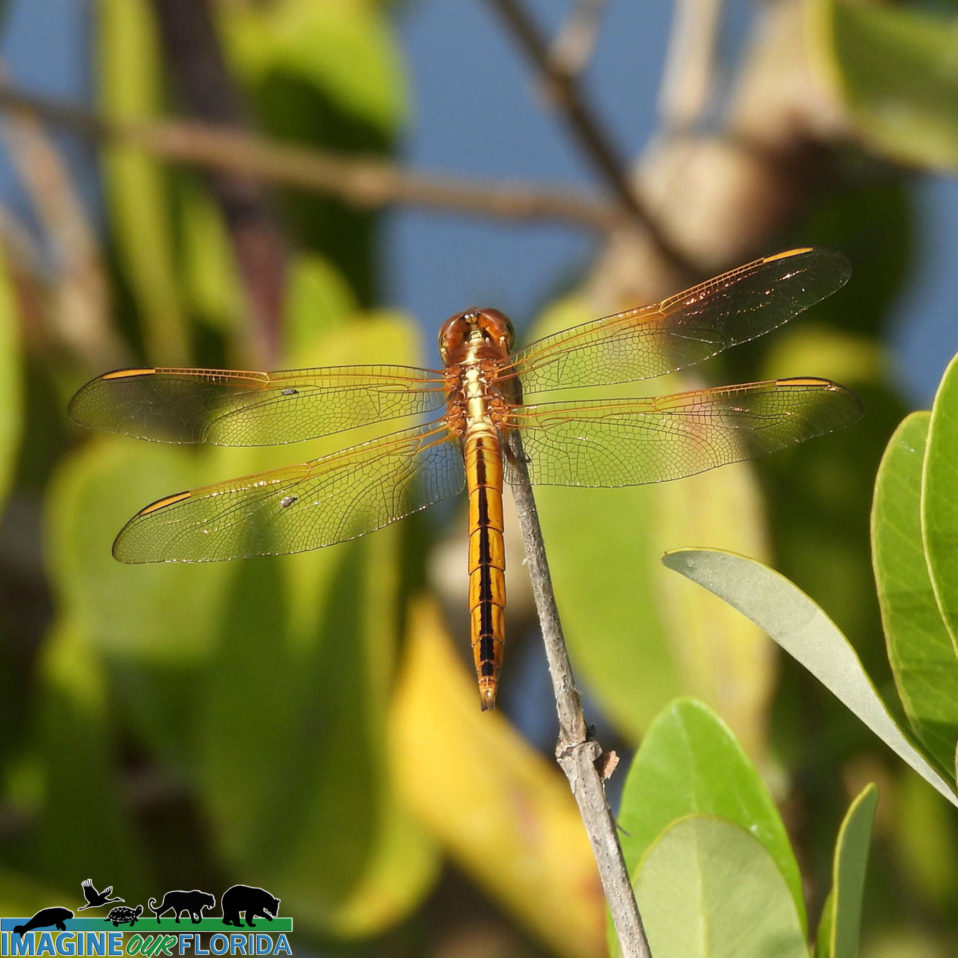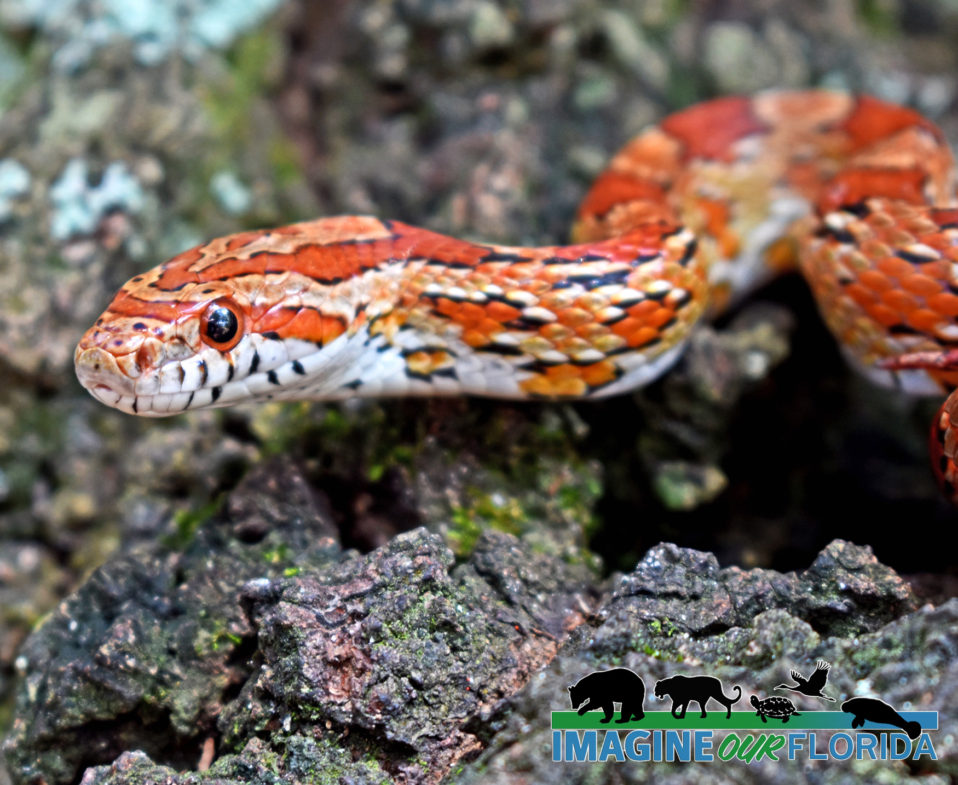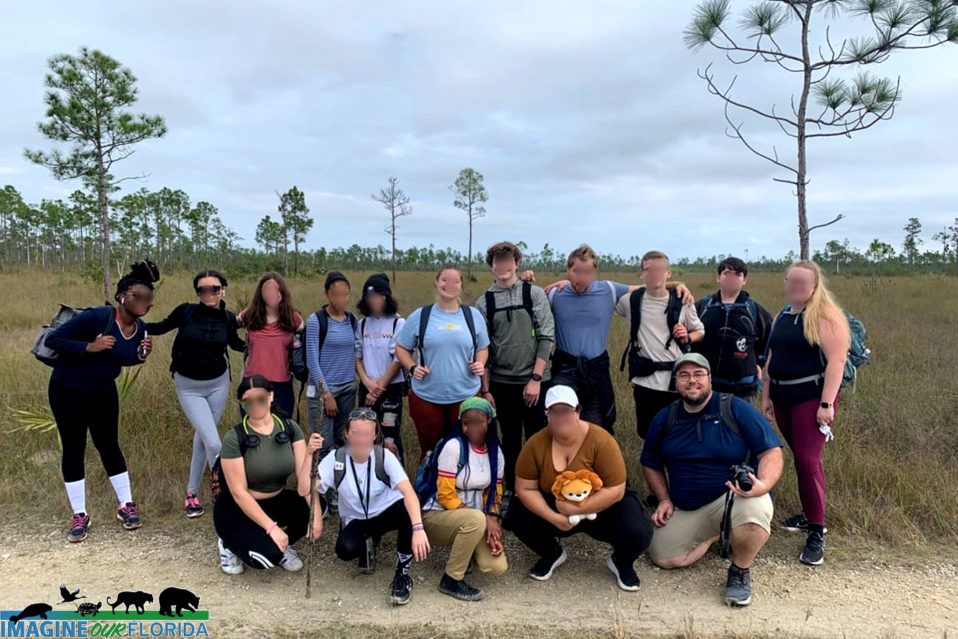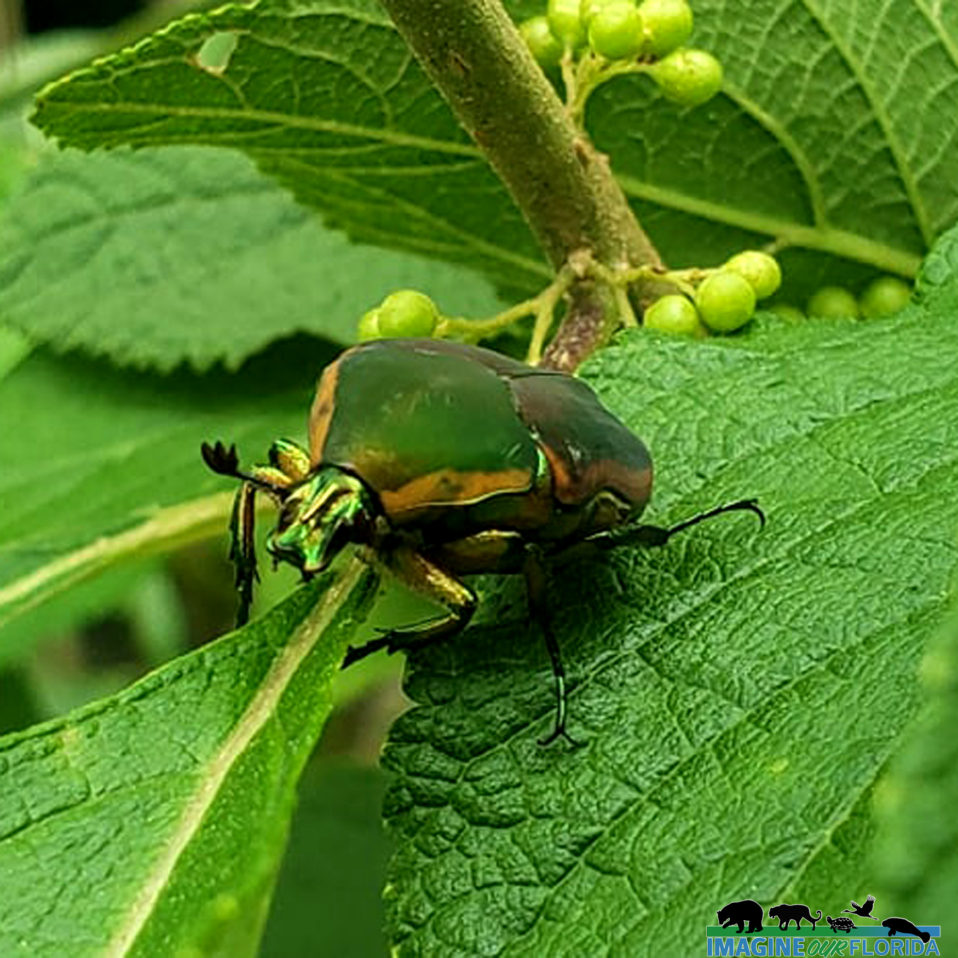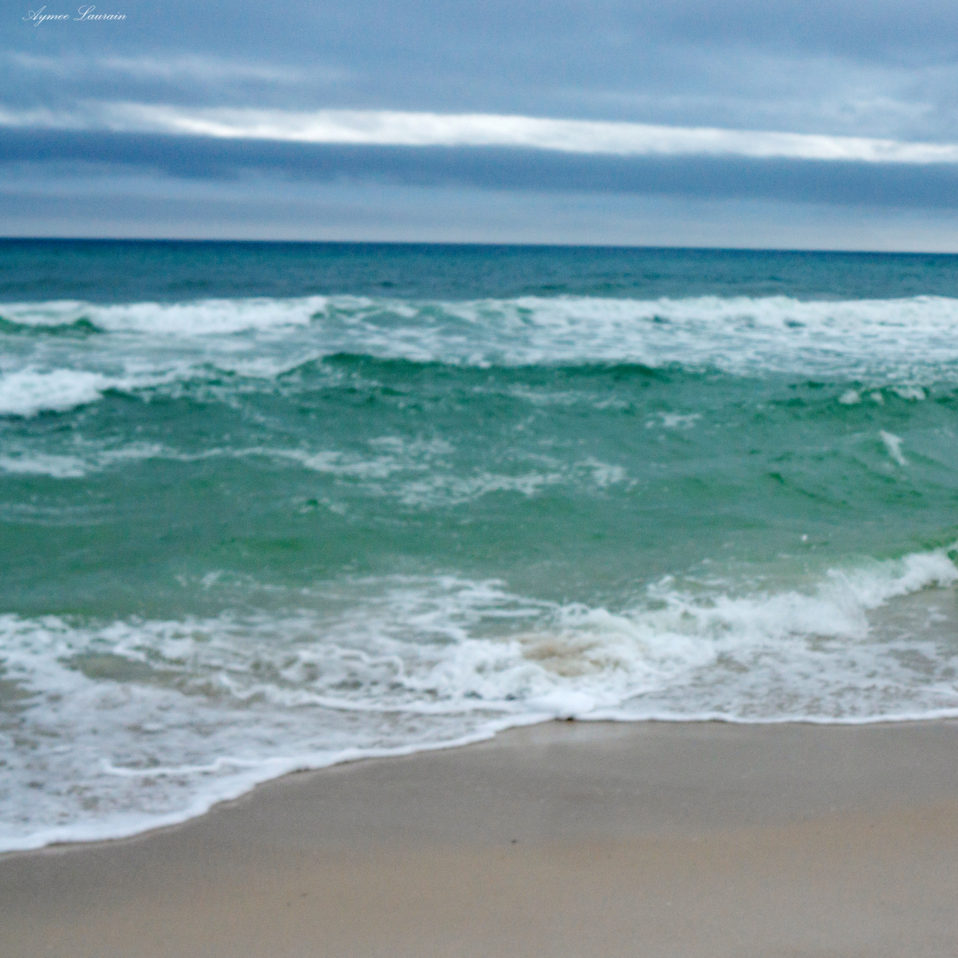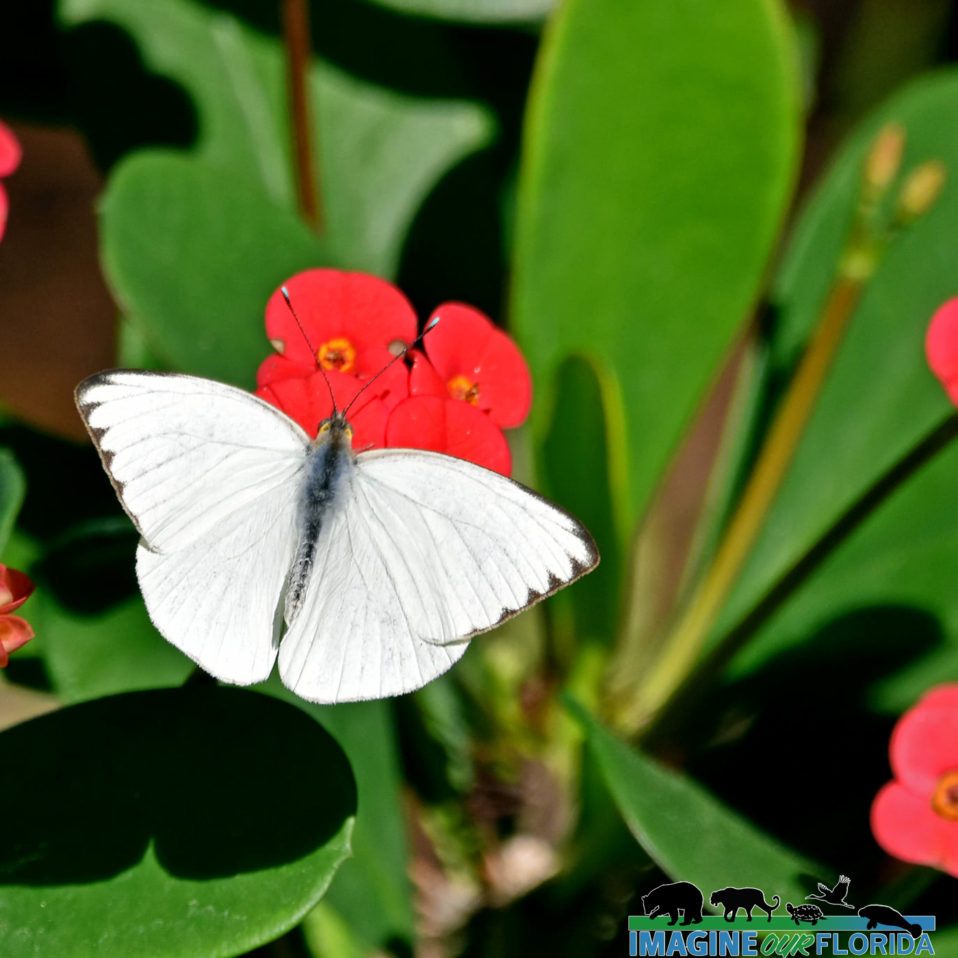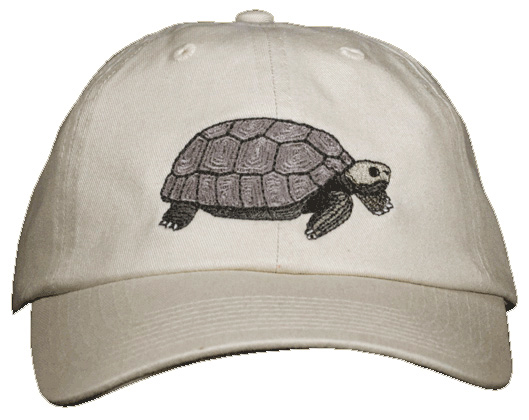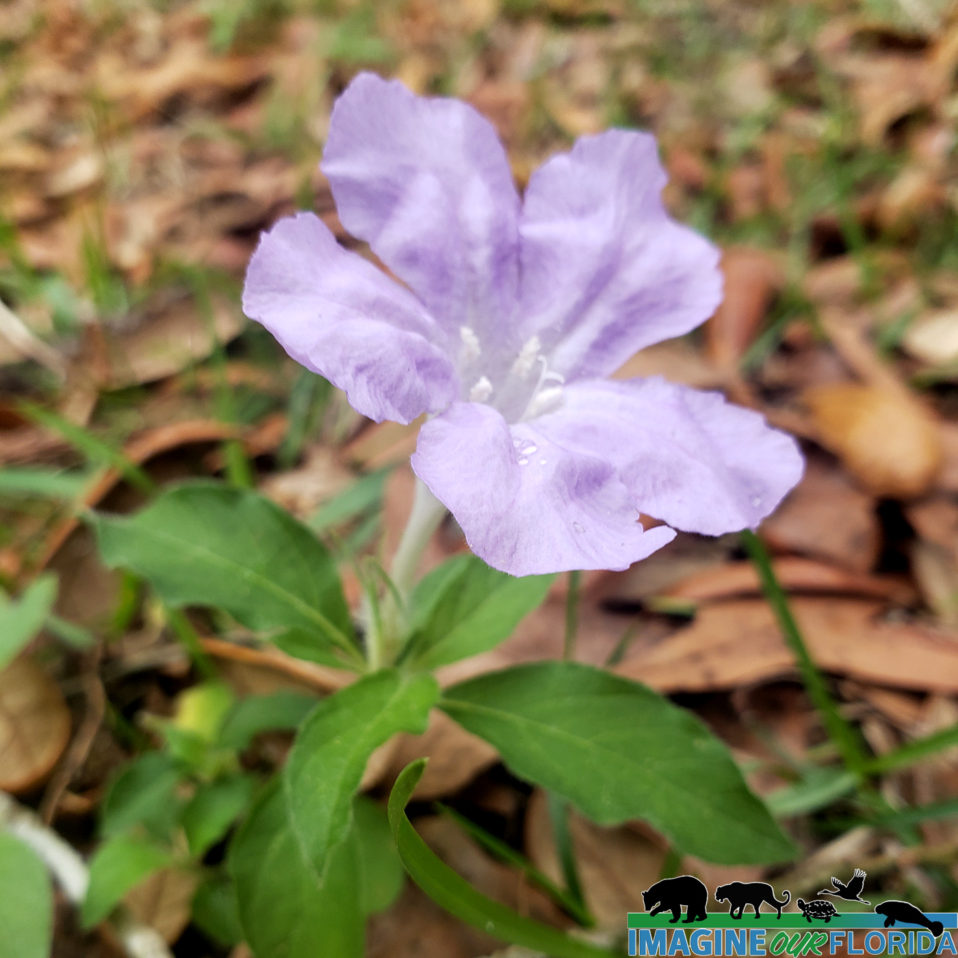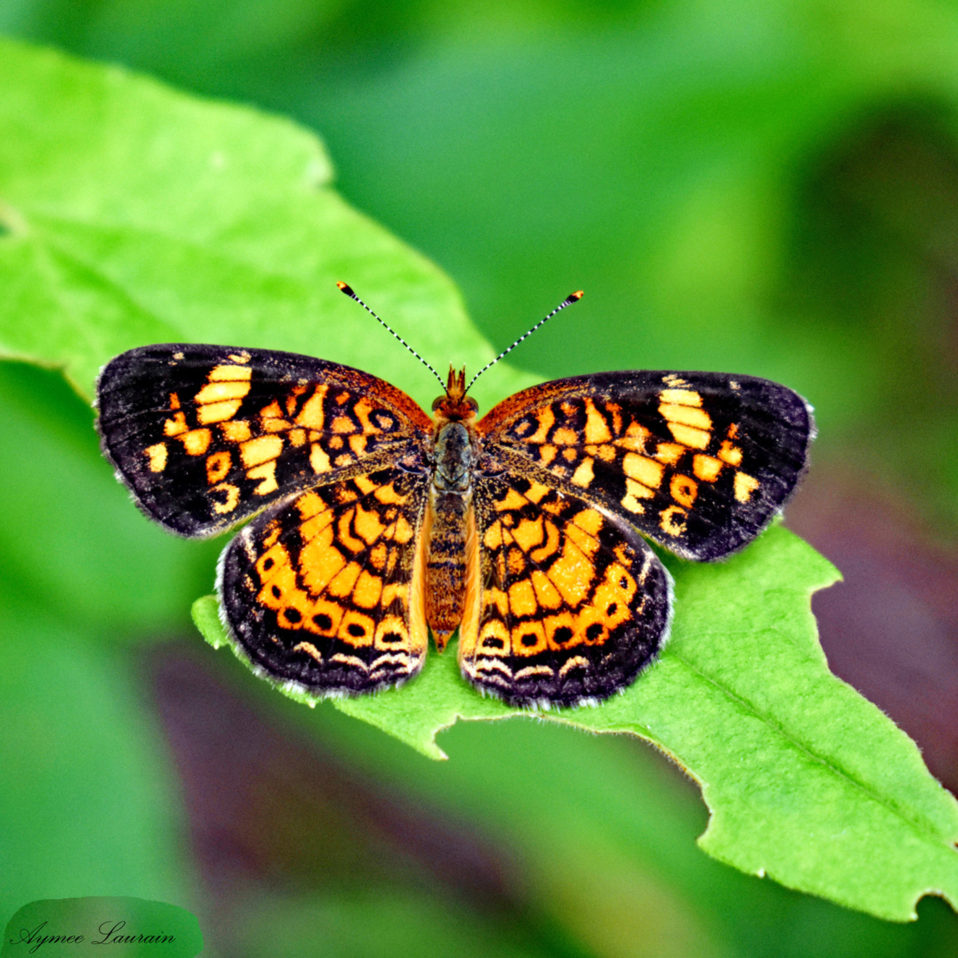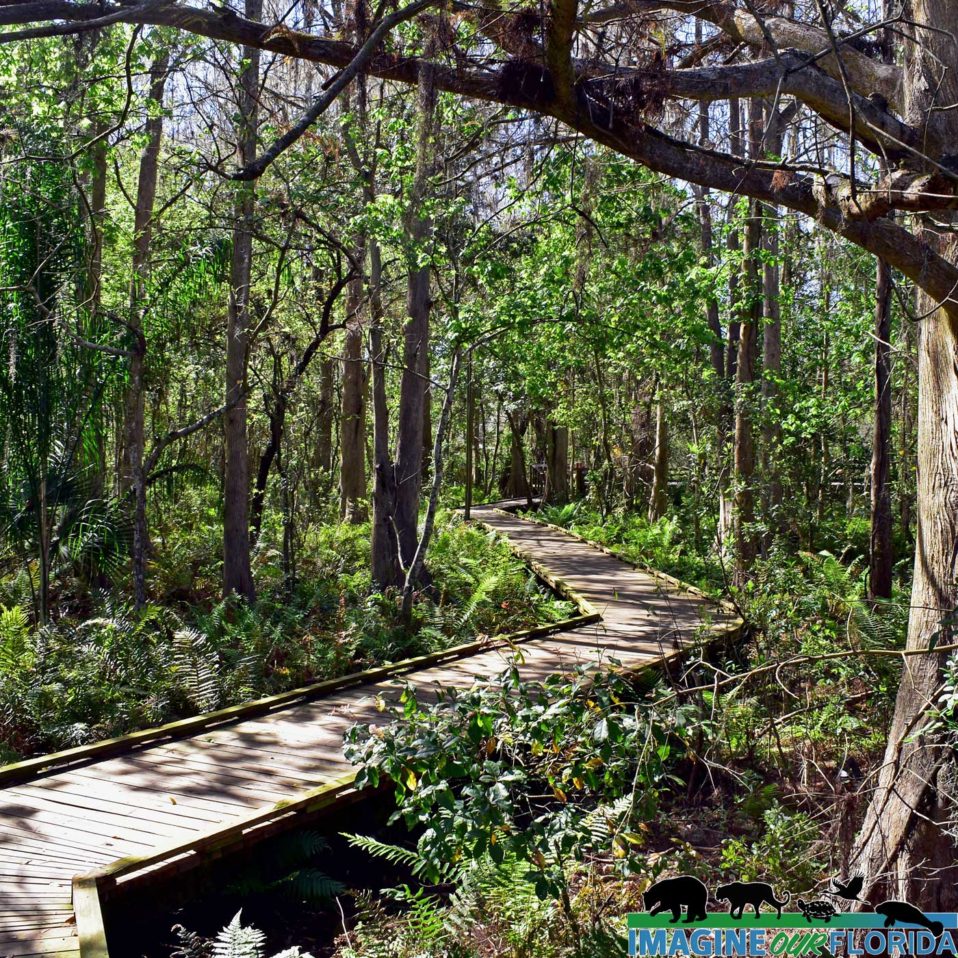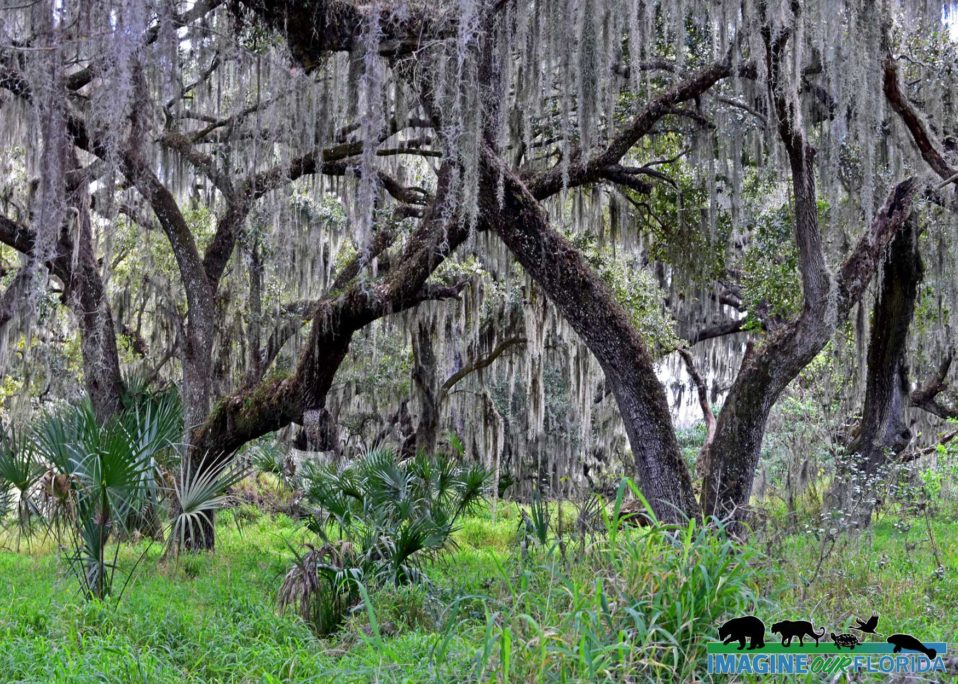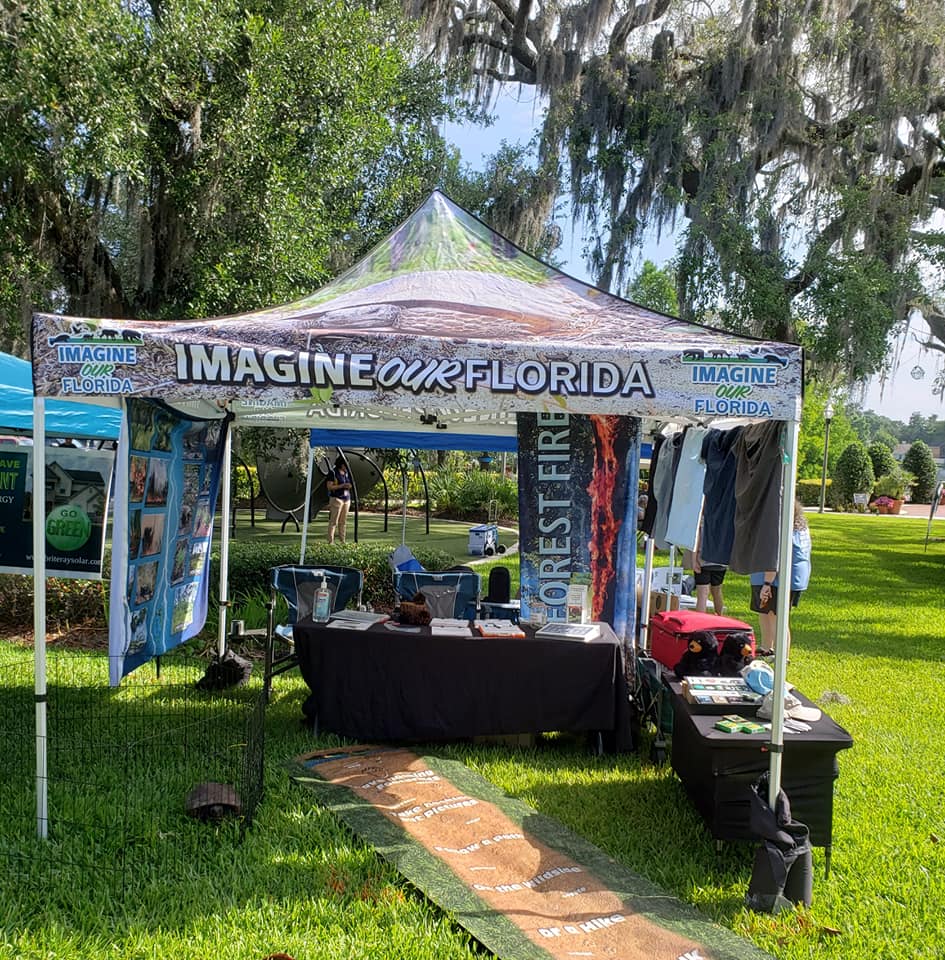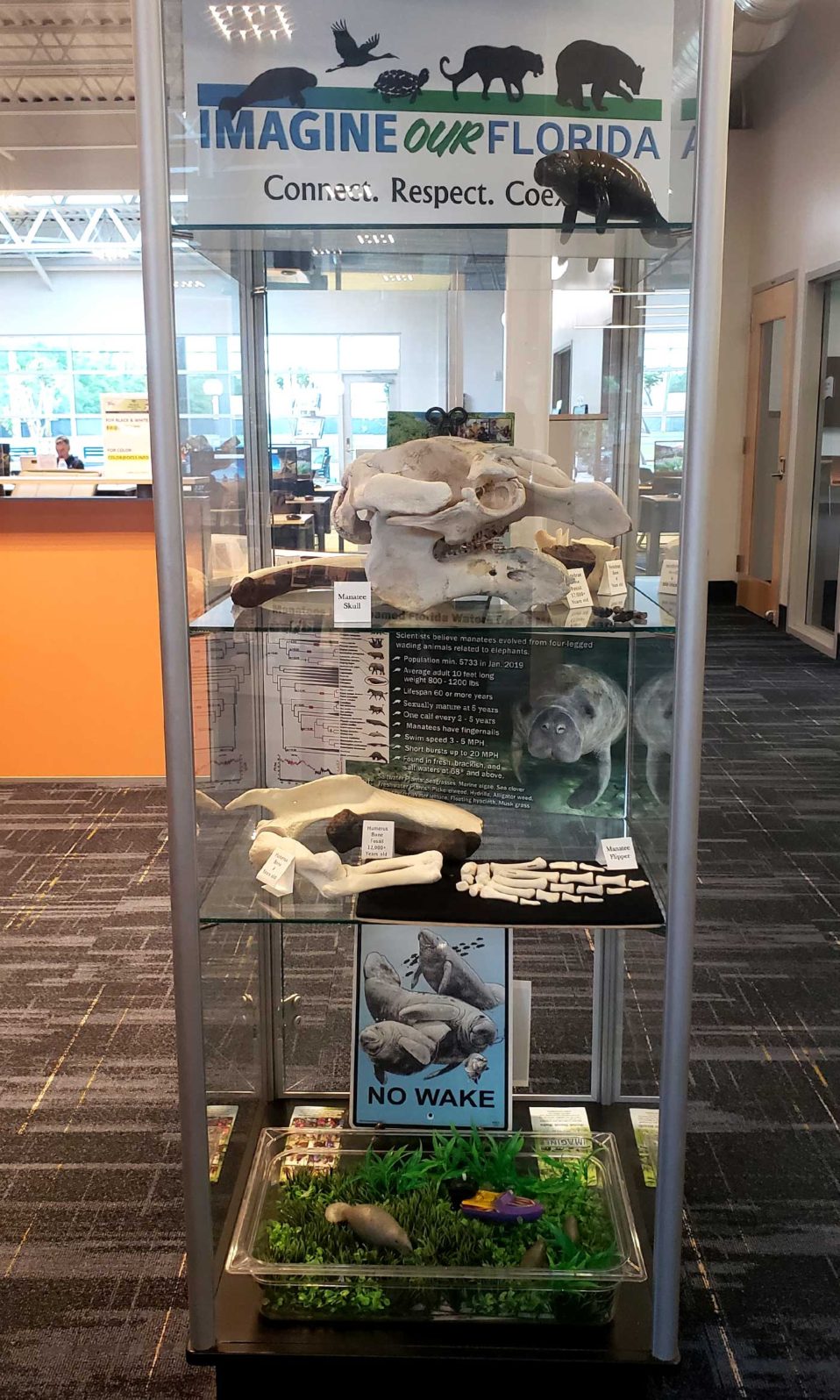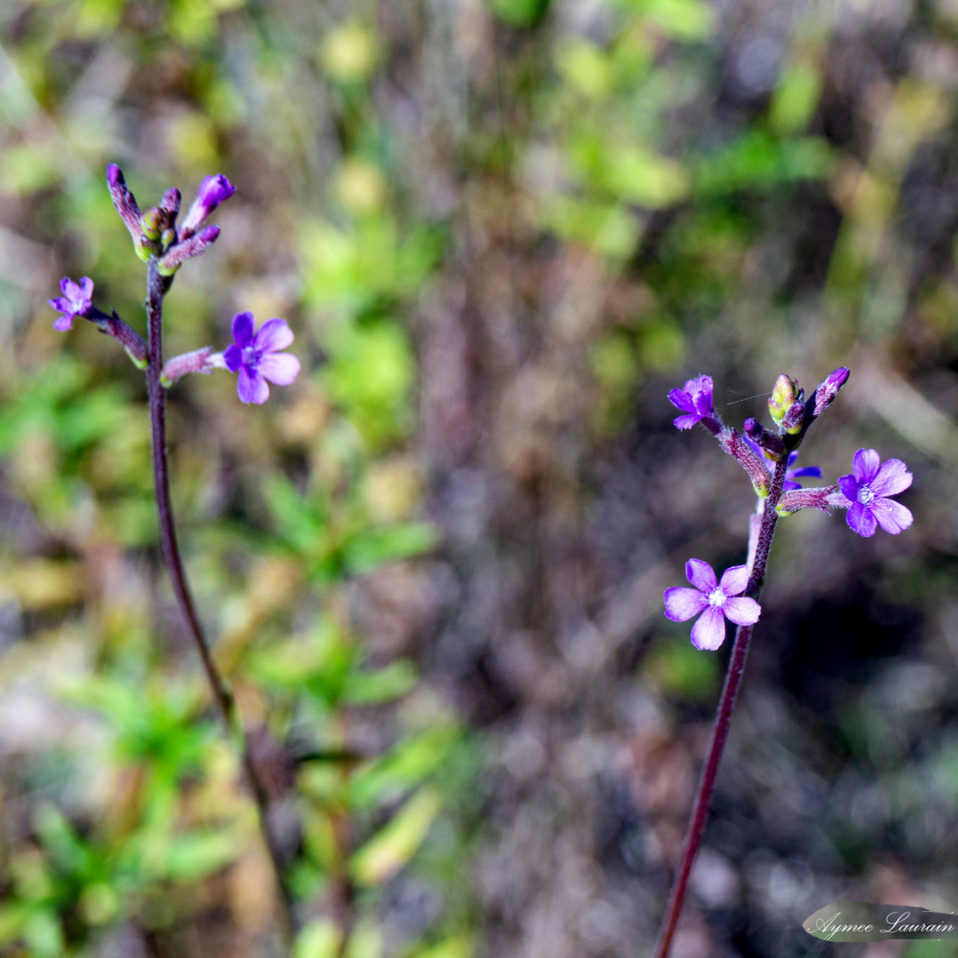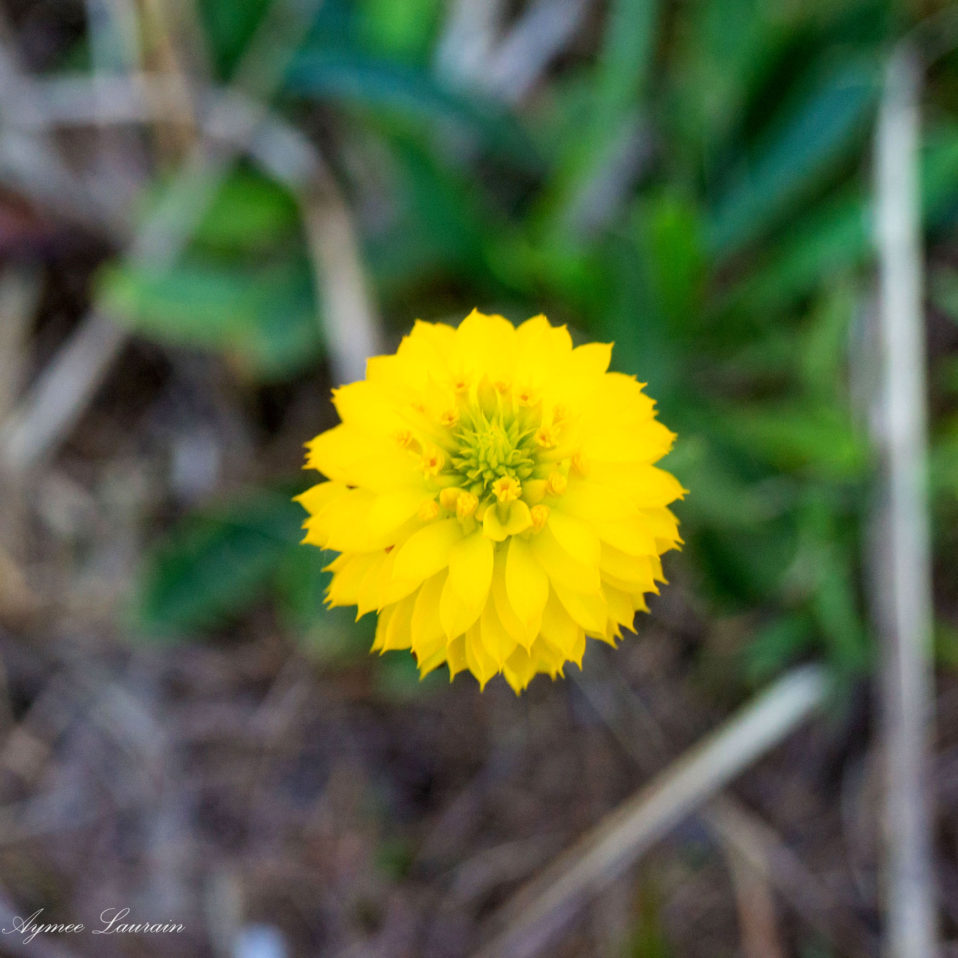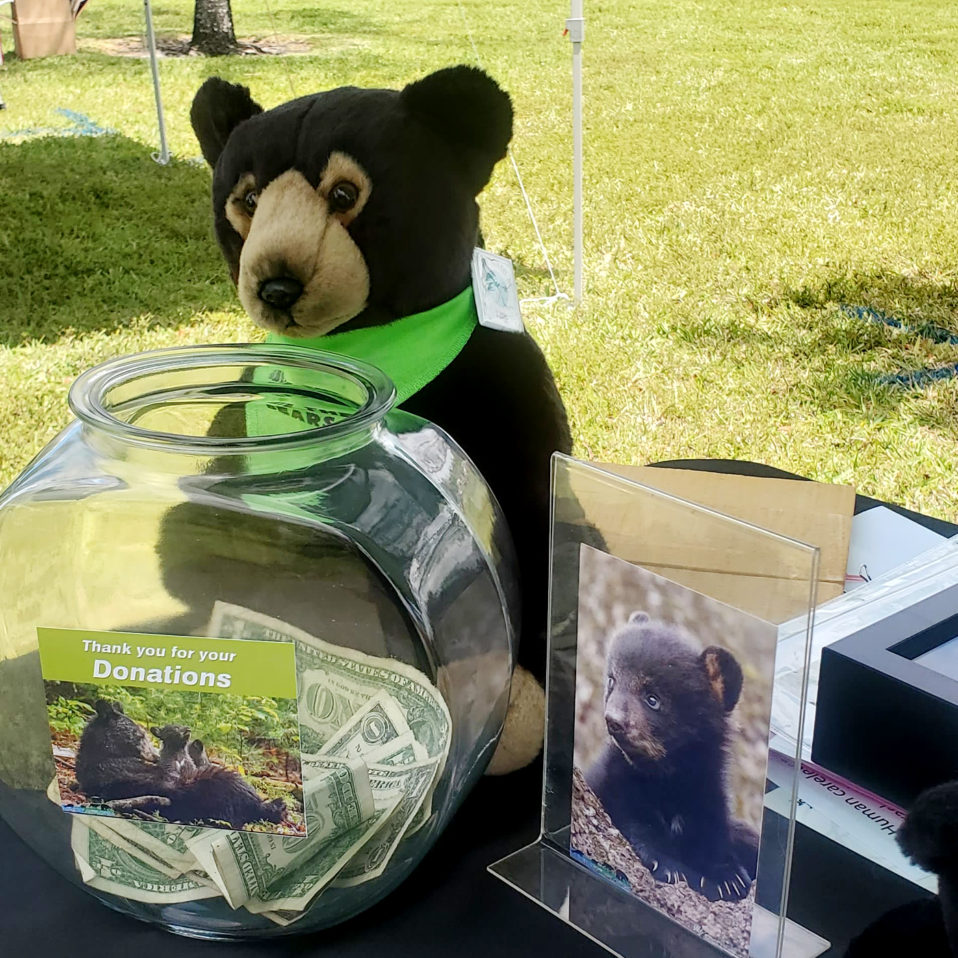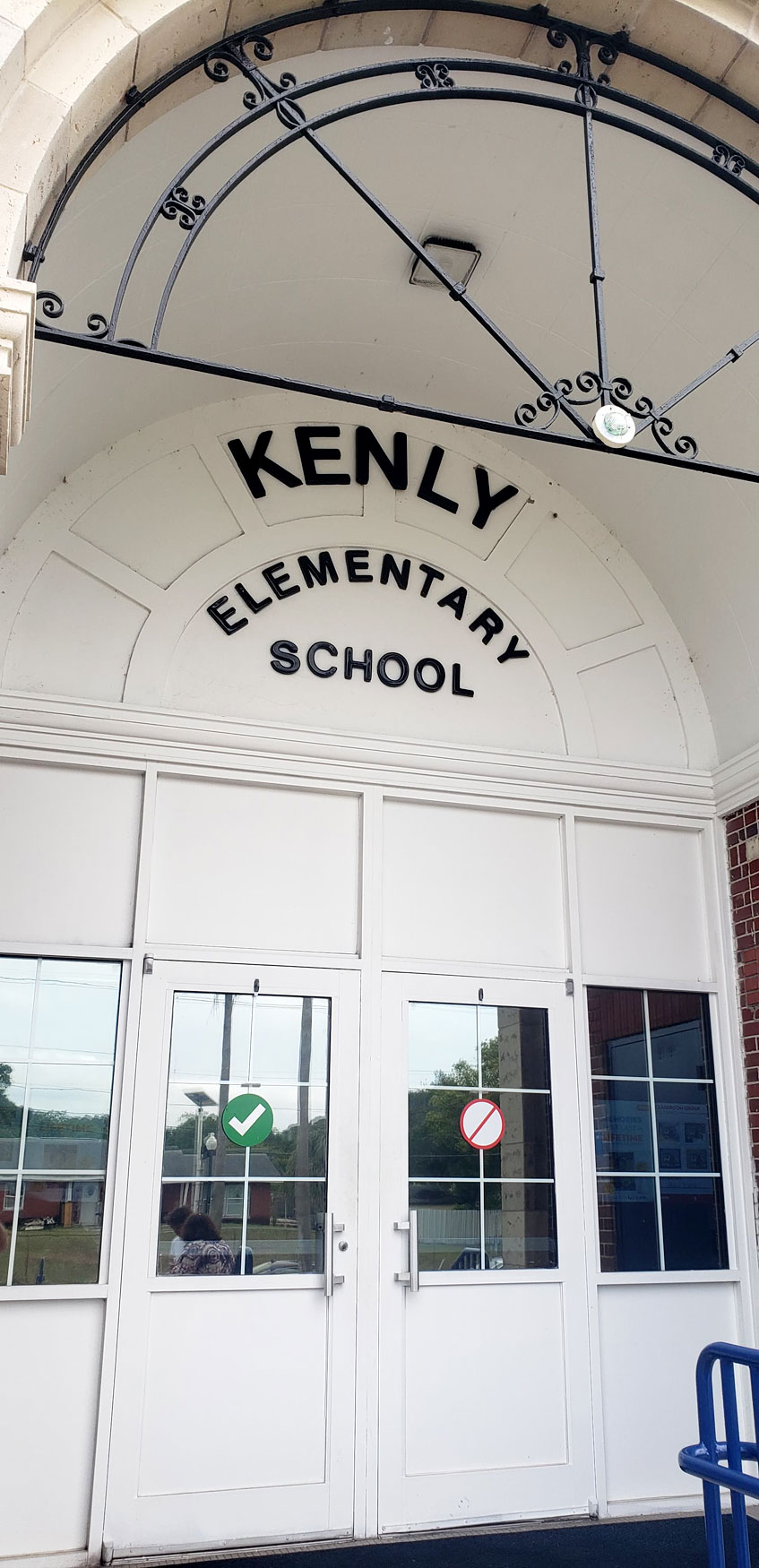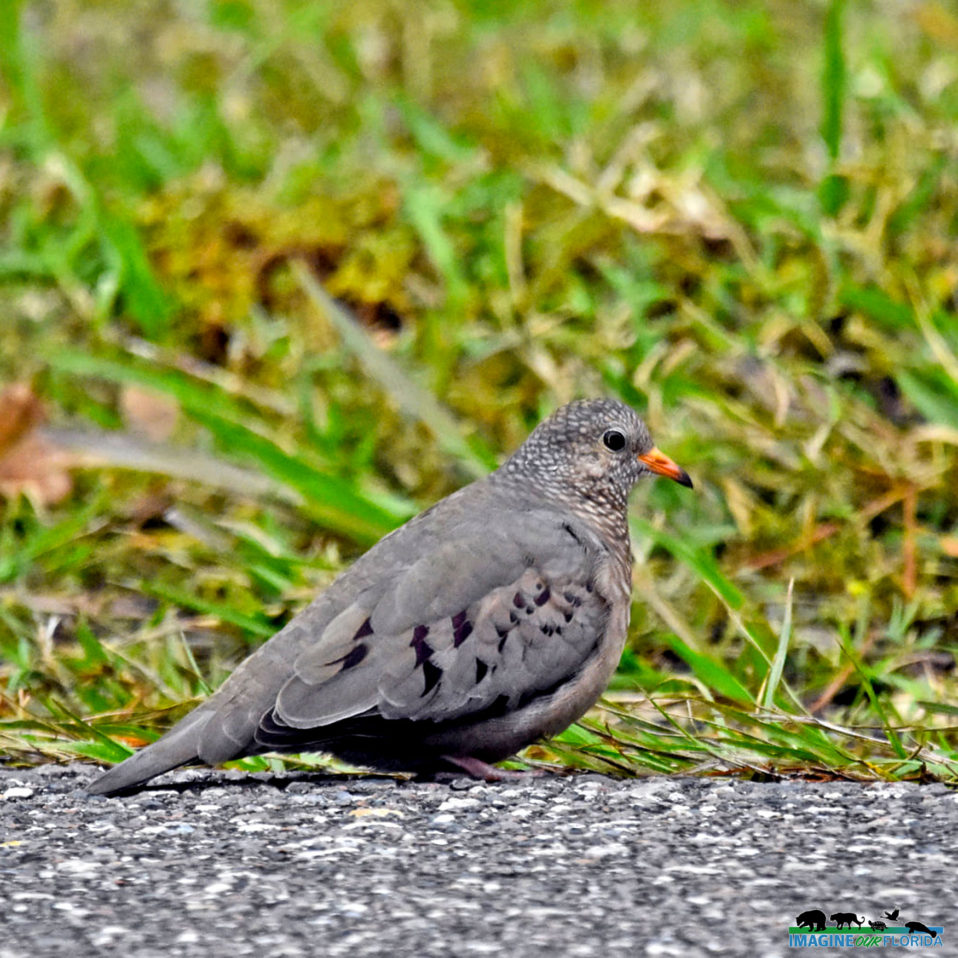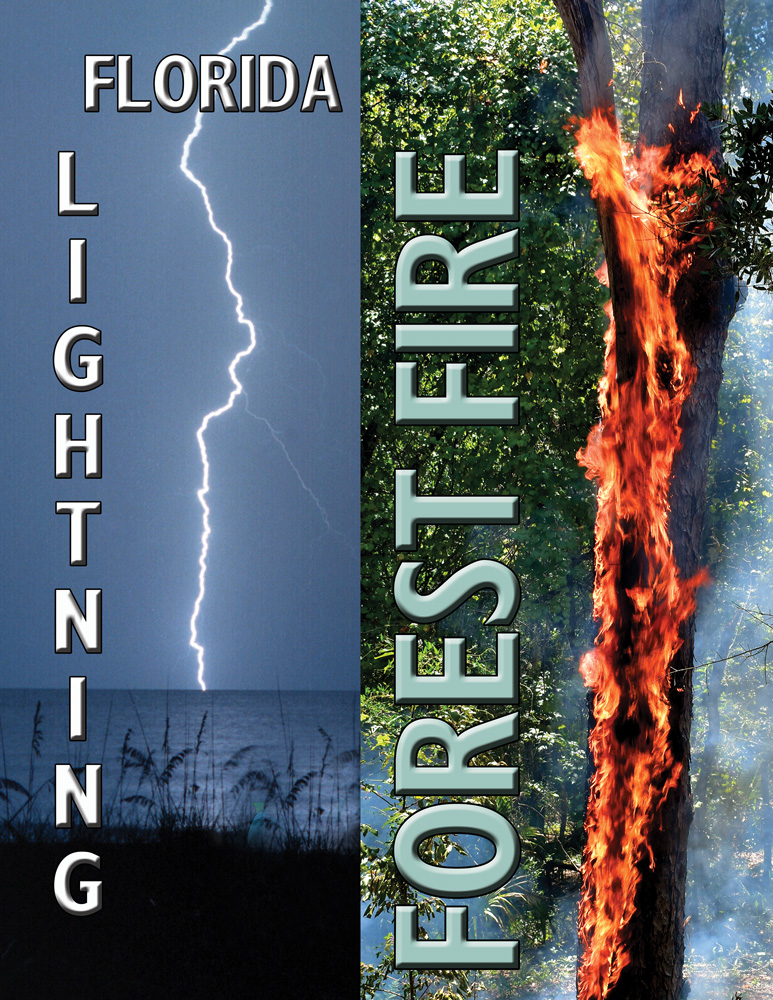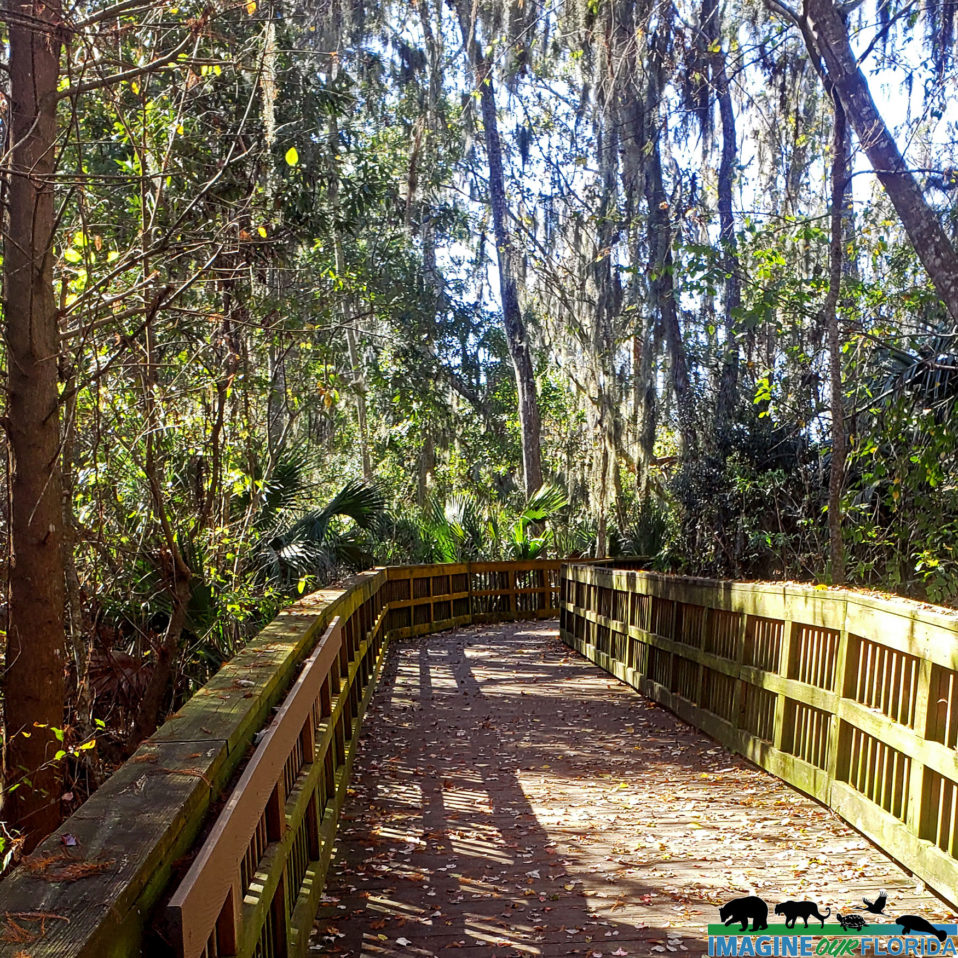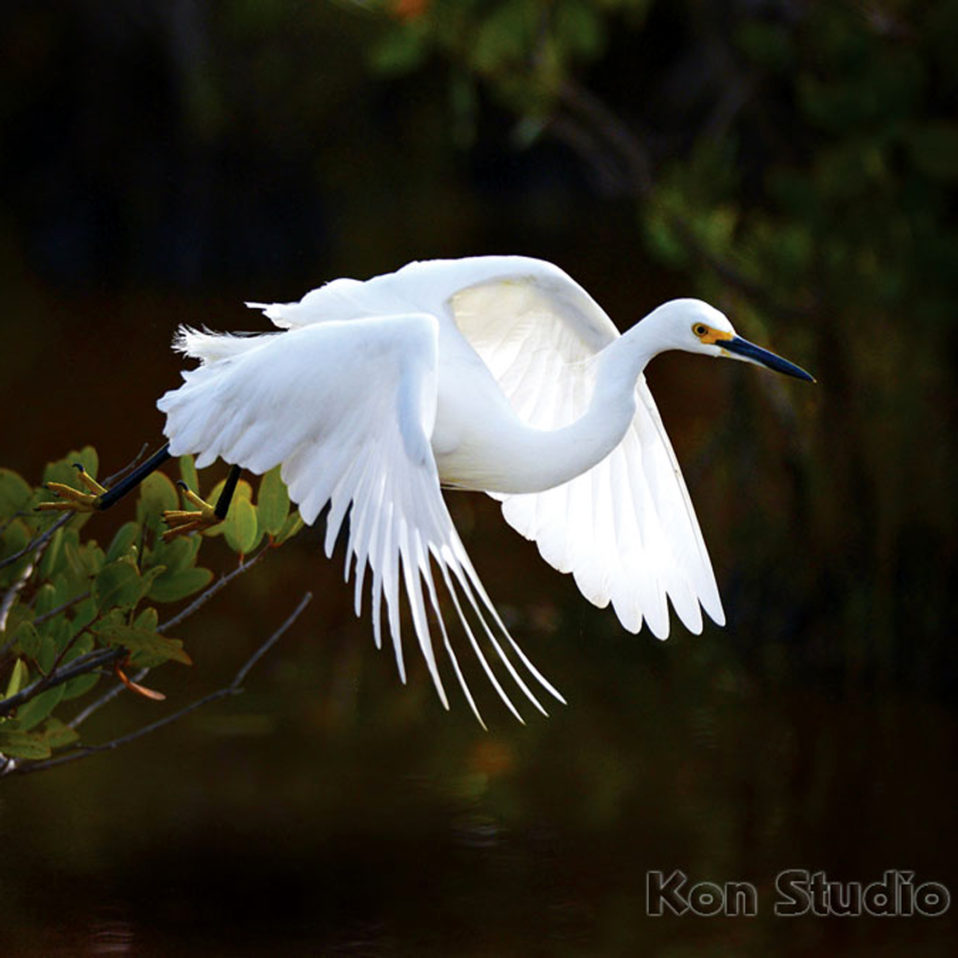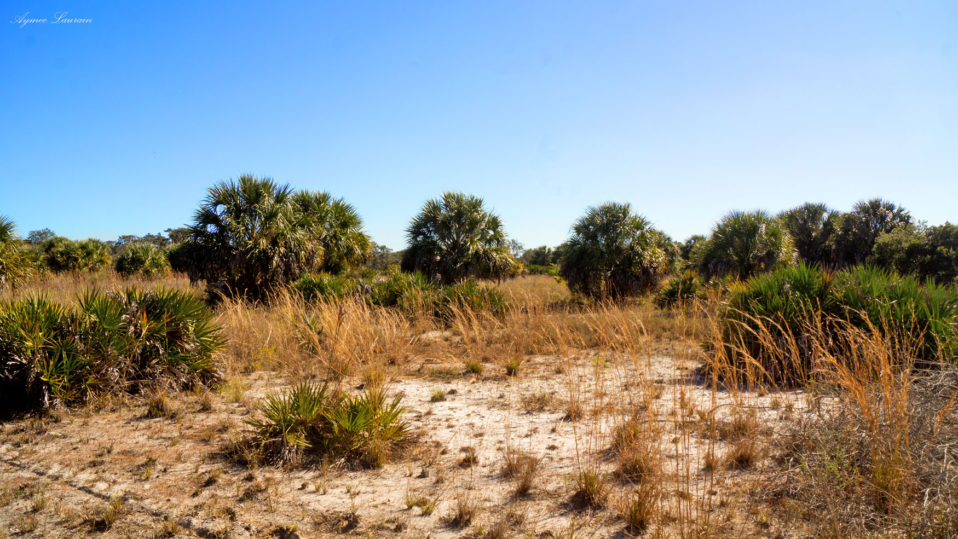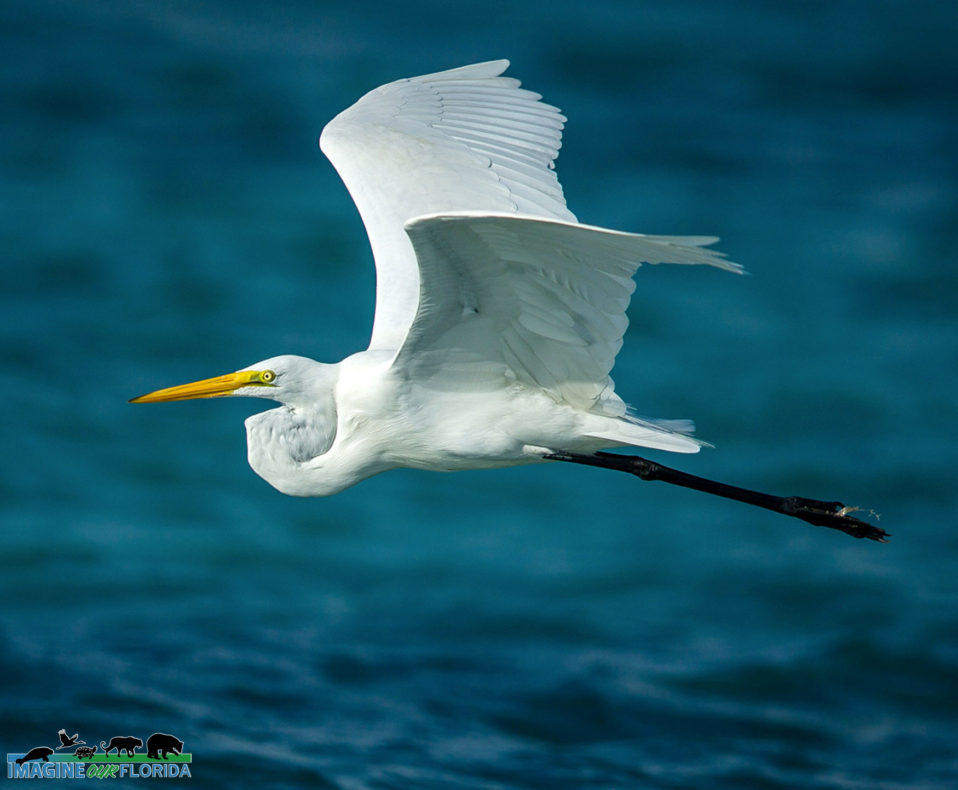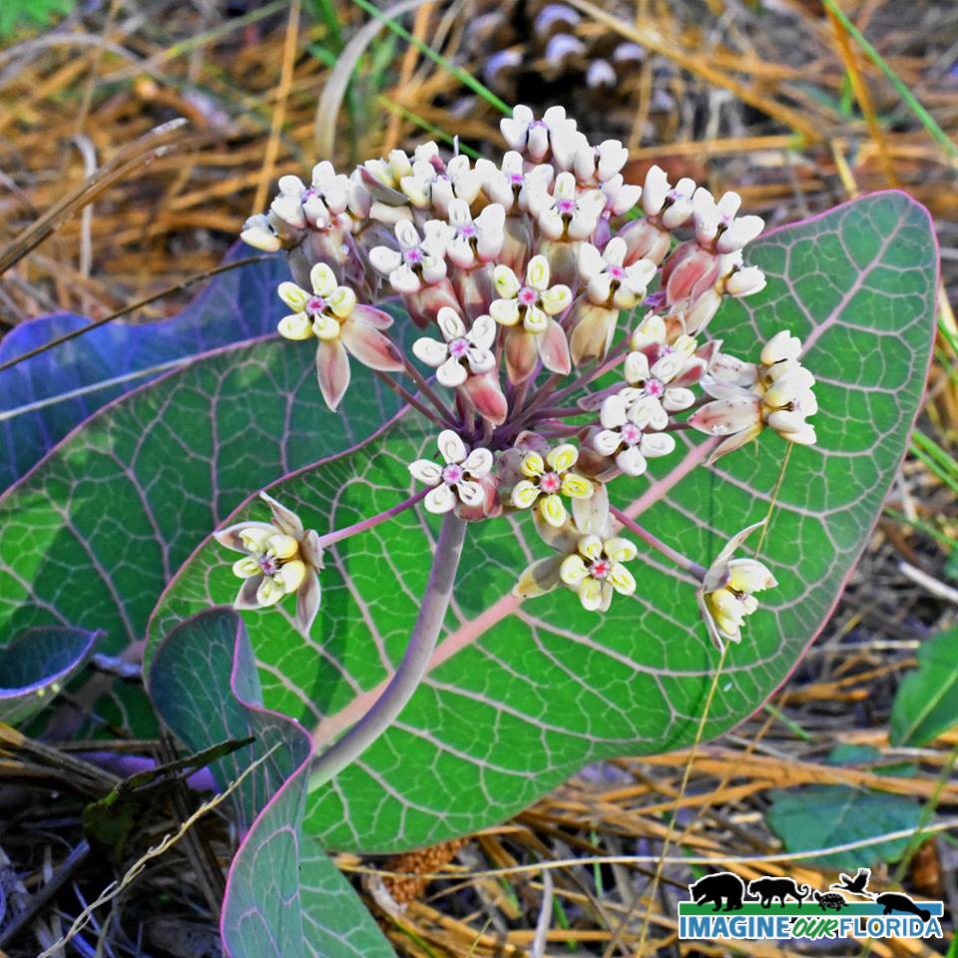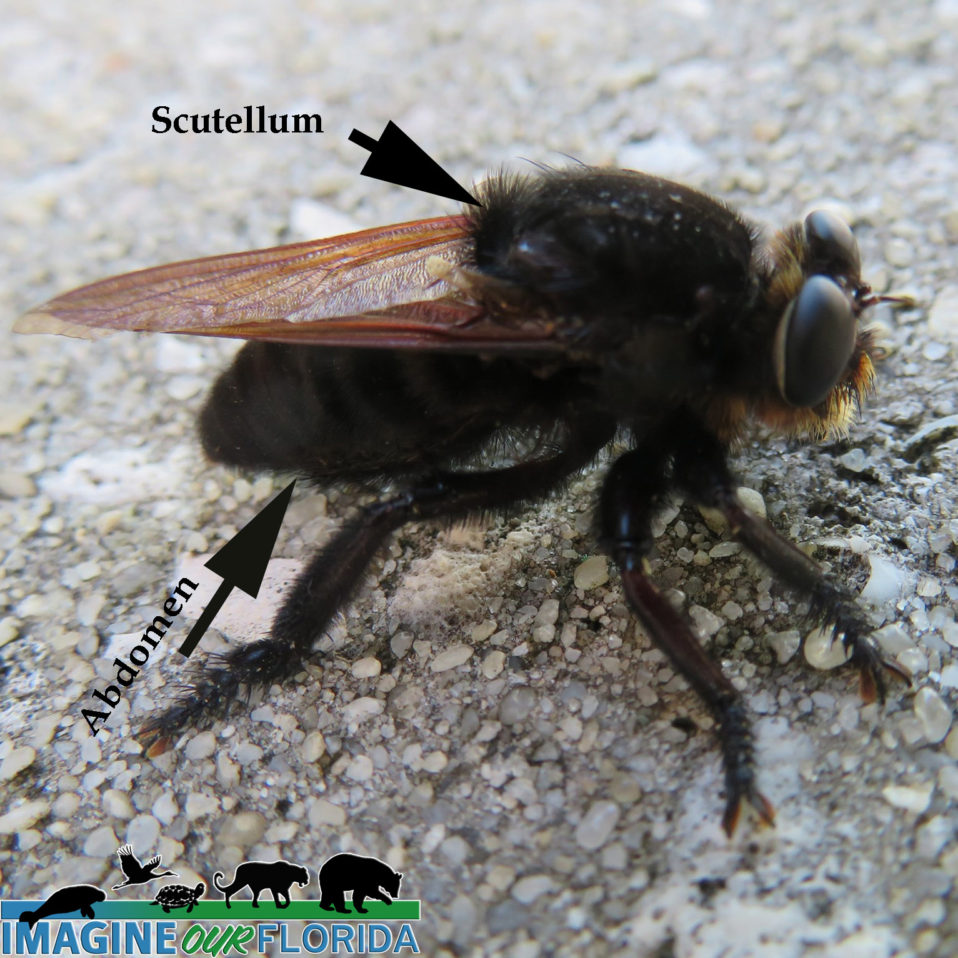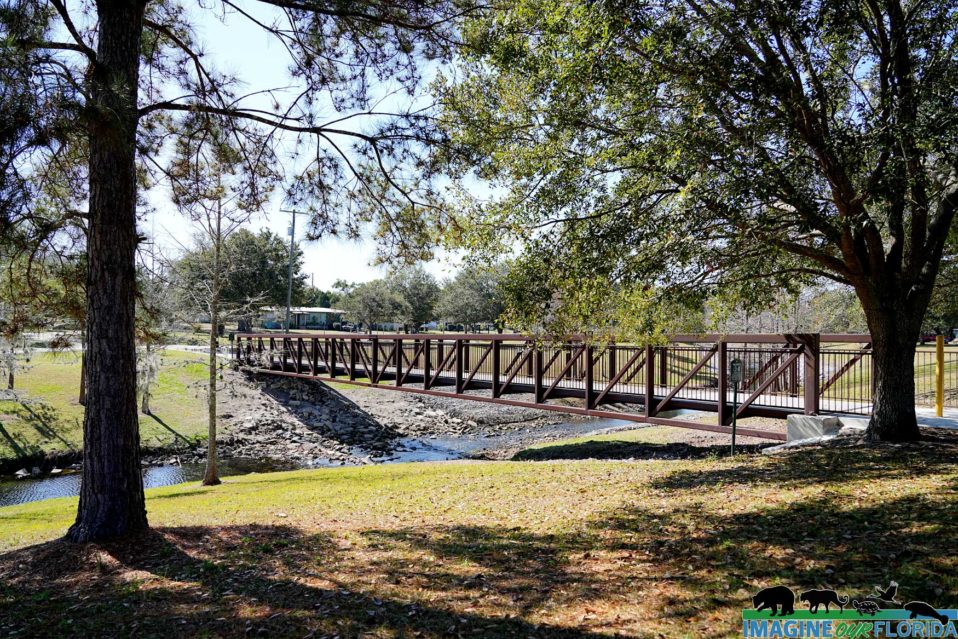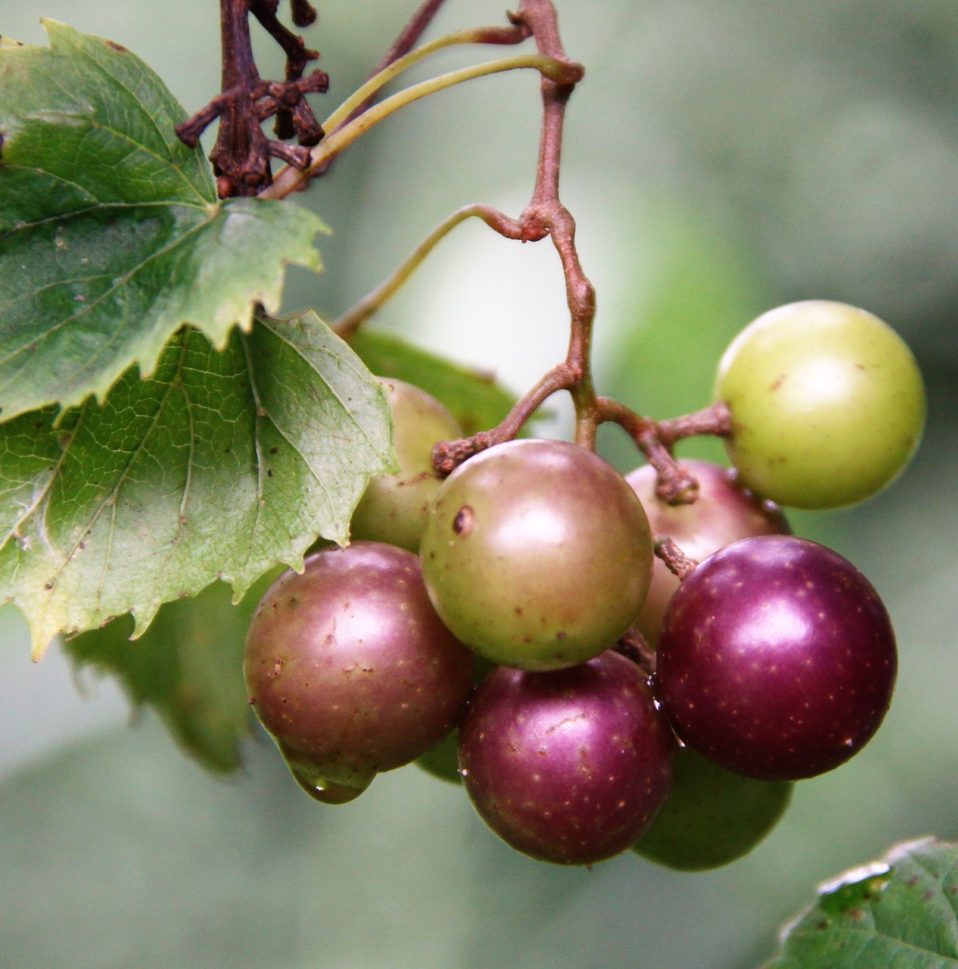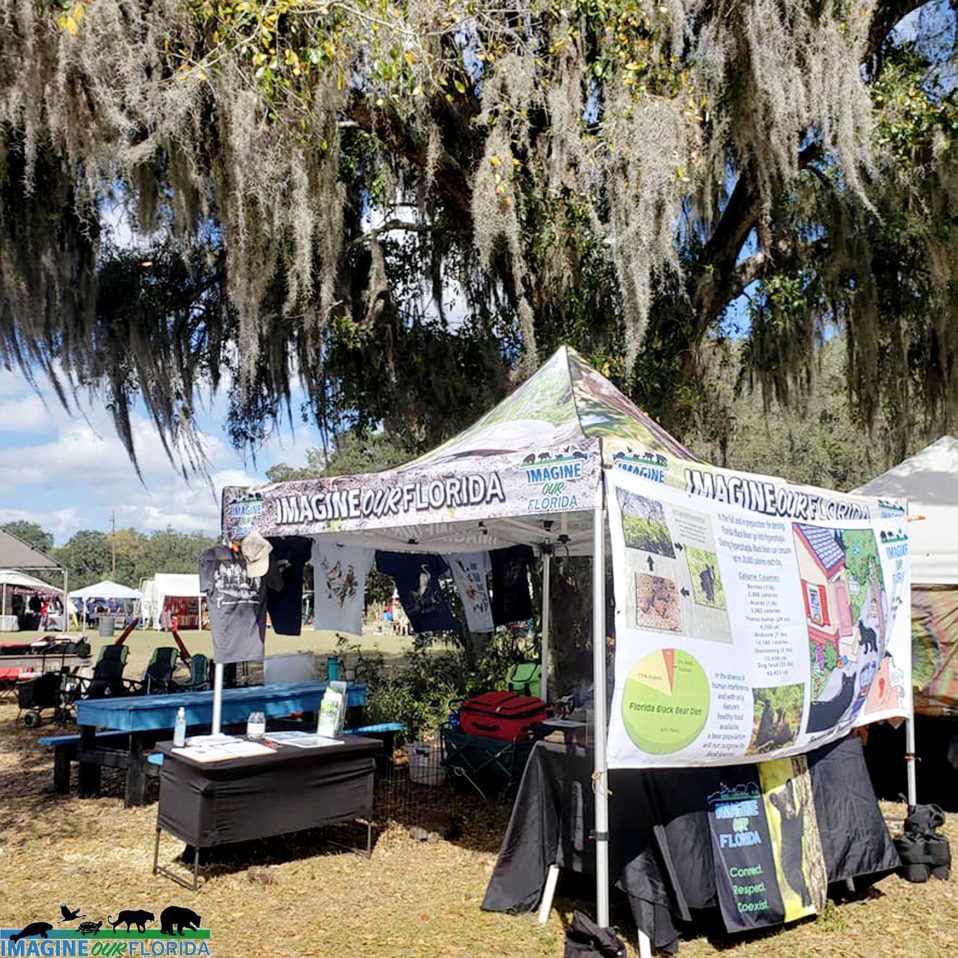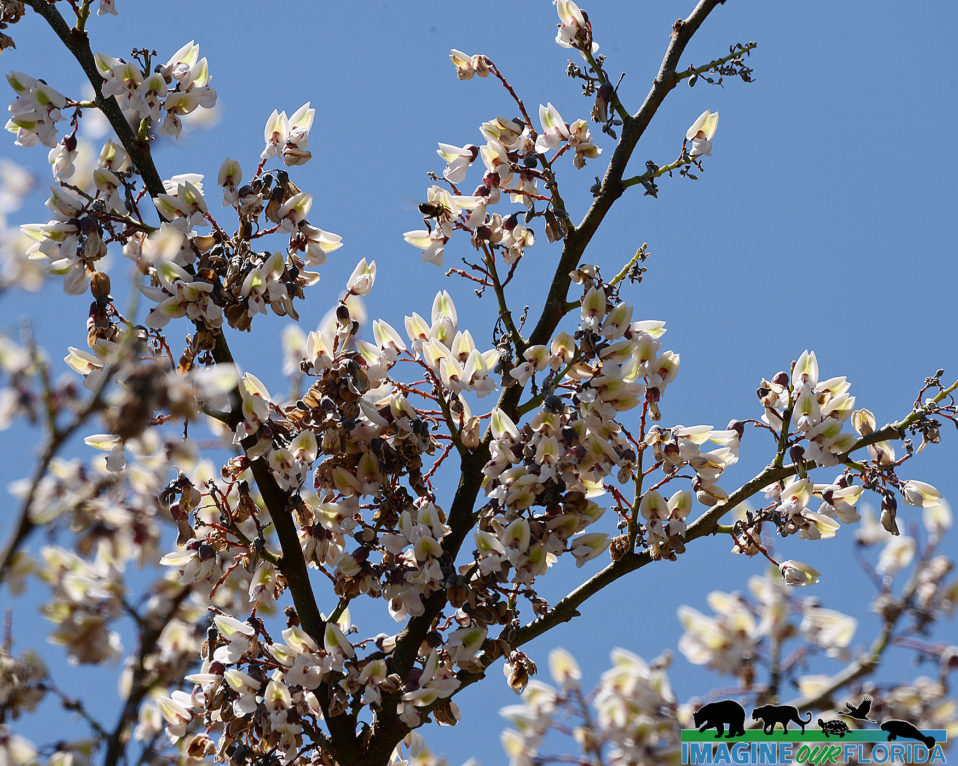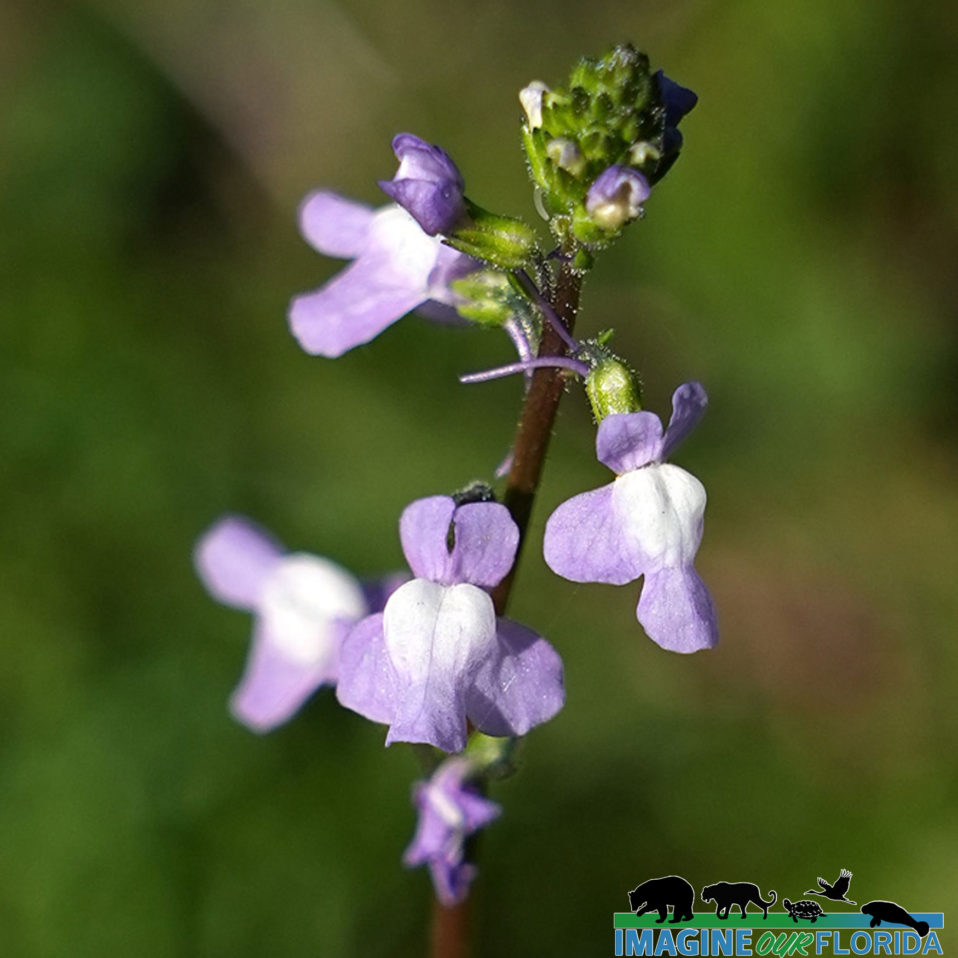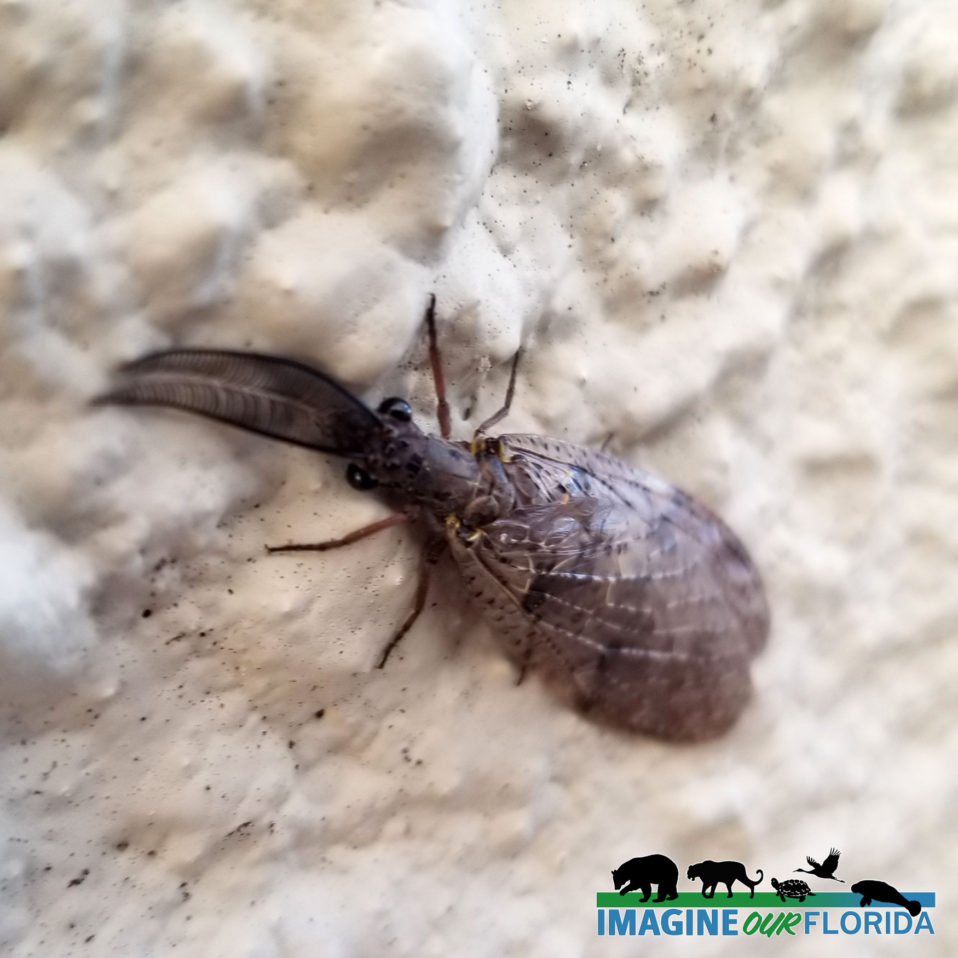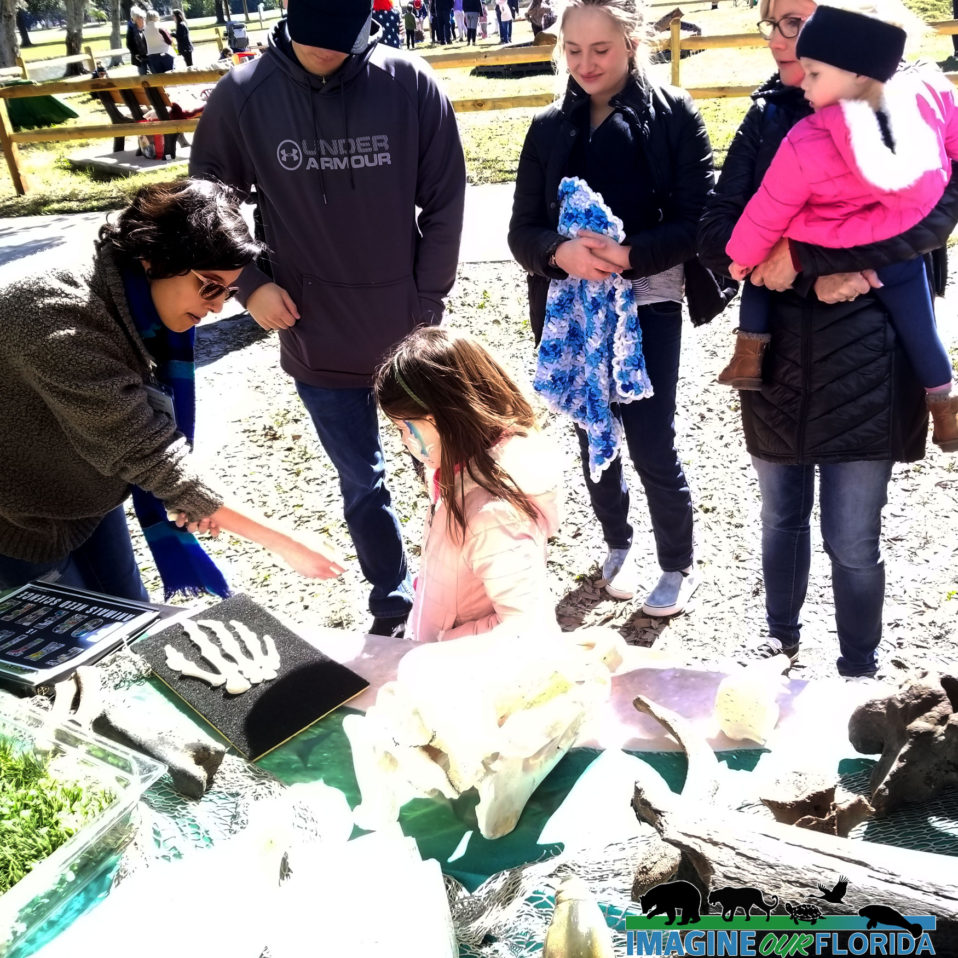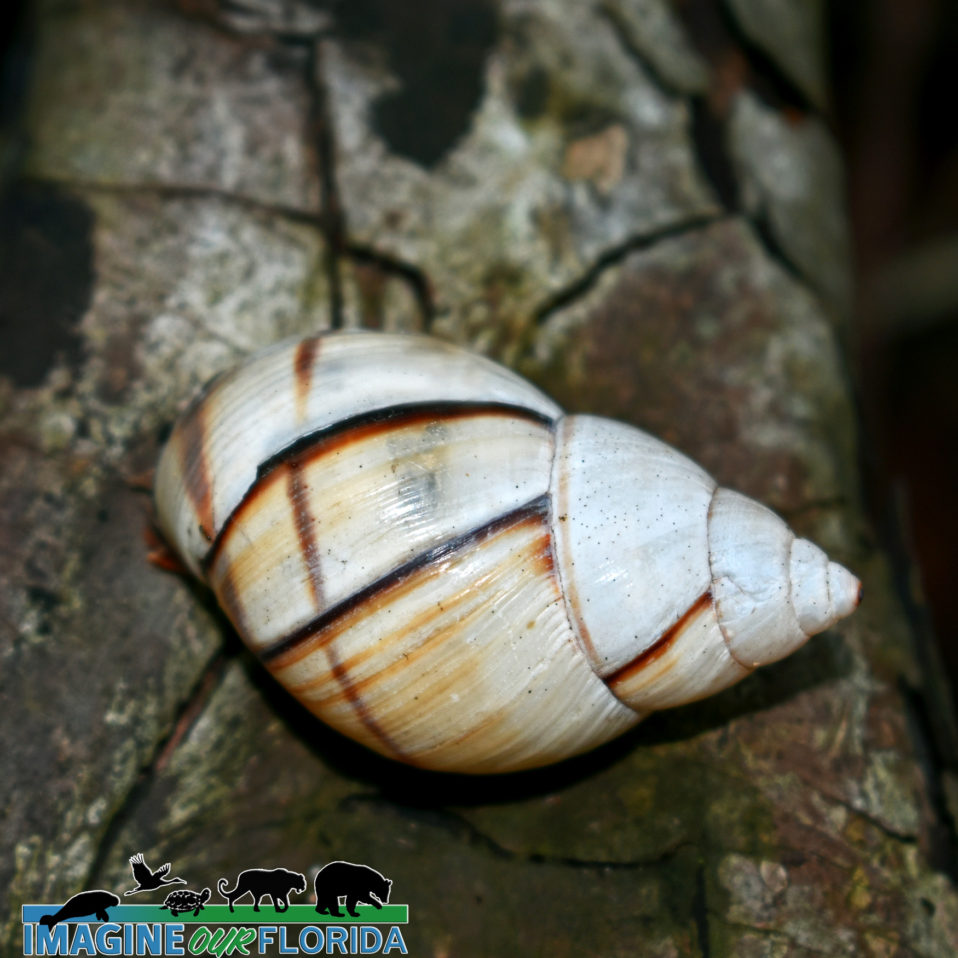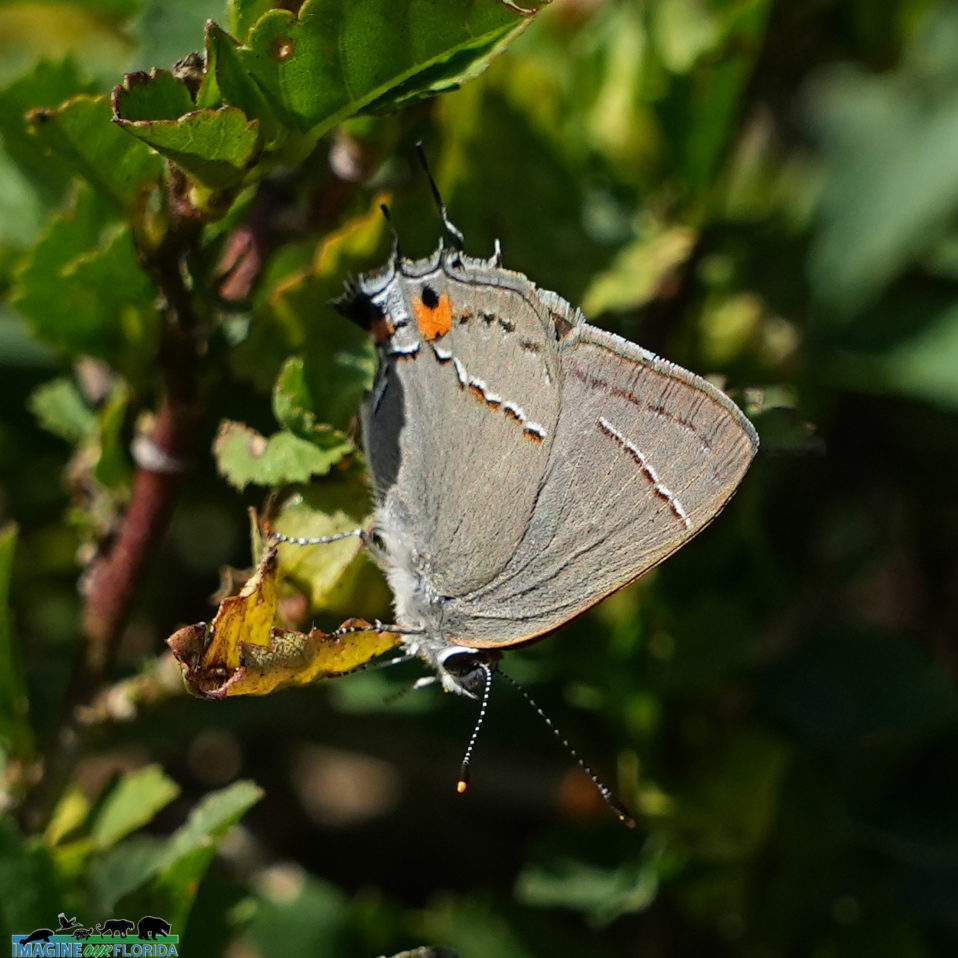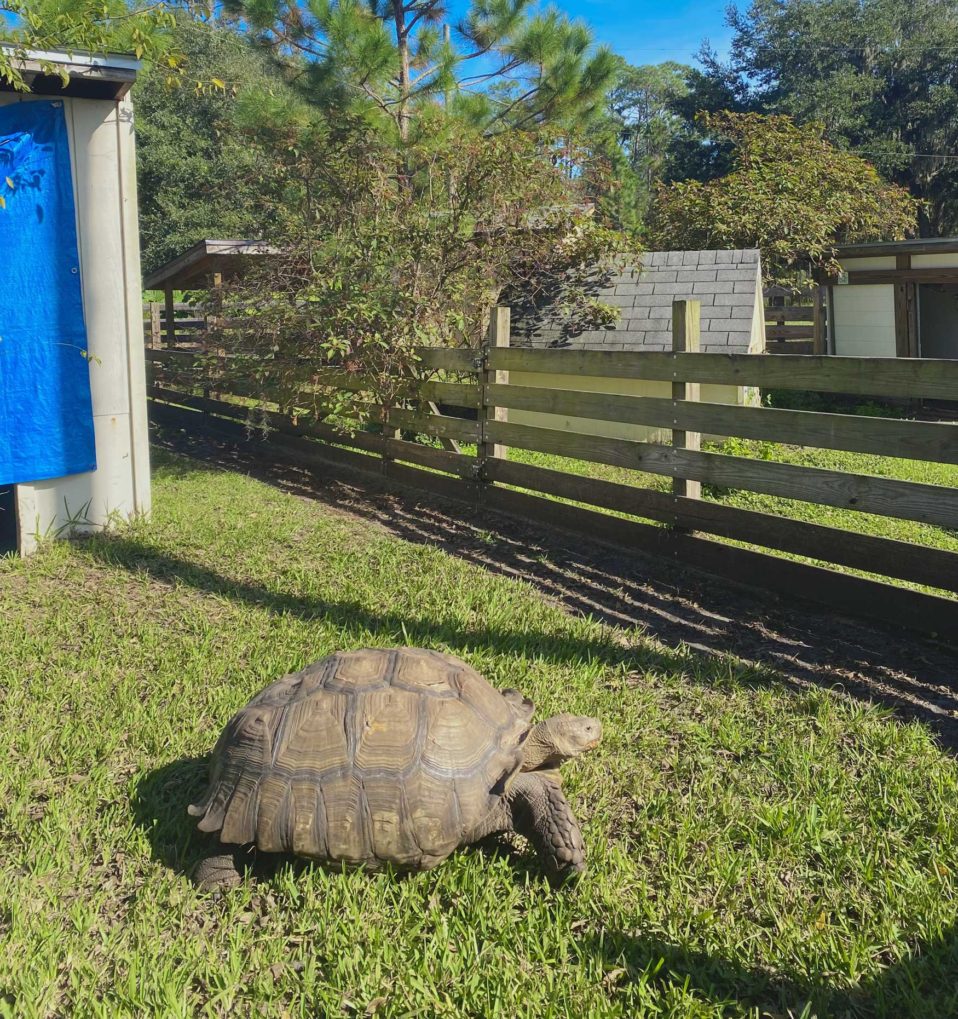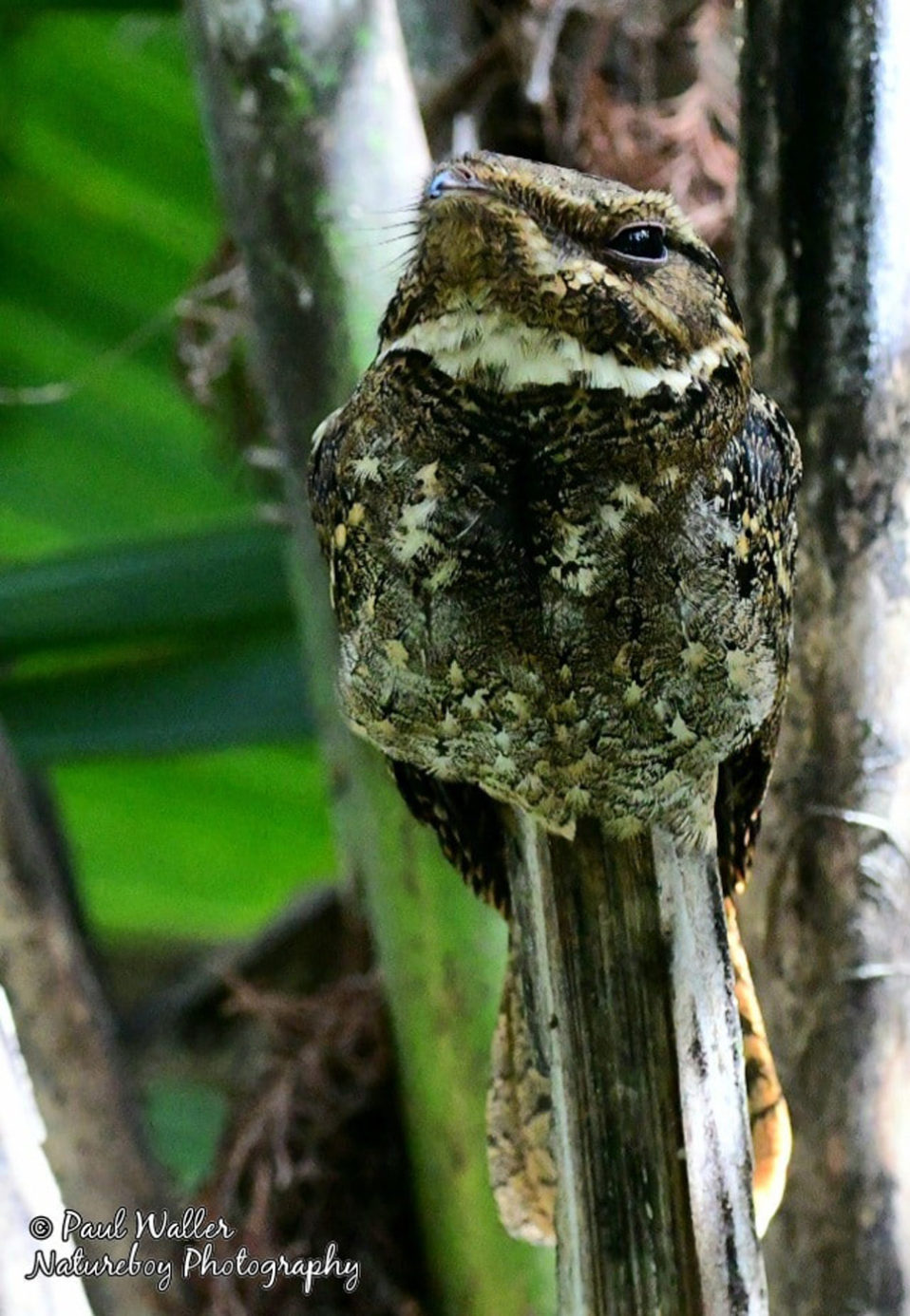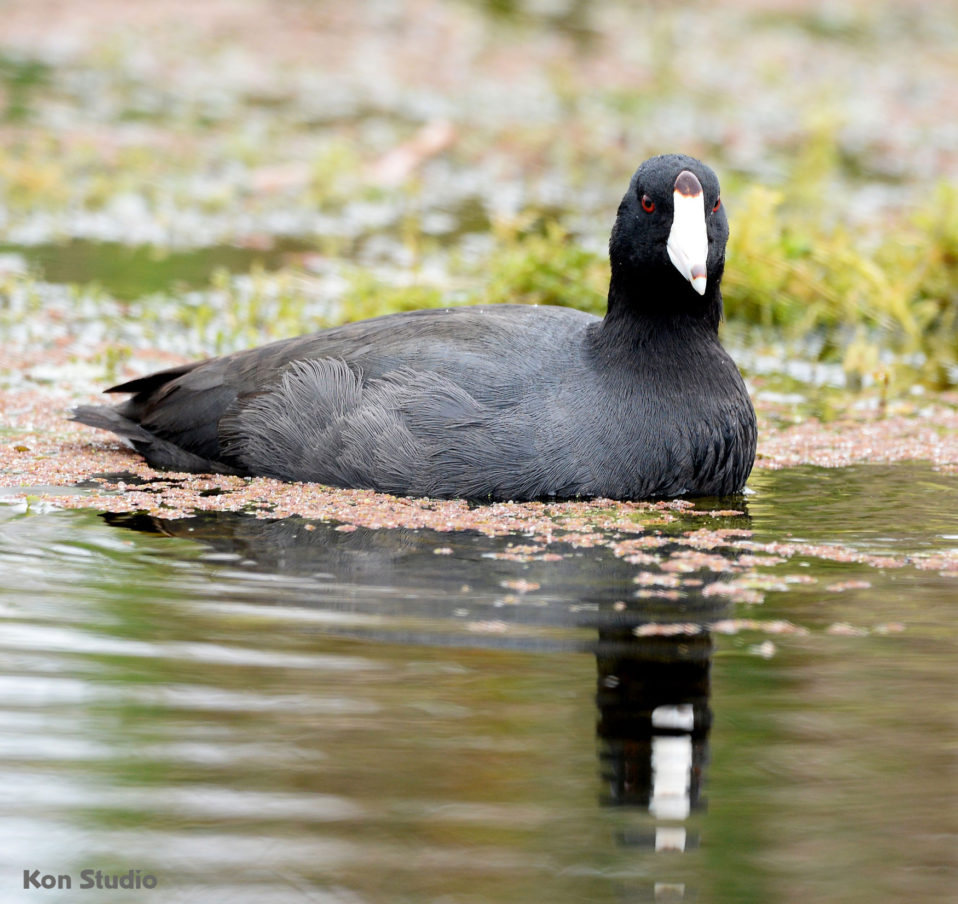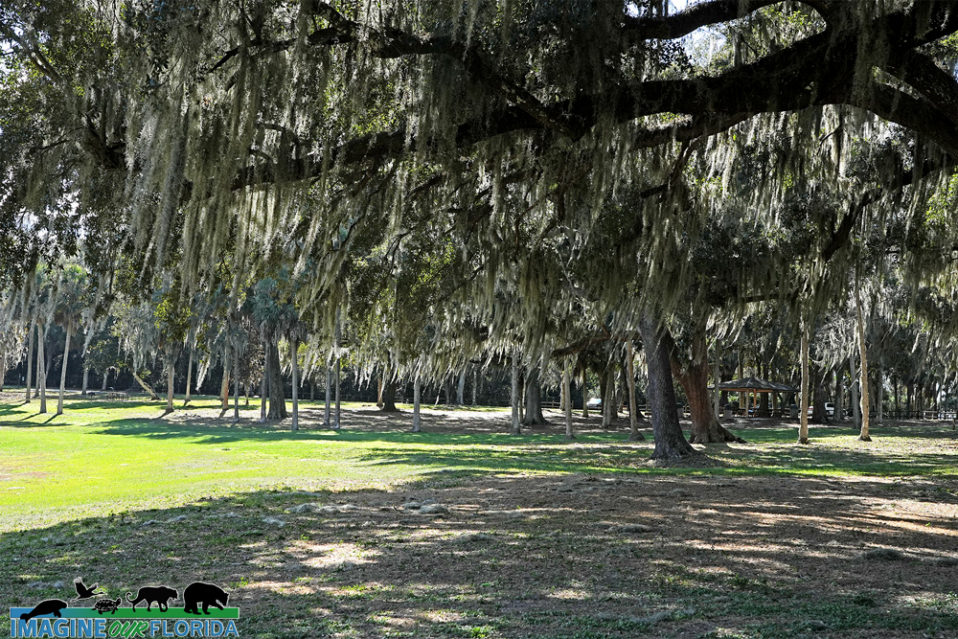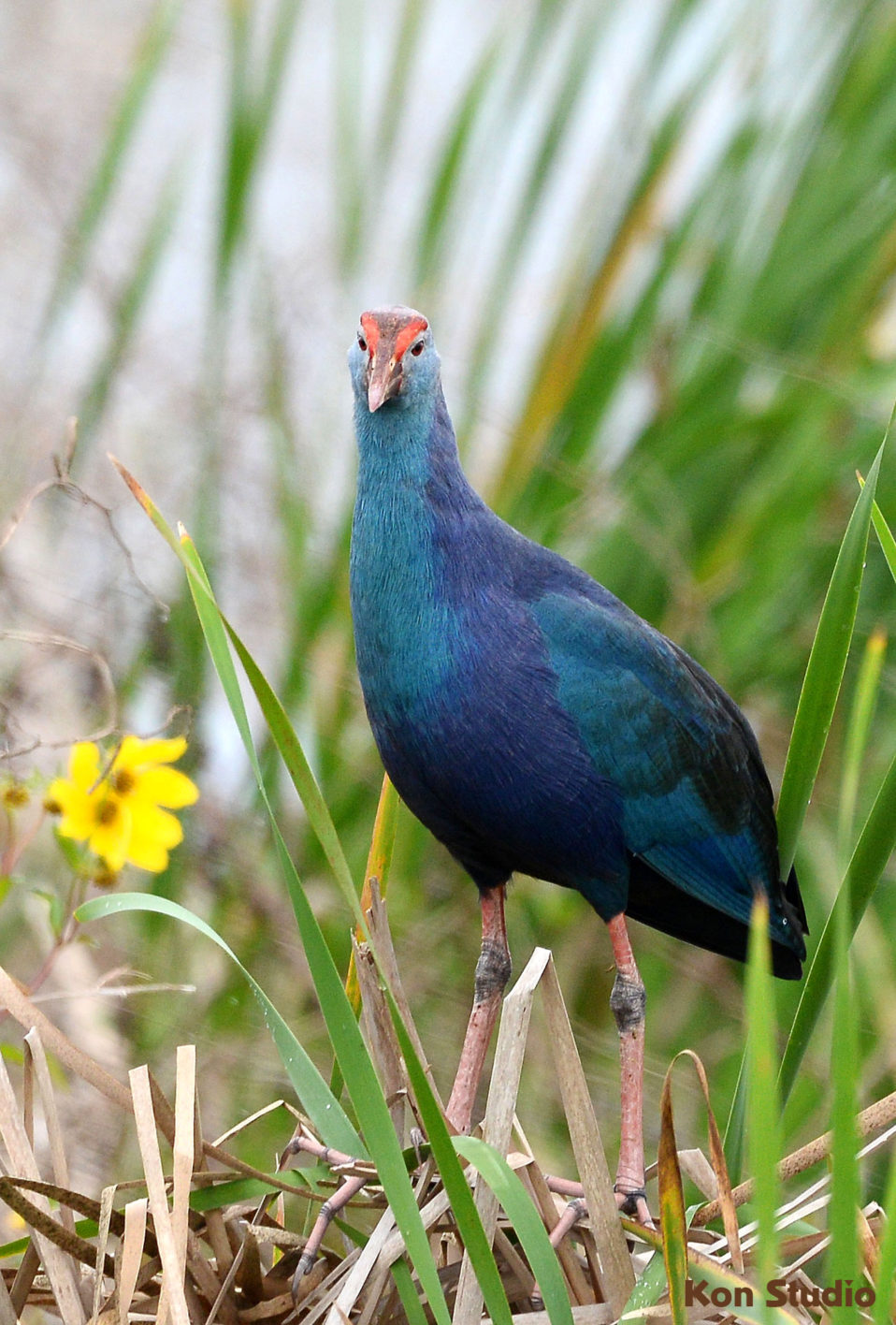Earth Day 2023 The Gopher Tortoise and Their Ecosystem
Celebrate Gopher Tortoise Day on April 10th. Gopher Tortoises are considered a Keystone Species. As herbivores, Gopher Tortoises disperse seed through their scat that. More than 350 species share their burrow for protection from weather, fires, and high temperatures. These animals include indigo snakes, rattlesnakes, skunks, gopher frogs, wolf spiders, and burrowing owls. The cover art depicts an arch with a keystone at the top. If the keystone is removed, the arch will collapse. Likewise, if the Gopher Tortoise is removed from its habitat, the ecosystem will collapse. Celebrate Earth Day Everyday Once again, a Florida bear hunt is “on the table.” Visit our booth at Earth Fest on April 29th at Concord Park in Casselberry. You will learn to connect, respect, and coexist with Florida Black Bears with our interactive hands-on display. Walk away with the knowledge of how to add your voice to protect our iconic Black Bears. Be sure to visit our website www.imagineourflorida.org to learn about wild animals, wildflowers, and wild places. Shop for nature inspired tees, hats and more. Imagine Our Florida, Inc. is a 501(c)(3) non-profit Science-based Educational Organization corporation.
Nine-banded armadillo
Nine-banded armadillos (Dasypus novemcinctus) are a species of mammal native to the southern United States, and Florida is no exception. Armadillos in Florida are found in many areas, from the Everglades to urban regions. These animals have adapted to a wide variety of habitats, from wetlands and forests to grasslands and scrubs. They can be seen foraging for food during the day or night, and their burrows provide them with shelter from predators. In addition to their unique physical traits such as their hard shell, armadillos also play an important role in controlling insect populations. As such, they are an important part of Florida’s natural environment. Unfortunately, many people villainize armadillos who root around their yards. Since they enjoy, worms and insects brought to the surface through moist soil, a wet yard attracts them. Preventing overwatering can deter them. If you must water, do so in the morning so the top layer can dry during the day. This will make them less likely to come around at night. You can also use a fence to exclude them. Ensure the fence extends at least 18 inches into the ground to prevent digging. A few small changes can help us coexist with our native wildlife. Photo Credit: Aymee Laurain
Eastern Phoebe
The Eastern Phoebe (Sayornis phoebe) is a small flycatcher with a short, thin bill that is used for catching insects. It is a plump little songbird with a brownish-gray color, a white belly, and a head as the darkest part. Birds with their fall plumage appear faint yellow on the belly and whitish edging on the folded wing feathers. Eastern Phoebes breed in wooded areas, generally near water sources. Their chosen nesting sites are typically human-built structures such as overhanging decks and bridges. They could nest on woody understory vegetation; it was possible that they chose this type of vegetation to become less visible or to provide perches near the nest for the adults. During winter they can be found in deciduous woods. They have an extensive range from parts of Canada to the eastern parts of the U.S. and parts of Mexico. Florida is part of their non-breeding habitat. The Eastern Phoebe’s diet mainly consists of flying insects such as butterflies, wasps, flies, and cicadas. They will also eat spiders, ticks, millipedes, and occasionally, small fruits or seeds. When hunting they will be on alert on a low perch often twitching their tails when prey is spotted. They will quickly leave their perch on quick wingbeats. After they catch their food, they often return to the same or nearby perch. Rarely seen in groups, even mated pairs spend little time together. Males are territorial and will defend their territory from others Eastern Phoebes, though they do tolerate other species. This species is of low conservation concern because their population increases as people spread across landscapes building human-made structures used by these birds. Photo Credit: Dan Kon Author: Destiny Alvarez – Fisheries and Wildlife Sciences, University of Oregon
5th Grade Lesson Plan Alligators Florida’s Prehistoric Predators
Click files below to download: LESSON PLAN POWERPOINT PRESENTATION POWERPOINT PDF PRESENTATION ANSWERS TO WORKSHEET
Pied-billed Grebe
The Pied-billed Grebe (Podilymbus Podiceps) is common across the U.S. The breeding range consists of some northern parts of the U.S. and some southern parts of Canada. They can be found year-round in the U.S., Mexico, the Caribbean Islands, and most of southern South America. They have compact bodies with virtually no tails and slender necks. Their heads are blocky with short, thick bills. They measure about 11.8-15.0 inches with a wingspan of 17.7-24.4 inches and weigh about 8.9-20.0 oz. The Pied-billed Grebe is brown, with slightly darker plumage above and tawny-brown plumage on their underparts. During spring and summer, the crown and nape are dark, with a black throat. When breeding, the bill is whitish with a black band in the middle but is yellow-brown otherwise. Juveniles have striped faces. Habitat types include freshwater wetlands, wet fields, bays, sloughs, marshes, lakes, slow-moving rivers, and sewage ponds. Pied-billed grebes forage in the water among aquatic plants and beneath mats of floating vegetation. This water bird generally dives for food and occasionally plucks insects from foliage, the water’s surface, or the air. They are opportunistic feeders and will consume a wide variety of prey items, large and small, though they mainly eat crustaceans and small fish, crushing them with their stout bills and strong jaws. To escape danger by “crash-diving,” making a splash by plunging in the water with head and tail raised above the belly. They can also dive headfirst, or sink quietly out of view leaving no trace. Another cool behavior that they display to avoid danger is by submerging, crocodile-style, just showing their eyes and nostrils above water. This bird needs a long running-flapping start to take off the water. This species is of low conservation concern as its population is widespread and fairly common. Photo Credit: Dan Kon Author: Destiny Alvarez – Fisheries and Wildlife Sciences, University of Oregon
Banana Spider
Banana Spider AKA Golden Silk Orbweaver The Golden Silk Orbweaver (Nephila clavipes) also known as the Banana Spider is one of the largest non-tarantula spiders in North America. It is the only species of its genus that lives in the western hemisphere and is found in Florida, across the gulf, up to North Carolina, and other southern countries in South America. Golden Silk Orbweaver webs can measure over 3 feet in diameter and are normally created in forest clearings and can often stretch across trails. The webs trap prey, and their primary diet of this orb weaver consists of a variety of insects. Females can reach up to an inch to an inch and a half. Their body is orange and brown with black feathery turfs on their legs. Males are distinctly different from females, they are much smaller at around a quarter of an inch in diameter, and their body is brown. Males are seen from July to September waiting for females to mature around August for a chance to mate with them. Males can be seen sitting around the female until she is ready to mate, and multiple males can occupy one web. They will fight each other to have a chance to mate with some even losing legs. Females will produce at least two egg sacks after mating. Each sack can contain hundred of eggs! The sacks can measure about a tenth of an inch and are covered in thick golden silk. Despite their impressive size and bright color, they are not dangerous to humans. Golden Silk Orbweavers are not venomous and will only bite if they are being held. Banana Spiders can be observed year-round in Florida, though autumn is the best time to view them. If you spot them, remember to keep a safe distance and never intentionally disturb their webs. Spiders of all shapes and sizes play an important ecological role in Florida’s natural and developed areas. Photo Credit: Andy Waldo Author: Destiny Alvarez – Fisheries and Wildlife Sciences, University of Oregon
Tufted Titmouse
The Tufted Titmouse (Baeolophus bicolor) is common in eastern deciduous forests and is a frequent visitor to feeders. They have a large head with large black eyes, thick necks, and a full compact body. They have a distinctly pointed crest and stout bill with a black patch above. Measuring about 5.5-6.3 inches with a wingspan of about 7.9-10.2 inches, they weigh about 0.6-0.9 oz. Plumage is a soft silvery gray coloration from above and a white color below, with a rusty or peach-colored wash down the flanks. This passerine bird eats mainly insects in the summer which include caterpillars, beetles, and ants, though they also feed on seeds, nuts, and berries, including nuts and beech nuts. In fall and winter, they will hoard their shelled seeds in bark crevices. As acrobatic foragers, they often hang upside down or sideways while investigating cones, undersides of branches, and leaf clusters. They are very vocal birds and are quick to respond to the sounds of agitation in other birds, either going to investigate or joining a group of birds that are mobbing a predator. The Tufted Titmouse nests in cavities from natural holes or old nest holes made by several woodpecker species and will also nest in artificial structures such as nest boxes, fenceposts, and metal pipes. Damp leaves, moss and grasses, and bark strips are used to create their nests. The nest is lined with soft material such as hair, fur, wool, cotton, and even sometimes plucked hairs from living mammals. Nest construction takes about 6 to 11 days. Three to nine eggs are laid in a clutch, incubation is about 12 to 14 days, and the young can leave the nest at about 15 to 16 days. Their population is common and even increasing which makes this little bird a low conservation concern. The Tufted Titmice have gained popularity as a backyard feeder bird. Photo Credit: Dan Kon Author: Destiny Alvarez – Fisheries and Wildlife Sciences, University of Oregon
Bear Point Sanctuary
Bear Point Sanctuary. Located in the Fort Pierce in the middle of Hutchinson Island in St Lucie County, Bear Point Sanctuary is a great nature escape along the shores of the Indian River Lagoon. Bear Point Sanctuary is known as the location of the last recorded Black Bear Hunt by the local Native Americans on Hutchinson Island. When was the last time you thought about Bears by the beach? It just goes to show how much has changed in Florida. The Sanctuary and trail are part of the 317-acre Mitigation Bank managed by St. Lucie County and the St. Lucie Mosquito Control District. A series of mangrove-lined mosquito control impoundments are featured along the Indian River Lagoon. A more than-mile-long trail between the Indian River Lagoon and mangrove saltwater marsh is excellent for hikers, bird watchers, and bicycles. Don’t forget to kayak along the mangrove-rich shores. The trail is dotted with several small wooden docks and natural banks. Take a quick hike or bike ride down the unpaved [hard packed] dike trail west to an observation platform on the impoundments. There are two great viewing spots along Bear Point Cove: an elevated viewing platform that takes you above the mangroves and a 500-foot pier. Wading birds including Great Egrets, Roseate Spoonbills, Wood Storks, Reddish Egrets, and Green Herons are familiar sights in the mangroves. The sanctuary is a beautiful addition to the Great Florida Birding Trail. Use the kayak launch and chance a personal encounter with manatees and sea turtles. It is a guarantee to see pelicans and dolphins in the water. If the timing is right might even find yourself in the middle of a school of mullet. We should also make note that preservation places like The Bear Point Mitigation Bank are secured through beneficial environmental credits that help to improve the health of the Indian River Lagoon. Author and Photo Credit: Bobby Putnam – IOF Brevard County Lead Educator
Lake Wales Ridge State Forest
The Lake Wales Ridge State Forest is 26,563 acres divided into several separate sections and is located a few miles off of US 27 just outside Frostproof in Polk County. Lake Wales Ridge State Forest derives its name from the narrow ridge that runs north and south through the Florida Peninsula. In ancient times, when ocean levels rose and covered nearly all of the present-day peninsula known as Florida was underwater, the ridge was an island where plants and animals continued to evolve in isolation. The ridge is the highest and oldest ridge in Florida extending about 100 miles. Today the scrub ecosystem on the ridge has a high concentration of rare and endangered plants, such as a pygmy fringe tree, scrub plum, and scrub-blazing star. Many of Florida’s rare and endangered plants and animals flourish in the forest. The forest is managed for multiple uses, including outdoor recreation, protection of endangered and threatened species, and maintenance of natural communities. Many lakes are accessible from Lake Wales Ridge State Forest. Lake Godwin is located in the forest on Arbuckle, and Lake Weohyakapka (Walk in Water) adjoins the forest, while Lake Reedy is located nearby. Primitive camping is allowed at seven designated campsites along hiking trails and two primitive campgrounds on the Arbuckle and the Walk in Water tracts but make sure you make a reservation. There are restrooms, picnic tables, and several hiking options but NO electricity. Volunteers with Florida Trail Association constructed most of these trails, and if you walked all the connected loops, you’d cover 23 miles. Make sure to bring plenty of water because there is NO drinking water available. For more information click here: https://www.fdacs.gov/…/Lake-Wales-Ridge-State-Forest Photo Credit: Andy Waldo Author: Renada Hill – Student Valencia College
Yellow-throated Warbler
The Yellow Throated Warbler (Setophaga dominica) is well named for its bright yellow throat; they are gray and white with black streaks down the sides. They are small birds measuring about 5.1-5.5 inches with a wingspan of 8.3 inches and weighing about 0.3-0.4 oz. Their range consists of the central and eastern parts of the United States, parts of Mexico, and the Caribbean islands. Florida is part of their non-breeding habitat. Their habitats are the same during the breeding season and winter range; they live in pine forests with an open understory, bald cypress swamps, and woodlands near streams. The warbler’s diet consists of insects such as beetles, caterpillars, and flies. They forage more deliberately and with less fluttering than other warblers as they will probe for insects in crevices, pine cones, and clusters of pine needles. During the non-breeding season, they also forage on insects attracted to agave and coconut palm flowers. During the breeding season, males will establish territories with song and generally will only interact with their mates and offspring. During the non-breeding season, they form mixed-species flocks with Carolina Chickadees, Tufted Titmice, and other warblers. According to the North American Breeding Bird Survey, the Yellow Throated Warblers are common and are a species that is of low conservation concern. Photo Credit: Andy Waldo Author: Destiny Alvarez – Fisheries and Wildlife Sciences, University of Oregon
Little Blue Heron
The Little Blue Heron (Egretta caerulea) is a native species of Florida. They are relatively common in peninsular Florida, though they are rare in the panhandle. They can be found in fresh, salt, brackish, swamps, ponds, lakes, and rivers. They can measure 22.1-29.1 inches with a wingspan of 39.4-41.3 inches and weigh up to 10.4-14.5 oz. Juveniles look different from adults; they are white all over, with the exception of their outer wing feathers (outer primaries) which can have some dusky tips. Juveniles molting into adult plumage will be patchy with colorations of blue and white. The adults are dark all over, their head and neck are maroon in color during the breeding season, and during the non-breeding season, it has a purplish head and neck. Their body is a dark slate blue. They have yellow eyes and greenish legs, and the base of their bill is pale blue with a black tip. The Little Blue Heron is a stand-and-wait predator. They watch the water for prey, changing location by strolling or flying to a completely different site. Their diet consists of fish, insects, shrimp, and amphibians. They are solitary predators preferring to hunt alone, along freshwater systems, and on floating vegetation. However, they nest in colonies on trees among other nesting herons and wading birds. Nests are built out of sticks and are placed in trees and shrubs and will lay up to three to five blue-green eggs that will hatch in 20 to 24 days. The young can leave the nests and fly (fledged) at 28 days of age. The little blue heron’s current threats are not well understood. Still, they may include coastal development, disturbance at foraging and breeding sites, environmental issues, degradation of feeding habitat, reduced prey availability, and predators. Other threats may include exposure such as pesticides, toxins, and parasite infection. The U.S. Migratory Bird Treaty Act protects this species. Florida’s Endangered and Threatened Species Rule lists them as a state-threatened species. Photo Credit: Dan Kon Author: Destiny Alvarez – Fisheries and Wildlife Sciences, University of Oregon
Cedar Waxwing
The Cedar Waxwing (Bombycilla cedrorum) is a sleek bird with a large head, a short neck, and a short wide bill. They have a crest on top of their head that often lies flat and droops over the back of their head. Their wings are similar to the starling, it is broad and pointed, and their tail is short and square-tipped. They can reach lengths up to 5.5-6.7 inches, with a wingspan of 8.7-11.8 inches. Cedar Waxwings are pale brown on the head and chest fading to soft gray on the wings. The belly is pale yellow, and the tail is gray with a bright yellow tip. The Cedar Waxwing has an extensive range, which includes all of the U.S., parts of Mexico, and parts of Canada. Florida makes up parts of their non-breeding habitat. They inhabit deciduous, coniferous, and mixed woodlands, particularly areas along streams. They are social birds that form large flocks and often nest in the loose structure of a dozen or so nests. They feed on fruits year-round. The birds’ name derives from their appetite for cedar berries in winter, though they eat a variety of fruits. In summer Cedar Waxwings will supplement their fruit diet with protein-rich insects. Cedar Waxwings are listed as ‘least concern’ as their population is stable; however, they are vulnerable to window collisions and being struck by cars as the birds feed on fruiting trees along roadsides. Photo Credit: Lynn Marie Author: Destiny Alvarez – Fisheries and Wildlife Sciences, University of Oregon
Highlands Scrub Natural Area
Highlands Scrub is just over 34 acres of rare pineland scrub in Pompano Beach in eastern Broward County. It was formerly known as the Jungle and is considered one of Broward and south Florida’s last substantial remaining sand pine scrub communities. This rare type of community, unique to Florida, is one of the most imperiled in the state. With only two percent of this habitat remaining in Broward County, this nice little nature park is extra special. Highlands Scrub has a large paved and handicapped-friendly hiking trail, pavilion, ample parking, and benches. The trail loops through the site and is well-marked with some of the most informative and easy-to-read interpretive signs. Canopied by sand pines and scrub live oaks, the trail has an underbrush of saw palmetto, scrub oaks, gopher apple, pawpaw, Mexican fire plant, partridge pea, lesser Florida spurge, narrow-leaf silkgrass, and Feay’s Palafox. Broward County has done great fire management in the Highlands Scrub Natural Area. The positive influence of their prescribed burn practice can be appreciated in the north portion of the property with the new growth of understory plants, such as greenbrier, rosemary, wildflowers including partridge pea and the endangered Curtiss’ milkweed, and the gorgeous silkgrass field. Amenities: Information Kiosk Interpretive Signage Nature Trail paved Picnic Area Seating Area For more information: https://www.broward.org/parks/Pages/default.aspx Author and Photo Credit: Bobby Putnam – IOF Brevard County Lead Educator
Wood Stork
The Wood Stork (Mycteria americana) is a large, long-legged wading bird that can reach lengths up to 35-45 inches with a wingspan of 60-65 inches. They are completely white all over with the exception of their black flight feather and tail. The head has no feathers and is essentially bald, the skin is gray, rough, and scaly. They have black bills and black legs with pink toes. Adults are voiceless and are capable of only making hissing sounds. Wood Storks feed in groups, and their head will be down feeling for prey in open wetlands. Prey consists of small to medium-sized fish, crayfish, amphibians, and reptiles. They have a unique hunting technique, where they will move their partially opened bill through the water, snapping up prey when prey comes in contact with the bill. They fly with their head and legs outstretched, soaring in a similar fashion to a raptor or vulture. The Wood Stork is the only species of stork that breeds in the U.S. They breed in Florida, Georgia, South Carolina, and North Carolina. They have very social nesting habits and are often seen nesting in large colonies of 100-150 nests. The nests are primarily built in trees that stand in water. In Florida, Wood Storks can lay eggs from October to June. Two to five eggs are laid in a single clutch per season. The incubation period can last up to 30 days, and young storks can fly at 10-12 weeks. Non-breeding wood storks have a large range throughout North America, to northern Argentina in South America. The South Florida population has declined due to agriculture expansion and altered hydro cycles. Normal flooding is important to increase the prey population for wood storks, and successful breeding depends on normal hydro cycles. The drainage of cypress stands prevents wood storks from nesting, and it promotes predation from raccoons. The wood stork is protected by the U.S. Migratory Bird Treaty Act and is listed as a threatened species by the Federal Endangered Species Act. Florida’s Endangered and Threatened Species Rule listed the wood stork as a Federally designated Threatened species. Photo Credit: Dan Kon Author: Destiny Alvarez – Fisheries and Wildlife Sciences, University of Oregon
Walk In the Water Campground
Walk In the Water Campground is located on the Lake Wales Ridge State Forest, (Polk County) on the Walk In the Water tract, approximately 44 miles SE of Lakeland, FL. It features eight primitive campsites that all require an advanced reservation. There is a picnic table and a fire ring at each site. There is no water or electricity available. There are two port-a-pots and a dumpster at the campground. Some recreational activities that can be enjoyed here are: hiking, bicycling, picnicking, horseback riding, and wildlife viewing. Hikers can take advantage of the two hiking trails on the Walk In the Water tract, which include Big Bay Trail, Scrub Jay Loop Trail, and two designated horseback riding/equestrian trails (Red and Blue). Speaking of Scrub-jays….The trail leading from the entrance at King Trail Gate is an excellent place to see Florida scrub-jays, and some visitors may be fortunate enough to see short-tailed hawks. The area is part of the Great Florida Birding and Wildlife Trail. Purchased under Florida’s Conservation and Recreation Lands program, Walk-in-the-Water protects fast-disappearing scrub and sandhill communities, which are home to many rare plants and animals. One such plant is the endangered scrub plum, one of the first scrub plants to bloom in the year, flowering in January or February before its leaves open. And if you are wondering…YES! Yes, you can bring your fur baby along for the adventure. Dogs are allowed. Make sure to have your leash because there is an on-leash rule that applies. For more information, click here: https://www.fdacs.gov/…/Lake-Wales-Ridge-State-Forest Author: Renada Hill – student – Valencia State College Photo Credit: Dan Kon wa
Black-and-white Warbler
Black-and-white Warblers, Mniotilta varia, spend their winters in Florida and California, with some migrating all the way to northern South America. These medium-sized warblers can be found in a number of habitats including forests, wetlands, mangroves, and urban settings. Insects and butterfly larvae make up their diets. Look for these agile birds on tree trunks and thick limbs where they use their downcurved bills to probe moss and bark to pluck insects. Photo Credit: Lynn Marie
Halpatiokee Regional Park
Located in Stuart, Halpatiokee Regional Park is Martin County’s largest park. There are 65 acres surrounded by wetlands, with 4 miles along the South Fork of the St. Lucie River waiting to be explored. Discover the many species of native plants, including 13 threatened or endangered species, that thrive there. Saunter through the scrub, pine flatwoods, and oak hammock. Plenty of gopher tortoises call Halpatiokee home. There are 8 miles of hiking and 8 miles of biking trails. Bring your canoe or kayak and paddle for 4.2 miles along the St. Lucie River. Look for otters, turtles, a variety of fish, and alligators. Spend a night or more at the riverside primitive campsite. Covered picnic areas and pavilions are the perfect places to enjoy a picnic lunch. For more information: https://www.martin.fl.us/Halpatiokee Photo Credit: Courtney Smith
Yamato Scrub Natural Area
The 217-acre Yamato Scrub Natural Area in Boca Raton sits on the largest natural section of the Atlantic Coastal Ridge. The Atlantic Coastal Ridge once ran from St. Johns County into Miami-Dade County. As the largest natural area in South Palm Beach County, it is also the largest portion of native scrub habitat this far south in Florida. Virtually every acre of the site provides habitat for at least one rare or endangered plant species, animal species, or natural community. With five district habitats to explore and a variety of cross-trails that create long and short loops, you can choose the difficulty and distance of your hike. While walking many of these trails, it is easy to forget how developed the surrounding areas have become. As you explore the diverse habitats of scrub, pine flatwoods, sand pine, hammock, and marsh, it should is not surprising to encounter several species. Look for gopher tortoises, cottontail rabbits, raccoons, squirrels, sky blue lupines, pawpaws, staggerbush, tarflowers, love vines, deer moss, large flower rosemary, ironweed as well as long leaf pines, sand pines, wild olives, scrub oaks, and an array of bromeliads. Two trails make up a total of 3.5 miles of hiking trails. Trails include the 0.7-mile accessible Cicada and the 2.8-mile Skyblue Lupine. Most of the trails are moderately easy and paved. Yamato Scrub can be explored during a long break, but you can easily split your hikes into two or four sessions. The paved trail and the sand trail can each be hiked in 2 separate outings or split into two hikes each to give yourself plenty of time to discover the wildlife and wildflowers that thrive in Yamato Scrub Natural Area. There is a portable toilet at the trailhead. A portion of the trail system is wheelchair accessible. Pets are not permitted. For more information: https://www.myboca.us/…/Yamato-Scrub-Natural-Area-59 Author and Photo Credit: Bobby Putnam – IOF Brevard County Lead Educator
Wilson’s Warbler
Wilson’s Warblers, Cardellina pusilla, are easily recognized with their bright yellow feathers and black cap. After breeding in the western U.S. and Canada, these small warblers head to Mexico and Central America for the summer. During migration, they pass through all 48 states. Look for them in shrubby areas of scrubs and forests near a water source. These birds rarely stay still. They fly out and back from their low perches to catch insects in mid-air. They are quick to snatch spiders, caterpillars, and larval insects off of twigs and leaves. According to the North American Breeding Bird Survey, Wilson’s Warblers population declined by 60% between 1966 and 2019. Threats include habitat loss on their migratory paths. Create bird-friendly yards with native Florida shrubs and trees to help these birds recover.
Vermilion Flycatcher
The Vermilion Flycatcher’s genus name, Pyrocephalus rubinus, means “fire-headed.” The brilliant male pictured here is an uncommon visitor to Florida. Females are grayish brown with a yellowish-red underside. Vermilion Flycatchers are year-round residents in Central and South America. However, they are known as wanderers and have traveled to British Columbia. Some spend their winter along Florida’s Gulf coast. These small, but striking birds, prefer open habitats with a water source where they perch on low branches, shrubs, and fences. They fly swiftly to catch their prey and loop back to their perch. Food consists of insects, including bees, crickets, and beetles. Larger insects, such as butterflies or grasshoppers, are slammed against the perch to make them suitable for eating. Although scarce in Florida, Vermilion Flycatchers are common in most of their range and, thus, are a species of low-level concern. Photo Credit: Lynn Marie
White Wagtail
White wagtails, Motacilla alba, are common birds across Asia and Europe. A small population lives in western Alaska. These passerine birds are 6.5 to 7.5 in long. They can be found in open areas near water or in urban areas foraging insects and small invertebrates. The white wagtail is the national bird of Latvia and has been featured on many stamps throughout Eurasia. Fun Fact: In Latin, Motacilla alba means little mover. However, because the bird constantly wags its tail, some medieval writers thought it meant wagtail. Photo Credit: Lynn Marie
Crystal Lake Sand Pine Scrub
Crystal Lake Sand Pine Scrub, located in Pompano Beach, is 24 acres of scrub and scrubby flatwoods that are dominated by sand pines. These unique habitats are rare habitats in Florida, rarer still this far south. This scrub habitat site is one of the rarest and most ecologically sensitive communities in South Florida since most have vanished in this area of the state due to development. Sadly there is less than 2% of Broward County’s original sand pine scrub remaining. Sitting atop the Atlantic Coastal Ridge, Crystal Lake Sand Pine Scrub has about 3,200 feet of paved and unpaved trails cutting through it. This is a perfect place to step back into south Florida’s natural past. This remnant piece of sand pine scrub reflects a bygone land of sand pine or scrub oaks and a sub-canopy of saw palmetto scattered with patches of bright white sands dotted with reindeer lichen that is reminiscent of an ice age tundra. Both trails are well marked and maintained and are easy hikes. There is plenty to take in on the primary and paved Sand Pine Trail, which has plenty of benches and interpretive signs along the way. Please keep in mind that there are no bathrooms or water available. If you have a little more time, would like to get off the paved path, and don’t mind some sand in your shoes. I suggest taking the “secret” natural surface trail called the Gray Fox, where you can meander through a natural path through the preserve. After walking into a sandy opening, look forward to a slightly overgrown path entrance. This path will take you to the secluded seating area that is perfect for silent meditation and offers plenty of seating for a peaceful group gathering. On either path, keep your eyes, ears, and other senses open for sand scrub unique vegetation. Look for reindeer lichen, spike moss, prickly pear, pawpaw, scrub mint, rosemary, powderpuff lichen, staggerbush, dayflower, gopher apple, and green briar. A variety of butterflies live among the native plants. If you are blessed enough, you might encounter a gopher tortoise, like Slow Mama- the iconic animal of Florida scrub, several songbirds, warblers, cardinals, blue jays, mockingbirds, gray squirrels, cottontail rabbits, and black racer snakes. Just because it is winter does not mean you can’t take advantage of all that Our Florida has to offer. If you are a snowbird, visitor, or resident of the area, make sure that you take some time to enjoy this very special piece of Florida. Amenities: – Information Kiosk – Interpretive Signage – Nature Trail, paved and sand – Picnic Area – Seating Area, Pavilion For more information: https://www.broward.org/Parks/Pages/park.aspx?park=8 Author and Photo Credit: Bobby Putnam – IOF Brevard County Lead Educator
Lake May Reserve
Lake May Reserve is a beautiful conservation area located in Lake County in Eustis. There are 136 acres of natural Florida with well-marked trails to explore. Saunter through Pine Flatwoods, Longleaf Pine/Turkey Oak Mesics, Longleaf Pine Sandhill, and Sand Pine Scrub. Stroll around Lake May and take in the 20-acre lake while discovering the plants and wildlife that thrive in the floodplain. Be sure to stop at the Lake May overlook platform to enjoy watching native and migratory ducks and wading birds. A canoe launch is provided for those who want to enjoy the water. Lake May is an excellent birding destination where native and migratory birds enjoy the natural Florida landscapes. Various wildflowers make this a great place to watch bees and butterflies. Look for Gopher tortoises and their dens, Black bears, black racers, southern toads, and more. Pets are not permitted at the reserve. Restrooms and a water fountain are at the entrance. For more information: https://www.lakecountyfl.gov/parks-and-trails/public-lands Photo credit: Dan Kon
Phaon Crescent
The Phaon Crescent, Phyciodes phaon, can be found throughout Florida. Look for these common butterflies with a wingspan of 1 – 1 1/2 inches fluttering low to the ground. Phaon Crescents produce several broods each year. Their habitats include disturbed areas, pastures, canal edges, dunes, and roadsides. Frogfruit, also known as turkey tangle fogfruit, is their larval host plant. If you would like to attract these beautiful butterflies to your yard, consider planting a ground cover of native Frogfruit. Photo Credit: Dan Kon
Brunner’s Mantis aka Northern Grass Mantis
The Brunner’s Mantis (Brunneria borealis) is also known as Brunner’s stick mantis or northern grass mantis. It is native to the southern United States. The female mantis lays her eggs in an egg case. Nymphs emerge looking much like an adult and go through several molts as they grow. The Brunner’s Mantis is a carnivore and captures its prey of insects and grasshoppers by ambush. Look for these 2.5 – 3.5 inch hard-to-see insects in tall grass. Fun Fact: There are no males in this species. Females reproduce asexually through parthenogenesis.
Loxahatchee River Battlefield Park/Riverbend Park
Located in northern Palm Beach County and adjacent to the 665 acres of Riverbend Park, Loxahatchee River Battlefield Park is 61 acres of beautiful, natural, and historic Florida. Both parks are full of fantastic outdoor activities for everyone. The parks have a general appearance and upkeep similar to the level of national parks. This site includes not just one but two of the significant battles that occurred in 1838 during the Second Seminole War: Powell’s Battle – January 15, 1838 and Jesup’s Battle – January 24, 1838. Thanks to current preservation efforts, you also get to see Florida as the first settlers did. With almost 10 miles of hiking/biking trails, 7 miles of equestrian trails, and 5 miles of canoeing/kayaking trails you could spend hours and see only half of Loxahatchee River Battlefield Park. With its location near I95 in Jupiter, one could easily stop for a quick stroll to stretch your legs on the first trail that is paved. If you have more time, it is even better to saunter further down along the Wild and Scenic Loxahatchee River, check out the old Cracker Farmstead, and picnic in the shade under one of the many Seminole chickees built throughout the park. If you would like a cardiovascular experience, the large hard packed trails are also biker friendly and shared with hikers throughout the park. If you would rather take the water route, make sure to come with plenty of time to explore the wild Loxahatchee River. If you would like to bike or kayak and don’t have one, don’t worry, the park has you covered! Kayaks and bicycles are available to rent under the large chickee. Watch for family-friendly special events year-round. A moonlight bicycle stroll through the park is offered monthly. They have the most outstanding guest speakers so make sure to check the park schedule for upcoming events. The park includes full bathroom facilities and a very friendly informative ranger station. Riverbend Park is a Leave No Trace park, so what trash you bring in, you bring out! Overall, this has to be the best local/city park I have found in the state yet! HOURS: Sunrise- Sunset Amenities: nature trail/area The following amenities are located in adjacent Riverbend Park – parking, canoe/kayak, fishing – equestrian trails (nearly 7 miles) Equestrian Parking is available – Picnic chickees with single tables and pavilions – available on a first-come, first-served basis – Picnic pavilion available by reservation on Picnic Island For more information, click the following links. https://discover.pbcgov.org/parks/Locations/Riverbend.aspx https://discover.pbcgov.org/…/Loxahatchee-River… Author and Photo Credit: Bobby Putnam
Camphorweed
Camphorweed (Heterotheca subaxillaris) is a Florida native and can be found throughout Florida. It prefers dry, sandy soils. Look for camphorweed in scrubs, coastal dunes, and grasslands where it attracts bees and butterflies. The annual or biennial shrub grows up to three feet tall and spreads 10-20 feet. Camphorweed blooms all summer and fall and in the right conditions may bloom year-round. It propagates by seeds found in the brown, fuzzy flowerhead. The plant has a pleasant camphor-like scent.
Wellington Rotary Peace Park
– Saturday Saunter – Wellington Rotary Peace Park The Wellington Rotary Peace Park was dedicated on September 21, 2007. This beautiful park, located in the village of Wellington in Palm Beach County, includes 14 acres of wetlands and grassy areas. There is a nice boardwalk over the wetlands and an open-air gazebo that houses the Peace Pole and dedication marker. Plenty of pickerelweed grows amongst cypress trees and Florida swamp lilies. Flags from the United Nations, the United States, Rotary International, the Wellington Rotary Peace Park, Florida, and the Village of Wellington are displayed in the grassy area surrounding the rotunda. Located very conveniently next to the library and schools., Wellington Rotary Peace Park is a great, safe park that sits on the edge of full suburbia. The park provides a nice peaceful site to meditate in a natural setting while immersing yourself in Nature. Author and Photo Credit: Bobby Putnam
high-school-standards-human-impact-in-florida-lesson-plan
Click on links below: Human Impacts story line pdf Human Impact lesson plan pdf
Red-femured Spotted Orbweaver Spider
The Red-femured Spotted Orbweaver Spider, Neoscona domiciliorum, is one of the larger orb weavers in Florida. Males grow to less than .6 of an inch while females grow to a whopping 3/4 of an inch. These beautiful spiders are easy to identify with their red femora (thighs) and banded legs. Red-femured Spotted Orbweaver Spiders are common in moist woodlands throughout Florida. Look for them perched head down in their webs. Orb weavers play an important role in our ecosystems because they consume a variety of insects. Their bites are not known to cause serious harm to humans. Photo Credit: Lynn Marie
McKee Botanical Gardens
McKee Botanical Gardens, located in Vero Beach, has something for everyone! This 18-acre wild place of natural beauty offers classes, programs, workshops, and special events. The gardens have always operated sustainably, thus environmental stewardship is taught and encouraged through the programs offered. Saunter along the paths and discover the diverse and stunning botanical collection. Children will love exploring the Children’s Garden. Service Animals are welcome. The paths accommodate wheelchairs and walkers. Be sure to stop by the Garden Cafe and Gift Shop. McKee Botanical Gardens is recognized by the Garden Conservancy as a preservation project of national significance and is listed on the National Register of Historic Places. Learn more about McKee Botanical Gardens here: https://mckeegarden.org/ Photo Credit: David Gale
Ais Trail Park
Ais Trail Park is named after the Indian River Lagoon’s former Native American inhabitants. In an effort to preserve the last undeveloped property along Turkey Creek Palm Bay purchased the nearly 18-acre parcel with mature shade trees from the Sterner family. While small in perimeter, Ais Trail is outsized in diversity, having a dense array of ecosystems packed into one simple location. It is a great spot to enjoy the natural diversity that Florida has to offer: Scrubby Flatwoods, Sand Scrub, Hardwood Hammock, Mangrove Shoreline, and a brackish creek. In one short .6-mile trail hike, you will see a mangrove shoreline and hardwood hammocks that include Hickory and Loblolly Bay trees with luscious beauty berries and copious amounts of ferns. Transitioning ecotone areas full of hog plums, wild olives, and shiny blueberries lead you to a sand scrub full of sand pines, sand holly, and some of the largest native rosemary I have seen. The Scrubby Flatwoods Area becomes noticeable as its cabbage palms and saw palmettoes become prominent beneath the towering slash and longleaf pines. It’s a short and easy trail that has both dirt/sand and wooden boardwalk sections with creek overlooks. There are also onsite restrooms and an area to launch kayaks/canoes. There is also a short fishing deck before the hiking trail. For a slightly longer trail, you can connect the Ais Trail to Dewar Park via a boardwalk. Dewar Park is a paved neighborhood park that features a pond and a paved loop. Turtles and water birds are common in both areas. The park entrance and parking can be found just past the historic St Joseph Church and Cemetery. Ais Trail Park Specialties: Nature Trips, Trail Running, Biking, Wild Flowers, Walking, Forest Lake, Pavilion, Kayak/Canoe Launch, Fishing Pier, Jogging Trails & Dock, Dog Friendly, Restrooms 2804 Hickory Ave NE, Palm Bay, FL 32905 Self-Guided QR Code Nature Trail. Find codes along the trail. Ais Trail Park Self-Guided Nature Tour 6 | City of Palm Bay, FL Author and Photo Credit: Bobby Putnam -IOF Lead Eduction Coordinator Brevard County
Atala Butterfly
The Atala butterfly, Eumaeus atala Poey, was considered extinct from 1937 – 1959. Its host plant, coontie (Zamia integrifolia Linnaeus. f.) was once overharvested by settlers for starch. Today, sightings of Atala butterflies are still rare. The butterfly naturally resides in Palm Beach, Broward, and Miami-Dade counties and has been introduced into Collier, Martin, and Monroe counties. The Atala butterfly is a hairstreak whose wing measures 3/4 – 1 inch. An iridescent teal ring encircles the eyes, and three rows of iridescent teal dots are found on the wings. The butterfly has a bright red spot on the underside and a reddish-orange abdomen. The bright colors on both the adult butterfly and the caterpillar are a warning of toxicity to predators who might eat them. Female Atala butterflies lay a cluster of around 60 eggs on the coontie’s new leaves. The 1-inch caterpillars are bright red with 2 rows of yellow dots. Adult Atala butterflies may live up to three weeks. Atala caterpillars destroy the foliage of the coontie, but this hasn’t stopped homeowners and gardeners from planting the native plant. The caterpillar’s fecal droppings provide a perfect natural fertilizer for the coontie plant. The Atala butterfly reminds us to #PlantNative Photo Credit: Bobby Putnam
Ring-necked Duck
The Ring-necked Duck is a commonly seen medium-sized duck that winters in Florida. After breeding in the northern United States and Canada, it migrates to the southern US. Look closely at the picture, and you will see the brown ring around the duck’s neck. Look for Ring-necked Ducks foraging near the surface of the water for hydrilla. This diving duck finds most of its food under the water. Seeds and plants make up most of their diet. Insects, clams, and snails are an occasional treat. Photo Credit: Dan Kon
Ring-billed Gull
Ring-billed gulls, Larus delawarensis, are the most common gull and can be found throughout the US. They have yellow legs, a gray back, and a black ring that circles their short, yellow beak. These medium-sized gulls can fly at speeds up to 40 mph and skillfully remain motionless in the wind. Breeding takes place in Northern US and Canada. Ring-billed gulls can be found throughout the central US in the spring and fall during migration. They spend their winters throughout the southern US, Mexico, and the Caribbean. Look for Ring-billed gulls on the coasts and estuaries. Comfortable around humans, these gulls are frequently found near docks and harbors. They are commonly seen inland near lakes and ponds as well as in parking lots and landfills. The Ring-billed gull’s natural diet consists of fish such as smelt, insects such as beetles and dragonflies, as well as rodents, earthworms, and grains. Unfortunately, they have acquired quite an appetite for french fries and other unhealthy, discarded human food. Due to habitat loss and hunting, humans nearly decimated the Ring-billed gull population. The 1917 Migratory Birds Convention Act (Canada) and 1918 Migratory Bird Treaty Act (U.S.) offered the protection this bird needed to recover. Today, Ring-billed gulls are thriving and expanding their breeding territory. Photo: Credit: Dan Kon
Sand Key Park
Where can you visit a park and walk on the beach? Sand Key Park, a Pinellas County Park, is located in Clearwater. Between tall condos that line the beach on both sides, an amazing park and a beautiful white sand beach lie within its 95 acres. At Sand Key Park you will find a boardwalk and a nature trail. Sit for a while on the benches in the rare salt marsh where you will see a variety of wading birds nesting or feeding. If you are lucky, you will discover the great-horned owl who makes its home there. There are two covered areas with grills to enjoy your picnic, a playground for the kids, and a large fenced dog park for your dog. Events and weddings with permits can be scheduled in the picnic area and green space. The beach area is the perfect place to spend the day. There are two bath houses with restrooms and changing stalls. Umbrellas and cabanas are available to rent. Lifeguards are on duty seasonally. Beach wheelchairs are available. Special Events and Beach weddings are popular on the beach. Gulls share the beach, and sea turtles use the beach to lay eggs. At the end of the day, rinse the sand off in one of the outdoor showers. Be sure to stay for the gorgeous sunset. Will you see a pirate ship? For more information: https://www.pinellascounty.org/park/15_sand_key.htm Photo Credit: Dan Kon
Roseate Skimmer
The Roseate Skimmer (Orthemis ferruginea) is a large skimmer found around quiet waters such as ponds, lakes, and ditches. It is native to the Americas with distribution from Canada to Brazil. The dragonfly is about two inches long and has a wing span up to 1 3/4 inches. Female skimmers are golden brown or yellow but can look more like the brightly colored males, pictured here, in sunlight. Males vigorously defend their territory. Photo Credit: Dan Kon
Luna Moth
Luna Moth The adult Luna moth, Actias luna (Linnaeus), can be found every month of the year in Florida’s forests. They range from southern Canada to Florida and as far west as Texas. This large green moth has a wing span of 3–4¼ inches. The luna moth lays eggs, and the caterpillars are bright green. Host plants include sweet gum, sumacs, hickories, persimmon, and plants in the walnut family. The adult moth cannot eat and only lives long enough to mate, and lay eggs. You will be lucky if you encounter one of these beautiful moths while sauntering through the woods. Fun Fact: The Luna moth appeared on a first-class United States postage stamp issued in 1987. Photo Credit: Andy Waldo
Flamingo Gardens in Davie Florida
The guests at Flamingo Gardens in Davie Florida learned how to connect, respect, and coexist with Florida’s wildlife. A flamingo stopped by Ileana’s IOF table while Josh, the rescued Florida Black bear enjoyed a day in the sun. Volunteer with us. We promise the experience is worth your time. Message us if you are in the Miami area for opportunities in Broward County. We also have opportunities in Tampa area, Brevard County, and Central Florida.
Ring-necked Snake
ing-necked Snake The non-venomous Ring-necked snake (Diadophis punctatus) can be found throughout Florida. These small snakes are usually only 6 – 7- inches long but can grow to 10 inches. Their dark gray body has a yellowish-orange ring around the neck, and the underpart is red, orange, or yellow. Ring-necked snakes reproduce by laying eggs. Ring-necked snakes are rarely seen since they spend most of their time under rocks, leaf litter, or logs. They prefer moist forested areas but can be found in yards and gardens. Lizards, earthworms, insects, small snakes, salamanders, frogs, and tadpoles make up most of their diet. Video: https://www.youtube.com/shorts/Il0jwx9c66s Video Credit: Bobby Putnam – Brevard County Lead Education Coordinator Photo Credit: Dan Kon – rescued lost Ring-necked snake from a department store.
Blue Hole Spring
Florida Caverns State Park in Marianna is home to Blue Hole Spring. Water rises from the spring at a temperature of 67.8 before it flows into the Chipola River. Swimming in the cool, turquoise water while surrounded by a lush forest is a perfect way to cool off in the hot Florida summer. Canoes are waiting for you to rent at the Florida Caverns Gift Shop. Enjoy your lunch at the picnic area near Blue Hole Spring. For more information:https://www.floridastateparks.org/…/experiences… Photo Credit: Erin James
American Lotus
American Lotus, Nelumbo lutea, is a Florida native. The gorgeous pale yellow flowers are surrounded by beautiful circular leaves. The fragrant blooms are enjoyed from May through August. Look for American Lotus in still and slow-moving waters that range from shallow up to six feet deep. They are often found in muddy water, at the edges of lakes and ponds, and wetlands. Seeds are available at the Florida Wildflowers Growers Cooperative. The American Lotus provides food and shelter to wildlife. Parts of the plant are edible to humans. Many of us have enjoyed American Lotus in flower arrangements that have been purchased in floral shops and grocery stores. Photo credit: Dan Kon
Enchanted Forest Sanctuary
The moment you start your walk into the Enchanted Forest Sanctuary you know that there is something special about this place. The first property that was purchased by the Brevard County EEL Program and at 470 acres is the “Flagship” in a series of sanctuaries that the EEL program has been working to establish through Brevard County Located in the southern limits of the City of Titusville, in the shadow of NASA and Kennedy Space Center Visitor Center, the Enchanted Forest Sanctuary preserves a wonderful diversity of natural habitats. Five basic habitat types are found within the Sanctuary: Oak scrub, mesic and hydric hammock, wet prairie, and pine flatwood. Wildlife species found here include the Eastern indigo snake, Florida scrub lizard, gopher tortoise, white-tailed deer, and bobcat. A diversity of temperate and subtropical plant life includes Red Mulberry, Hercules club, orchids, magnolia, wild coffee, wind oranges, and pig nut hickory. Several miles of diverse hiking and walking trails allow visitors of all ages and abilities to enjoy the natural beauty of the unique natural and historical features. There are massive trees, gardens, and diverse habitats along its trail system, with the spine of the Atlantic Coastal Ridge a prominent landform down the middle. There’s a nature center filled with information and interactive exhibits about the habitats and history of this corner of Titusville. The nature center has a nice gift shop inside, restrooms, and a water fountain. They can even provide guided tours available for persons of limited mobility. Universal accessible amenities include an exterior covered porch, the Ancient Oak amphitheater, an outdoor Butterfly Garden, and a trail to a scenic overlook over the Addison Canal. The Enchanted Forest is a must-stop for those who love the outdoors and are visiting the Space Coast. So the next time you visit the Space Coast for the beach or rocket launch, make sure you schedule some nature time in The Enchanted Forest. Length: 2.5-mile loop Trailhead: 28.533350, -80.802283 For more information: https://www.brevardfl.gov/…/EnchantedForestSanctuary Photo Credit: Bobby Putnam – Brevard County Lead Education Coordinator ted
Grayton Beach State Park
Grayton Beach State Park is located in the community of Santa Rosa Beach in Walton County. It was initially acquired in 1964 with only 356 acres. The park continued to expand through 1995 and now contains almost 2,000 acres. With four miles of nature trails, including a captivating coastal forest, you will be guaranteed to leave with lasting memories. The park offers bird watching, hiking, a beach for swimming, boating, paddling, canoeing/kayaking, RV sites, restrooms, and more. There are plenty of handicap-accessible features including campsites, cabins, Mobi-mats, beach wheelchairs, and picnic tables. Feel free to bring your pets but remember to keep them on a leash. For more information visit the Grayton Beach State Park website: https://www.floridastateparks.org/index.php/graytonbeach Photo Credit: Aymee Laurain
Blacktip Shark
Blacktip Sharks (Carcharhinus limbatus) are commonly on Florida’s coasts, in bays, mangrove swamps, and in estuaries. This native shark is often seen in large schools. Blacktip Sharks primarily feed on fish such as mullet, herring, and grouper. They also eat other small sharks, crustaceans, rays, lobsters, and squids. Blacktip Sharks mate in the summer and, 11 months later, give birth to 2 – 9 pups in estuary nursery grounds. Adults grow to about 8 feet long and can live up to 10 years. During the winter, Blacktip Sharks migrate southwards to deeper waters along the coasts. They are easily spotted because they often swim near the surface. Blacktip Sharks may leap out of the water and spin three or four times while feeding.
Needham’s Skimmer
The Needham’s Skimmer (Libellula needhami) is found most often in coastal areas throughout Florida. This species of dragonflies was named after James Needham, an American entomologist. The adult male Needham’s Skimmer’s body is orangish-red while the female’s body is yellow. Both have pale orange wings. Adults grow to 2.1 inches. Look for them in wetlands, ponds, and brackish water. Photo Credit: David Gale
Red Cornsnake
The beautiful Red Cornsnake, Pantherophis guttatus, is also known as the Red Ratsnake. Adults can grow up to six feet long but generally range 1.5–3.5 feet in length. These non-venomous snakes are found throughout Florida including in The Keys in habitats from forests to neighborhoods. They are incredible climbers so don’t be surprised to find them in your barn or attic. Their diet consists of rats, mice, birds and their eggs, frogs, toads, lizards, and insects. Photo Credit: Andy Waldo
June Bug
The Green June Beetle, Cotinis nitida, is the second most common June bug in Florida. Most of this native June bug’s life is spent underground where it begins as an egg. The grub dines on roots before pupation. Wild animals will dig in the soil to consume the larvae that are full of nutrients. The iridescent, emerald-colored adult Green June Beetle emerges and will begin the process of mating and laying eggs. The June bug will bore into fruits and sip nectar from wildflowers and tree blossoms. This common beetle at up to 1 inch long is a great source of protein for birds, and wild animals such as raccoons and skunks. Photo credit: Andy Waldo
Gulf Islands National Seashore
Gulf Islands National Seashore Explore Florida’s breathtaking Emerald Coast at Gulf Islands National Seashore. Discover enchanting white beaches, captivating blue water, and lush green marshes. Learn the history of the area when you visit historical remains at Fort Barrancas, Fort Pickens, and Naval Live Oaks. There are miles and miles of trails on this Florida National Scenic Trail for your hiking pleasure. Trails can be found within the historical areas as well as in Perdido Key and the Santa Rosa area. Nearly 300 species of birds visit the Gulf Islands National Seashore making this park a birdwatcher’s paradise. Bring your motorboat, kayak, or paddleboard. Enjoy swimming, snorkeling, and diving. Board one of two tour boats for a guided adventure. Stay for the dark night sky and take a moonlit hike under the stars. What animals will you share the night with? Will you spot fireflies? Boat-In backcountry camping is available at Perdido Key Area. Hike-in backcountry camping is suspended at the time of this post. Reserve your space early at Fort Pickens Campground because it is in the top ten most used sites in 430+ national parks. Pets on 6″ leashes are welcome on trails and campgrounds. However, they are not permitted on beaches, in forts, on historic remains, sea walls, visitor centers, piers, and pavilions. For more information: https://www.nps.gov/guis/index.htm Photo Credit: Aymee Laurain
Great Southern White
The Great Southern White, Ascia monuste, is found primarily in coastal habitats. Look for them at beaches, in salt marshes, and along roadsides. These beautiful white butterflies have a wingspan of 1 .75 to 2 .25. Males have a black zig-zag pattern on their outer forewing. These common butterflies produce multiple generations each year. Great Southern Whites use plants in the mustard family as larval hosts. These include pepper grass, saltwort, limber caper, and sea rocket. Photo Credit: Andy Waldo Washington Oaks Gardens State Park
IOF Gopher Tortoise Embroidered Cap
Color: Natural Fahrenheit 508 Embroidered, low profile, pigmented dyed, adult cap.
Carolina Wild Petunia
Carolina Wild Petunia, Ruellia caroliniensis, is the perfect native flower to replace the invasive Mexican petunia. This long-lived perennial reaches 1 to 2 1/2 ft tall and is a wonderful ground cover. The gorgeous lavender flowers last only a day but this wild petunia blooms from early spring through fall in sun or shade. Look for Carolina wild petunia seeds at Native nurseries and FNPS plant sales. Plants that are a few years old can be propagated by division. Plant Carolina Wild petunias in your garden to attract pollinators. White Peacock and Common Buckeye butterfflies use the plant as a larval host.
Pearl Crescent Butterfly
The Pearl Crescent, Phyciodes tharos, is a small butterfly with a wingspan of only 1 1/2 inches at most. It can be found throughout Florida in moist, open areas. Plant asters in your garden to attract Pearl Crescents. The female will lay up to 200 eggs on the underside of the aster’s leaves where the caterpillars will feed. Adults sip nectar from a wide variety of flowers including milkweed, Spanish needle, and dogbane. Pearl crescents tend to fly low to the ground where they will land on a rock or shrub. Photo Credit; Aymee Laurain
Lake Istokpoga Park
Lake Istokpoga Park At nearly 28,000 acres, Lake Istokpoga is the 5th largest lake in Florida. Located in Sebring, Lake Istokpoga Park is an outdoor delight. Saunter along the nature trails, pier, and boardwalk. There’s plenty of parking for your vehicle with a trailer and a double boat ramp to launch into the lake that averages four to six feet deep. Enjoy your lunch at one of the picnic tables under Spanish-moss-draped trees or in a pavilion. Lake Istokpoga Park can be found on the north shore of Lake Istokpoga. Look for wading birds, songbirds, waterbirds, raptors, and more along this Florida Birding Trail. Fun Fact: Ospreys build more nests in this little county park than they build in most other places in the US. For more information: https://www.highlandsfl.gov/…/parks_and…/parks/parks.php Photo Credit: Ileana Rodriguez
Circle B Bar Reserve
Circle B Bar Reserve is located in Lakeland and was once a cattle ranch. Today, this 1,267-acre reserve is overseen by the Polk County Environmental Lands Program. Explore wetlands, a marsh, an oak hammock, a sandhill scrub, and Lake Hancock where you will discover the wildlife and wildflowers that now thrive there. Trails ranging from .2 miles to 1.5 miles provide the opportunity for easy to moderate hikes that meander through the different ecosystems. Note the abundant wildlife and wildflowers that live in each ecosystem. Bring your camera and leave your pets at home while you immerse yourself in the wonder of nature. Circle B Bar Reserve has been added to the Great Florida Birding Trail. Along with Florida’syear-round residents, keep an eye out for migratory birds in the winter. Bring a meal to enjoy in one of the 5 covered picnic areas and stay for a spectacular Florida sunset over Lake Hancock. For more information: https://polknature.com/explore/circle-b-bar-reserve Photo Credit: Andy Waldo
Bluehearts
Bluehearts, Buchnera floridana, are most often found in coastal plains. These native wildflowers do best in fire-maintained ecosystems including flatwoods, pine savannas, and on roadsides. Violet-blue flowers bloom year-round atop 15 – 31 inch tall stems. When dried, the stem turns black.
Yellow Milkwort
Yellow milkwort (Polygala rugelli) is also known as Rugel’s milkwort. These beautiful annual wildflowers blossom on top of tall thin stems that can reach heights of 1 – 3 feet tall. The leaves are larger near the bottom and smaller and sparser near the top of the stem where the 3/4 – 1 inch dazzling yellow flower blooms. This endemic plant blooms all year in the Florida peninsula but is most prolific in the summer and fall. It reproduces by seeds, some of which are dispersed by ants that take the seeds to their nest. There the ants eat the food bodies known as elaiosomes before discarding the seeds outside the nest where they will take root. Look for Yellow Milkwort in wet pine flatwoods, savannas, and at the edges of marshes. Photo credit: Aymee Laurain
Common Ground Dove
The Common Ground Dove, Columbina passerina, is most commonly found foraging on the ground and often in small flocks or pairs. However, it is a small bird about the size of a sparrow with gray plumage that blends into the ground and often goes unnoticed. The Common Ground Dove is the smallest dove in the United States. and can be found in the southern US from Florida to California. Common Ground Doves feed primarily on seeds but will eat snail shells, small berries, and small insects. They will visit bird feeders. Look for these tiny doves in residential areas as well as at forest edges, in pine woodlands, and coastal dunes. The male pursues a female of his choice by following her and raising his wings to reveal his gorgeous chestnut plumage. He courts her by puffing up and making throaty calls. The female agrees to accept him as a partner when she eats the regurgitated food he offers her. Both the male and female construct simple nests on the ground or in shrubs, mangroves, or palm fronds. The female lays 1 -3 eggs and will produce 1 -4 broods each year. Incubation lasts for about two weeks. Both parents feed the chicks a secretion called crop milk until they are ready to leave the nest at about two weeks of age. The population of Common Ground Doves is currently considered stable. However, they do face the threats of loss of habitat, predation of their exposed nests by wild animals such as bobcats, snakes, and crows, and human interferences including vehicle strikes, hunting., and outdoor cats. When we learn to connect, respect, and coexist with our wildlife and within our shared spaces, we will ensure that the next generations will experience these fantastic little birds. Photo credit: Dan Kon
Energy, Fire, and Ecosystems 5th Grade
Click on links below: Lesson Plan Powerpoint Worksheet
Cradle Creek Preserve
Located in Jacksonville Beach, Cradle Creek Preserve is a 45-acre reserve in northeast Florida. Containing saltwater marshes, maritime forests, and bottomland swamps, it is easy to see why this area was selected to conserve against development. Cradle Creek is the last large piece of undeveloped land along the Intercoastal Waterway in Jacksonville Beach. This parcel was set aside to protect the many rare species that depend upon these ecosystems and allow people to experience a relatively untouched piece of natural, coastal Florida. You will find a lovely trail just over half a mile long there. As you casually meander through the bottomland swamp, keep a careful eye out and you may catch a glimpse of a Florida box turtle foraging in the mud for tasty worms or mushrooms. In the summer, lizards’ tails and jack-in-the-pulpit bloom on the forest floor. Ironweeds bloom from the mucky bottom with purple flowers that attract a whole host of pollinators. In the winter months, keep your head up as you look amongst the resurrection ferns coating the oaks for dainty little green blooms of the greenfly orchids. The American Holly boasts big clumps of bright red berries, just the perfect treat for birds such as the grey catbird, bluebirds, and others. You will find yourself in a maritime forest as you continue along the boardwalks and nice, clear trails. These are really unique forests shaped by winds and salt spray. You will notice many of the same species of trees and understory plants you are used to seeing in other parts of Florida. Live oak, longleaf pine, loblolly pine, and palmettos are all common plants here. Maritime forests closer to the dunes will have canopies trimmed short by high winds off the ocean. The maritime forests of Cradle Creek are taller as they occur further from the dunes. These forests provide food and refuge for migrating songbirds as well as bobcats, reptiles, raccoons, and many others. After passing through this forest, you will come to the saltwater marsh. This beautiful, open expanse of grasses and shallow water, dotted with cabbage palms, makes for a lovely overlook. These marshes maintain a high salinity from daily flooding due to high tides. These marshes are some of the most productive ecosystems on earth. The grasses and rushes provide cover for hatching fishes as they avoid predators in the shallows and feed on the abundant life. Herons, spoonbills, and other wading birds also find food here, trolling the muddy shallows for fish, small snakes, and crustaceans. In the mud, you can see footprints of the prior evening’s patrol of raccoons, searching for muscles, fiddler crabs, and other tasty treats. You can access this park by the parking lot, located at the corner of 15th Street South and Fairway Lane in Jacksonville Beach. You can also get there via canoe or kayak by using Cradle Creek, which meets the Intercoastal Waterway at Marker 37. There is a boat landing you can use to then access the trails. So, the next time you’re in Jacksonville and want a glimpse as to what this part of […]
Snowy Egret
The Snowy Egret, Egretta thula, is a medium-sized heron that is smaller than a Great Egret. They have a black bill, a patch of yellow skin on their face, and vibrant yellow feet. They are year-round residents in Florida. Look for Snowy Egrets near the coast, in wetlands, along rivers and lakes, and in agricultural fields that are wet. Their diet consists of fish, insects, crustaceans, frogs, and worms. They often use their yellow feet to stir up mud to make food accessible. You may find them eating while paddling, walking, running, or standing. They often forage in groups with other species including herons, egrets, ibises, and Roseate Spoonbills. During the breeding season, Snowy Egrets grow long billowy plumes on their backs and heads. Their feet become a bright yellowish-orange and the skin on their face becomes reddish in color. Male Snowy egrets provide quite a display of courtship that includes loud noises and incredible aerial displays. They will fight to defend their breeding territory. Nesting occurs at the top of a tree or a shrub at a site chosen by the male. They often nest in colonies with other egrets, herons, Roseate Spoonbills, and ibises. The male builds the foundation of the nest and then supplies materials such as sticks, grasses, and Spanish moss so the female can make it comfortable. The female lays 2-6 eggs that hatch in 24–25 days. They take turns incubating the eggs and both care for the hatchlings for 20-24 days. The pair will defend their young who may be preyed upon by owls, alligators, and crows. Before plume hunting of Snowy Egrets was stopped in 1910, the population of this beautiful bird was severely compromised. Today the population is stable. However, the massive destruction and degradation of wetlands that have occurred in the last 200+ years put them at risk for food insecurity. For the sake of Snowy Egrets and all wading birds, we must advocate for the preservation and restoration of wetlands and the food sources that lie within them. Photo Credit: Dan Kon
Golden Aster Scrub Nature Preserve
Golden Aster Scrub Nature Preserve, located in Gibsonton, Hillsborough County was acquired in 1995 through the Jan K. Platt Environmental Lands Acquisition and Protection Program. The 1,181-acre park is named for the endangered and endemic golden-aster (Chrysopsis floridana). You may also be lucky enough to spot members of the small population of Florida scrub jays who call the preserve home. The preserve has a 3-mile trail that winds through several ecosystems and is a great way to see a representation of the real Florida while sauntering on a delightful Florida day. Find out more about the preserve here. https://www.hillsboroughcounty.org/…/golden-aster-scrub…
Great Egret
The Great Egret, Ardea alba, is a year-round resident in Florida’s wetlands. It is a regal bird that struts proudly while showing off its a long yellow beak and bright white plumage atop ebony legs. In flight, the Great Egret boasts a wingspan of up to 57 inches and gracefully cruises through the sky at 25 miles per hour. Great Egrets primarily hunt while standing or wading in freshwater, brackish water, or saltwater. Small fish make up most of their diet but they snack on reptiles, amphibians, shrimp, dragonflies, birds, and small mammals. During the breeding season, you will find colonies of Great Egrets nesting in treetops near water. Males will begin building the nest before pairing with a female. During this time, a green neon patch of skin appears on the Great Egret’s face and long billowy white plumes emerge from its back in anticipation of courtship. The monogamous couple will complete the nest and the female will produce a clutch of 1-6 eggs. Hatchlings appear in 23-27 days and remain in the nest for up to 25 days. Not all of the chicks will survive the sibling rivalry in the nest as the dominant chick may stab the weaker ones. More than 95% of Great Egrets were killed when hunted for their plumes. In 1910, plume-hunting was banned and the US population is now considered stable. Current threats include habitat loss and degradation as well as runoff from sewage and farms. Together, we can advocate for the protection and preservation of the wild spaces where Great Egrets thrive. Photo Credit; Dan Kon, Nancy Kon, David Gale great
Sandhill Milkweed
Sandhill Milkweed, Asclepias humistrata, is also known as Pinewoods milkweed or Purple milkweed This native plant can be found growing up to three feet tall in sandhill, oak, and pine habitats. It is endemic to the southeastern US and can be found as far south as Central Florida. Purple veined leaves grow to 2-5 inches long from clusters of single stems. White flowers with hints of pink and lavender bloom from March through June. Sandhill milkweed has a notably deep taproot that helps speed recovery after a fire. The best way to propagate this milkweed is with seeds from an accredited Florida native plant nursery. Pollinators including bees and butterflies visit this wildflower while Monarch butterflies and Queen butterflies use Sandhill milkweed as a larval host plant. Photo Credit Andy Waldo Wekiwa State Park
Black Bee Killer and Batesian Mimicry
The Black Bee Killer, Mallophora atra (also known by the species name M. nigra), is a rarely seen member of the robber fly family. They are only found in Florida, with a single specimen sighted in North Carolina. Similar in structure to the more common Florida Bee Killer (M. bomboides), the black bee killer has an all-black abdomen and scutellum, as seen in the photo. There is some discussion as to if this is a separate species or a color variant of the more commonly seen Florida bee killer. The black bee killer is quite similar in its life history to the other 2 bee killers found in Florida. They are large flies that are a great example of Batesian mimicry. Their bodies mimic bumblebees or carpenter bees and even make a buzzing sound when in flight! Batesian mimicry is when a harmless species evolves to have a similar appearance to another more dangerous species. In the case of M. atra, predators avoid eating bees due to the painful sting. This allows the flies to hunt in the open with less fear of being attacked themselves. Other, more common Batesian mimics are the monarch butterfly and its mimics, the gulf fritillary, queen, and viceroy butterflies. In reptiles, you have the venomous coral snake, and its mimics the scarlet kingsnake and the scarlet snake. Southern and eastern hognose snakes resemble their more dangerous cousin, the pygmy rattlesnake. The black bee killer inhabits open habitats where they perch on small branches and weed stalks, waiting for their prey to pass by. That prey includes primarily social bees such as honey bees, carpenter bees, bumblebees, and a few species of wasps. Honey bees seem to be a favorite food source due to their size and slower flight patterns. The female black killer bee lays eggs in the soil, but not much is known about the larval development of these robber flies. Other species of Mallophora larva have been known to parasitize on the larva of scarab beetles. Photo Credit: David Gale and AndyWaldo
Riverside Acres Park
Riverside Acres Park is located in the middle of a family-friendly neighborhood near Maitland. This quaint little Orange County park consists of 8.1 acres and is complete with a playground for your little ones. Get outside with your leashed dog and saunter along the Little Wekiva River or simply sit for a while on a bench and take in the sights and sounds of Nature. For more information: https://www.orangecountyfl.net/cultureparks/parks.aspx… Photo Credit: Dan Kon
Muscadine Grapes
The Muscadine Grape, Vitis rotundifolia, is a fruit native to the United States. It extends from Delaware to central Florida and all states along the Gulf Coast to east Texas. It is also found to the north, along the Mississippi River to Missouri. The Muscadine Grape was the first native grape cultivated in the United States. Its thick skin and resistance to insect and disease pests make it a fruit that farmers can grow at a lower cost than other grapes. Muscadine Grapes are rounder and larger than other grapes. They are sweeter and softer inside than most grapes found in the supermarket. According to the Institute of Food and Agricultural Sciences at The University of Florida, the Muscadine Grape is rich in total phenolic compounds, catechins, and ellagic acid, which may help prevent cancer. Photo Credit: Aymee Laurain Author: Steven Marquez – Student, Valencia College
Jamaican Dogwood
The Jamaican Dogwood (Piscidia piscipula) is also known as the Florida Fish Fuddle Tree. It is a medium-sized tree that inhabits the coastline from Miami-Dade County through Monroe County including the Florida Keys, north along Florida’s west coast to Pinellas County. The Jamaican Dogwood is also a local tree in Central America and the West Indies. It can now be found in Texas, Mexico, and the northern part of South America. For years, the Jamaican Dogwood has been used traditionally as a remedy for nerve pain, migraine, insomnia, anxiety, fear, and nervous tension. However, the tree is toxic to humans. Native Americans once used the tree as a fish poison by pouring pieces of bark and leaves from the tree into small bays. The rotenone of the tree would make fish float to the surface where the fishermen could easily grab them. Experts consider all parts of the Jamaican Dogwood tree to be poisonous when ingested. The Jamaican Dogwood can grow up to 20 feet. The bark is yellow or grayish-brown on the outer surface, and lighter colored or white on the inner surface. The bright green leaves of these trees grow alternately and are about half an inch wide and 2-4 inches long. The wood is resistant to decay and is perfect for woodworking. In The Keys, Jamaican Dogwood is found in the upper canopy. It makes a wonderful shade tree for your yard or garden in subtropical and tropical habitats. Hammock skipper butterflies use the trees as larval hosts. Author: Steven Marquez- Valencia College student Photo Credit: Dan Kon Work Cited: “Jamaican dogwood.” Mount Sinai, https://www.mountsinai.org/…/health-library/herb/jamaica- Accessed on 14 October 2021. Woodmansee, W. Steven. “The Fabulous Florida Fish Fuddle Tree.” Florida Native Plant Society Blog, 03 May 2014, http://fnpsblog.blogspot.com/…/fabulous-florida-fish… http://fnpsblog.blogspot.com/2012/05/fabulous-florida-fish- Accessed on 14 October 2021. Landscape Plants University of Florida IFAS https://hort.ifas.ufl.edu/woody/Pages/pispis/pispis.shtml Accessed on 14 October 2021
Blue Toadflax
Blue Toadflax, Nuttallanthus floridanus or Linaria canadensis, is also known as Canadian Toadflax. It is native to most of the eastern U.S. This annual wildflower can be found blooming in January through May throughout Florida. Blue Toadflax produces dainty lilac-colored flowers on 12-inch stems and can be found along roadsides and in disturbed areas. The flowers resemble snapdragons. Blue Toadflax is not flax at all but is related to snapdragons. The wildflower’s seeds are dispersed by wind and often produce a spring blanket of green and lavender along highways and in gardens. Buckeye butterflies use Blue Toadflax as a larval host plant. Invite bees, skippers, and butterflies to your yard when you plant Blue Toadflax in your native wildflower garden. Photo Credit: Dan Kon
Summer Fishfly
The Summer Fishfly, Chauliodes pectinicornis, is an insect that grows to approximately 1 1/2 inches. It is omnivorous and spends most of its life in still or slow-moving water with lots of detritus. Th fishfly undergoes a complete metamorphosis in a log or under bark and emerges as the adult you see here. It will mate, lay eggs near the water, and die within seven days.
Banded Tree Snail
Banded Tree Snail, Orthalicus floridensis. The banded tree snail is the largest of the Florida tree snails. This outgoing species has two to three spiral brown bands and one to four dark brown vertical growth lines on its shell. They can be found only in south Florida, from Big Pine Key in the south, northward to Chokoloskee Key on the west coast and Miami on the east coast. This area falls in Dade, Monroe, and Collier counties. Their range north of this area is restricted due to this species’ intolerance of cold weather. Banded tree snails occupy dense, hardwood hammocks where they live on a variety of both native and introduced species of trees. There, they feed on algae, fungi, and lichens on bark and leaf surfaces. This species is no longer listed as threatened as of January 11, 2017. They are, however, part of the Imperiled Species Management Plan. This is due to the species’ limited range, loss of suitable habitat within that range, and threats from fire ants which can kill tree snails during hibernation. Banded tree snails are hermaphrodites. This means they possess both male and female reproductive structures. The late summer rains trigger them to mate. Banded tree snails take 2 to 3 years to reach sexual maturity. They lay eggs in nests at the base of trees. These eggs are roughly pea-sized and will remain in the nest until the next rainy season when the young will hatch and move up into the trees. Photo Credit: Andy Waldo
Gray Hairstreak
Gray Hairstreaks, Strymon melinus, are common butterflies found from southern Canada, throughout the US, and as far south as Venezuela. These are small butterflies with a wingspan of only 7/8 – 1 3/8 inches. Male Gray Hairstreaks can be found perching on shrubs and small trees as they await the arrival of a receptive female. Females lay their single eggs on the flowers of their chosen host plant. Host plants include clover, mallow. pea, and a diverse variety of other plants. The fruits and flowers provide meals for younger caterpillars while older caterpillars dine on the leaves. Look for Gray Hairstreaks in open and disturbed areas where native plants including goldenrod, dogbane, clover, and milkweed thrive. Photo Credit: Dan Kon
Back to Nature Wildlife Refuge
Back to Nature Wildlife Refuge was founded in 1989 by Carmen M. Shaw. It is the largest non-profit public facility in Central Florida, serving 2,500-3,000 Florida native wildlife per year. This organization rescues, raises, rehabilitates, and releases injured or orphaned Florida native species. They also provide education about respecting and preserving the environment through non-releasable permanent residents known as “educational ambassadors.” Back to Nature Wildlife Refuge does not limit their access to Florida native wildlife, but they also accept exotic species. Currently, they shelter 30 non-releasable animals. The animals come from different backgrounds. Some of them come from breeding facilities, others are from homes where they used to be pets, others suffered a critical accident, and some have diseases that do not allow them to survive in the wild. But whatever the case is, Back to the Wildlife Refuge always tries to return the injured or orphaned animals to their habitats. However, if the animal cannot be returned to nature due to its condition, it becomes an educational ambassador and permanent resident. Back to Nature Wildlife Refuge is open to the public. They are located at 10525 Clapp Simms Duda Road. Visiting the refuge is a great experience that enriches your mind and heart. Visitors get the chance to directly see the impact made by this wonderful organization and its educational ambassadors. In their facilities, you will meet Eastern Gray Squirrels, a Gray Fox, Florida Bobcats, an Emu, Ring-Tailed Lemurs, an African Spurred Tortoise, a Barred Owl, honey bees, and many other species. Additionally, you will learn about each animal, its stories, and its incredible importance in nature. Do not hesitate to ask questions since the staff is incredibly informed and kind. For more information: https://www.btnwildlife.org/ Author and Photo Credit: Steven Marquez – Student, Valencia College
Chuck-will’s Widow
The Chuck-will’s Widow is a nocturnal bird that regularly visits North America. However, this bird inhabits the south of Florida from Okeechobee to the Keys year-round, In breeding season, this bird spends time in oak-hickory, pine, and other forests of the Southeast and Mid-Atlantic states. During the breeding season, this bird spends time in oak-hickory, pine, and other forests of the Southeast and Mid-Atlantic states. During winter, they move as far south as the Caribbean, Colombia, and Venezuela. The Chuck-will’s Widow is the largest nightjar in North American and can grow to be 12.6 inches large and weigh 188 grams. This bird is well camouflaged, so it is hard to spot. The general color tone of its plumage is warm brown. and the outer tail feathers have white inner webs). Additionally, its whole body has small black spots. The diet of the Chuck-will’s widow consists of insects they hunt while flying low over the ground. They have regularly been seen eating smaller birds and bats. This bird does not build nests. Instead, they just lay their eggs among pine needles and dead leaves on the ground. According to the All About Birds organization, the population of Chuck-will’s widows has declined by about 2.3% per year between 1966 and 2015. This decline accounts for an accumulative decline of 69% by the North American Breeding Bird Survey. Listen for the Chuck-will widow’s unrelenting calling at dusk and during the night and especially when the moon is full. Work Cited: The Cornell Lab. “Chuck-will’s Widow.” All About Birds Accessed 25 November 2021. Photo Credit: Paul Waller, Natureboy Photography Author: Steven Marquez – Student, Valencia College
American Coot
The American Coot, Fulica Americana, is a medium-sized water bird that is commonly spotted in the marshes of Florida. However, the coot does not only inhabit Florida. This species Females produce 1-2 broods each year of 8-12 eggs. Nests are commonly found on floating platforms, over water, and among reeds, cattails grasses, or other vegetation. The American Coot has black plumage, a short white bill, red eyes, and a small red patch between its bill and head. They are known for being clumsy fliers and spending most of their time in large flocks. This beautiful species is one of the most common birds you will find in Florida. If you want to take a closer look at the coot while enjoying time in Florida with your family and friends, plan a visit to Lake Apopka Wildlife Drive where these birds are abundant. Females produce 1-2 broods each year of 8-12 eggs. Nests are commonly found on floating platforms, over water, and among reeds, cattails grasses, or other vegetation. This beautiful species is one of the most common birds you will find in Florida. If you want to take a closer look at the coot while enjoying time in Florida with your family and friends, plan a visit to Lake Apopka Wildlife Drive where these birds are abundant. Photo Credit: Kon Studio Author: Steven Marquez – Student, Valencia College
Magnolia Park
Magnolia Park, located on the eastern shore of Lake Apopka, is an outdoor space with something for everyone. There is a playground for the kids, volleyball and basketball courts, a baseball field, a boat ramp, and picnic tables where you can enjoy your meal under ancient live oaks. Spend a few nights in your tent or RV at one of 18 campsites. Be sure to stop by the Ecotourism Center to learn about the history of Lake Apopka, the ongoing restoration work, and the Lake Apopka Loop Trail. Wildlife peacefully coexists with human visitors at Magnolia Park. Look for ducks, wading birds, dragonflies, and alligators in the pond at the center of the park. A colorful array of beautiful native flowers bloom to the delight of butterflies and bees. Sandhill cranes, osprey, and a variety of birds and wildlife visit often. A flock of Peacocks calls Magnolia Park home. For more information about Magnolia Park: https://www.orangecountyfl.net/CultureParks/Parks.aspx… Photo credit: Dan Kon ma
Gray-headed Swamphen
Gray-Headed Swamphens, (Porphyrio poliocephalus). are big and lovely colored marsh birds that originated in Asia and are believed to be a subspecies of the Purple Swamphen from Southern Europe to Southern Africa and New Zealand. Males average 2.3 lbs. and females average 1.9 lbs. Gray-headed Swamphens have dark shiny indigo feathers with a red bill. Although they vary in color, they generally have dark green, brown, or black plumage on their wings and back, and their breast and heads are pale blue to gray in color, giving them their name. The Swamphen is thought to have been established in Florida since the 1990s. They are believed to have arrived in the state as imported captive birds, that escaped after Hurricane Andrew in 1992 in and around the area of Pembroke Pines. They are now commonly found in ponds, lawns, golf courses, and marshland in the Southeastern area of Florida in the thousands. This one was photographed at Lake Apopka Wildlife Drive. Female Swamphens will lay a clutch of 3-7 eggs during a breeding season, however, multiple females may share the same nest. The eggs are usually a tan or beige color with dark brown spots. Both the male and the female incubate the eggs which will hatch in about 3 weeks. The hatchlings are fed by the adults for several weeks but will begin to search for food on their own after just a few days after hatching. The Swamphen’s diet consists mostly of seeds of aquatic plants, plant roots, leaves, and stalks. It predominantly feeds on Spikerush in Florida. The Gray-headed Swamphen also will eat some insects, frogs, snails and has been known to forage human food when accessible. Swamphens forage by wading along the water’s edge, in shallow marshes or wet fields, by climbing into marsh vegetation, or while swimming. It often will stand on one foot while using the other foot to grasp plant material while feeding. Photo Credit: Dan Kon

